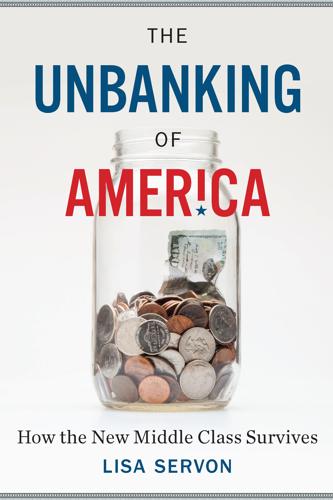
The Unbanking of America: How the New Middle Class Survives
by
Lisa Servon
Published 10 Jan 2017
much higher interest rates: Kelly Dilworth, “Average Credit Card Interest Rates Rise to 15.07 Percent,” CreditCards.com, October 2014. http://www.creditcards.com/credit-card-news/interest-rate-report-100114-up-2121.php 5. PAYDAY LOANS: MAKING THE BEST OF POOR OPTIONS 77 Payday loans are illegal: For the number of states where payday loans are illegal, see Pew Charitable Trusts, “State Payday Loan Regulation and Usage Rates” (Washington, DC: Pew, July 11, 2012). http://www.pewtrusts.org/en/multimedia/data-visualizations/2014/~/media/data%20visualizations/interactives/2014/state%20payday%20loan%20regulation%20and%20usage%20rates/report/state_payday_loan_regulation_and_usage_rates.pdf usage has increased dramatically: For a summary of the emergence of the payday loan industry, see Bruce Miller (Managing Director, Stephens), “Credit: Where We Are and Where We’re Going,” paper presented at FiSCA at 25 Conference, Chicago, October 2012.
…
In these cases, the credit card is the safety net. Whereas failure to repay a payday loan won’t affect a consumer’s credit score, failure to repay a credit card will. Here are two possible answers as to whether the benefits of payday loans outweigh the costs: (1) it depends, and (2) the jury’s still out. One study found that these loans allowed victims of natural disasters in California to pay for hotel rooms and other necessities at a time when banks and other traditional financial institutions failed to provide the small-dollar loans that the displaced people needed. Another study found that payday loans helped borrowers manage their money in the event of a financial setback, such as an unexpected bill for dental care, a reduction in work hours, or auto repair.
…
Another study found that payday loans helped borrowers manage their money in the event of a financial setback, such as an unexpected bill for dental care, a reduction in work hours, or auto repair. Oftentimes people use payday loans because, like Ariane, they find themselves with no other good option. Should they take out a payday loan or have their utilities shut off? Take out the loan or risk losing their job? Several studies find that the benefits of the loans can outweigh the costs in these circumstances. In other words, it depends. Other research indicates that borrowers who use payday loans for unexpected emergencies are the exception rather than the norm. A 2012 study found that only 16 percent of first-time borrowers use the loan to cover unexpected or emergency expenses.
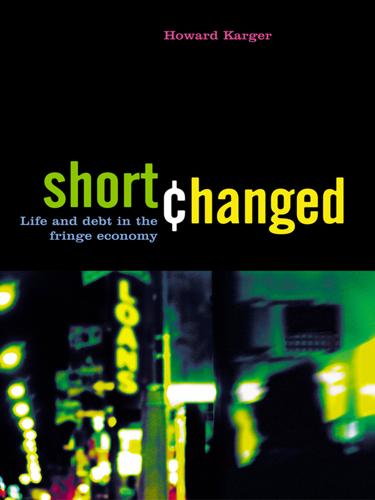
Shortchanged: Life and Debt in the Fringe Economy
by
Howard Karger
Published 9 Sep 2005
Marshal will first ask for their immediate supervisor!”23 THE SPIRALING CYCLE OF PAYDAY LOAN DEBT The real danger in payday loans doesn’t lie in a single transaction where the borrower is exploited; instead, it lies in creating a spiraling cycle of debt. An extreme example is the situation of Lisa Engelkins, who entered into 35 back-to-back payday loan transactions over 17 months, paying $1,254 in fees to extend a $300 payday loan.24 Table 5.1 is an example of a hypothetical payday loan history.76 Ralph Johnson takes out 10 payday loans a year, which is close to the national average. Despite admonitions by payday lenders that “a cash advance is a short-term solution to an immediate need, it is not intended for repeated use in carrying an individual from payday to payday,”25 these loans are generally not used this way.
…
In the United States, the number of payday lenders grew from a few hundred in 1990 to more than 25,000 in 2002, with the industry expecting to double in size over the next few years.10 In fact, there are now more payday loan shops in America than McDonald’s restaurants.11 The largest payday lenders are Advance America (1,375 stores in 30 states); ACE Cash Express (1,000 stores in 30 states); Check ‘n Go (800 stores in 26 states); Dollar (700 stores in 24 states); Check into Cash (650 stores in 24 states); and Cash America International (470 stores in 18 states).12 The growth of the payday industry has been explosive, with loan volume rising from $10 billion in 2000 to $25 billion by 2003. This $25 billion included 83 million payday loans costing 7.6 million customers about $3.4 billion.13 Surprisingly, this growth occurred despite 19 states’ prohibiting payday loans at triple-digit interest rates.14 Payday loans (also known as “payday advances” or “deferred deposit loans”) are about twice as profitable as standard pawn-based loans.15 In 2002 the percentage of payday loans charged off as uncollectible in Virginia was 3.4%. In North Carolina, only 6% of payday checks were returned for insufficient funds (NSF).
…
However, a 2003 study by the Southwest Center for Economic Integrity found that 67% of payday borrowers used their loans to pay general nonemergency bills.26 For many people, payday loans lead to a pattern of chronic borrowing and chronic debt. Table 5.1. Connie’s $300 payday loan. According to the Center for Responsible Lending, only 1% of all payday loans go to one-time emergency borrowers who pay their loan within two weeks and don’t borrow again within a year. Conversely, 66% of borrowers initiate 5 or more loans a year, and 33% take out 12 or more loans a year. Ninety-one percent of all payday loans are made to borrowers with five or more loans a year. On average, payday customers receive 8-13 loans a year.

How the Other Half Banks: Exclusion, Exploitation, and the Threat to Democracy
by
Mehrsa Baradaran
Published 5 Oct 2015
Consider the following comments that the CFBP and the Pew Charitable Trusts gathered from payday lending customers in support of payday loans:69 “Well I can say I normally get a payday loan only for emergency like [sic] if I need to pay a bill. I feel I get great service and the money I need.” —J. B. from Birmingham, AL “I have unfortunately had to use the services of the Payday loans. Again, unfortunately it is easier to get these loans than to apply for and receive a loan from the bank that is using your money to supply others with loans and other functions.” —D. M. from Alliance, OH “Payday loans have helped several times when bills and unexpected circumstances arise.
…
“On average, a payday loan takes 36 percent of a person’s pre-tax paycheck, Bourke [project director at Pew] said.” “States with Highest, Lowest Payday Loan Rates,” USA Today, April 20, 2014, accessed March 17, 2015, www.usatoday.com/story/money/personalfinance/2014/04/20/id-nv-ut-have-among-highest-payday-loan-rates/7943519/. 44. Richard Cordray, “Remarks at the Payday Field Hearing,” March 25, 2014, accessed March 17, 2015, www.consumerfinance.gov/newsroom/director-richard-cordray-remarks-at-the-payday-field-hearing/. 45. CFPB, “Ask CFPB: What Is a Payday Loan?,” accessed September 29, 2014, www.consumerfinance.gov/askcfpb/1567/what-payday-loan.html. 46. Ibid. 47. According to a study done by the Center for Responsible Lending, the median loan-to-value ratio among borrowers is 26 percent.
…
“One summary measure suggests a common pecuniary mistake: two-thirds of the matched sample has at least $1000 of credit card liquidity on the day they take their first payday loans, much more than the typical $300 payday loan. For a two-week payday loan with a finance charge of 18 percent, using credit card liquidity first would save these households $300 … if the credit card APR is 18 percent.” Sumit Agarwal, Paige M. Skiba, and Jeremy Tobacman, “Payday Loans and Credit Cards: New Liquidity and Credit Scoring Puzzles?,” NBER working paper no. 14659, January 2009, accessed March 17, 2015, www.nber.org/papers/w14659. 93.
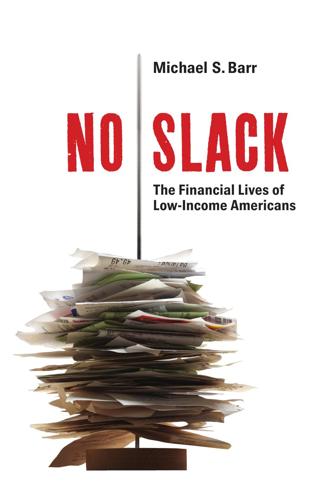
No Slack: The Financial Lives of Low-Income Americans
by
Michael S. Barr
Published 20 Mar 2012
Only 4 percent of respondents say they “looked into getting a loan of $100 or more from a check casher, payday-loan store, or other place that gives you a payday loan” during the three years preceding the survey interview. Only 3 percent report having taken the payday loan from the lender during the year before the survey interview. Part of the reason that so few respondents approach payday lenders may be the restrictive qualifications for loan eligibility. As a general requirement, a source of steady income and a checking account are necessary to qualify for a payday loan. As table 6-1 suggests, however, payday borrowers are much more likely than non–payday borrowers to use a wide variety of other forms of short-term credit.
…
Rather than using each alternative service as a substitute, low-income borrowers use payday loans, pawnshops, refund anticipation loans, rent-to-own contracts, and other formal and informal credit services as complementary products. While payday lending services have driven growth in the AFS sector over the past fifteen years and garnered significant public attention, payday loan services are still a lending practice on the financial fringe for LMI households. As table 2-7 shows, only 4.4 percent of respondents say they recently sought out a payday loan. Part of the reason so few respondents approach payday lenders might be the restrictive eligibility qualifications, including holding a bank account and a steady job.
…
An open question in the literature on alternative financial services is whether these AFS providers act as substitutes for one another and for formal-sector financial services or whether borrowers use a range of services depending on the situation. The Detroit study suggests that the services are usually interrelated. Tables 2-8 and 2-9, for example, show that, overall, respondents who use other types of credit are also more likely to use payday loans. For instance, those using 12864-02_CH02_3rdPgs.indd 44 3/23/12 11:55 AM managing money 45 Table 2-8. Use of Payday Loans among Users of Other Alternative Financial Services Percent Payday loan use Other AFS a Pawnshop Cash advance RAL Rent-to-own Pension cash-out Overdraft By users of other AFS By nonusers of other AFS 16 14 9 16 12 13 3 4 3 4 4 2 Source: Detroit Area Household Financial Services study. a.
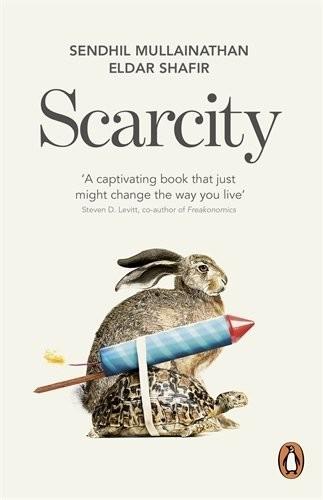
Scarcity: The True Cost of Not Having Enough
by
Sendhil Mullainathan
Published 3 Sep 2014
Like all the worthy goals that do not matter when you’re speeding to the hospital, the long-term economics of the payday loan do not matter at that moment. This is why payday loans are so attractive—people turn to them when they are tunneling on putting out a fire. And their best feature is that the loans put out this fire, quickly and effectively. Their worst feature—that the fire will return in the future, possibly enlarged—is obscured. Of course, none of this is unique to payday loans or to money. Think about putting off answering an e-mail. When we take on this time debt, we focus on the benefits: “Right now I need to get other things done.”
…
Why not instead think about financial products, logistical interventions, or working conditions that help workers deal with financial volatility and help clear some bandwidth? Here is a stark example. Many workers, as we saw in chapter 5, resort to payday loans. Yet it’s worth observing that a payday loan is often simply a loan against work that has already been done. The worker who takes a payday loan halfway through the pay cycle has already earned half her paycheck. The need for a loan is largely due to the fact that payment happens with a delay. Why should an employer have workers taking these loans, potentially falling into scarcity traps, taxing bandwidth, and resulting in lower productivity, especially when the employer can himself give pay advances at low cost?
…
Sandra’s practice of rolling over and accumulating fees is also common. Three-quarters of all payday loan volume comes from rollovers, ultimately accounting for $3.5 billion in fees each year. Why do those strapped for cash take on such extreme loans that they cannot afford to pay back? Why do they allow themselves even to start down such a slippery slope? Such questions typically lead to debates about the importance of personal responsibility or about how unscrupulous businesses prey on low-income individuals; they fuel discussions about the myopia of the poor and the need for financial education. Consumer advocates bemoan the payday loan industry as predatory and push to ban these loans.
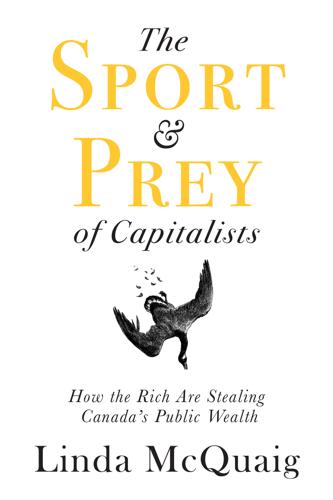
The Sport and Prey of Capitalists
by
Linda McQuaig
Published 30 Aug 2019
The bill can quickly skyrocket, leaving the borrower paying hundreds — if not thousands — of dollars in excess interest costs. The Financial Consumer Agency of Canada, the federal government’s consumer protection watchdog, observes in an understatement that payday loans are “an expensive way to borrow money” but that the demand for them is growing: while one in fifty Canadians turned to payday loans in 2009, that number rose to one in twenty-five in 2014. According to the Canadian Payday Loan Association, almost two million Canadians resort to payday loans each year.27 All this points to the crying need for a banking system that isn’t based on exploiting the desperation of financially vulnerable people.
…
But the task force went on to scuttle even this option by suggesting that it might be hard for the post office to find banks or credit unions agreeing to such a partnership.30 As for the serious problem of payday loan operators, the task force saw little help the post office could offer. The task force reached this surprising conclusion again due to the extensive input of the bankers’ association, which “indicated that many users of payday loan lenders choose the service because of the relative anonymity it affords.” Really? Apparently, the bankers’ word on this was enough to dismiss reports that hundreds of thousands of low-income Canadians pay the punishing interest rates demanded by payday loan operators, not because they want to be anonymous, but because no other banking option exists for them.
…
According to the Canadian Payday Loan Association, almost two million Canadians resort to payday loans each year.27 All this points to the crying need for a banking system that isn’t based on exploiting the desperation of financially vulnerable people. A public banking system, operated through the post office, could fill that ticket. And it could do so without financial risk to taxpayers. Payday loans are offered only to individuals with a reliable source of income, either from an employer or from the government. This means a postal bank could safely offer a payday loan — but at a dramatically lower interest rate, notes Anderson. For example, with an annualized rate of 29 percent, similar to what the banks charge on their credit cards, a borrower would pay $1.11 for a two-week loan of one hundred dollars, rather than fifteen dollars. The postal bank could still make a profit, while the low-income borrower would be spared explosive interest charges.
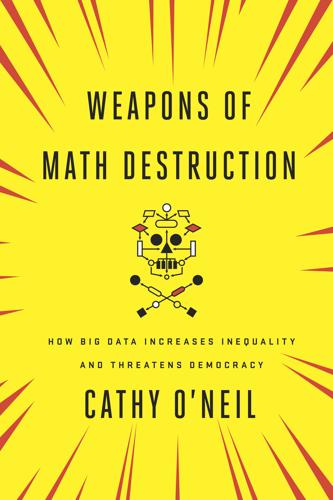
Weapons of Math Destruction: How Big Data Increases Inequality and Threatens Democracy
by
Cathy O'Neil
Published 5 Sep 2016
American Express learned this the hard way: Ron Lieber, “American Express Kept a (Very) Watchful Eye on Charges,” New York Times, January 30, 2009, www.nytimes.com/2009/01/31/your-money/credit-and-debit-cards/31money.html. Douglas Merrill’s idea: Steve Lohr, “Big Data Underwriting for Payday Loans,” New York Times, January 19, 2015, http://bits.blogs.nytimes.com/2015/01/19/big-data-underwriting-for-payday-loans/. On the company web page: Website ZestFinance.com, accessed January 9, 2016, www.zestfinance.com/. A typical $500 loan: Lohr, “Big Data Underwriting.” ten thousand data points: Michael Carney, “Flush with $20M from Peter Thiel, ZestFinance Is Measuring Credit Risk Through Non-traditional Big Data,” Pando, July 31, 2013, https://pando.com/2013/07/31/flush-with-20m-from-peter-thiel-zestfinance-is-measuring-credit-risk-through-non-traditional-big-data/.
…
They’re opaque, unquestioned, and unaccountable, and they operate at a scale to sort, target, or “optimize” millions of people. By confusing their findings with on-the-ground reality, most of them create pernicious WMD feedback loops. But there’s one important distinction between a school district’s value-added model and, say, a WMD that scouts out prospects for extortionate payday loans. They have different payoffs. For the school district, the payoff is a kind of political currency, a sense that problems are being fixed. But for businesses it’s just the standard currency: money. For many of the businesses running these rogue algorithms, the money pouring in seems to prove that their models are working.
…
The greatest divide is between the winners in our system, like our venture capitalist, and the people his models prey upon. Anywhere you find the combination of great need and ignorance, you’ll likely see predatory ads. If people are anxious about their sex lives, predatory advertisers will promise them Viagra or Cialis, or even penis extensions. If they are short of money, offers will pour in for high-interest payday loans. If their computer is acting sludgy, it might be a virus inserted by a predatory advertiser, who will then offer to fix it. And as we’ll see, the boom in for-profit colleges is fueled by predatory ads. When it comes to WMDs, predatory ads practically define the genre. They zero in on the most desperate among us at enormous scale.

Fixed: Why Personal Finance is Broken and How to Make it Work for Everyone
by
John Y. Campbell
and
Tarun Ramadorai
Published 25 Jul 2025
The standard measure of credit cost is the annual percentage rate, or APR: the interest rate that would be charged on a loan over a period of one year.31 The APR can be compared across bank loans, credit card balances, payday loans, and other forms of short-term credit, and the general principle is to borrow at the lowest available APR. Even a small charge, such as $20 for a $300 two-week payday loan, translates into a very high APR when money is borrowed for a short period of time. In this example the APR of the loan is 501%!32 This startling figure is an indication that payday loans, while simple and convenient, are extraordinarily expensive. People experiencing financial emergencies often pay more attention to the speed of credit access than to its cost, and despite APR disclosure laws some unscrupulous lenders encourage this mistake.
…
In many other countries, such as the United Kingdom, consumers no longer choose banks on this basis, and branches—which had no other purpose—have become few and far between, as in London, where Tarun Ramadorai lives. 15. Jeannette Bennett, “Fast cash and payday loans,” Federal Reserve Bank of St Louis, April 10, 2019, https://research.stlouisfed.org/publications/page1-econ/2019/04/10/fast-cash-and-payday-loans, cites an estimate that in 2017 there were 14,348 payday loan storefronts in the United States, comparable to the number of Starbucks coffee shops and slightly greater than the number of McDonald’s restaurants in the same year. The National Association of Realtors had 1.46 million members in 2020: “Number of National Association of Realtors members in the United States from 2009 to 2023,” Statista, September 30, 2024, https://www.statista.com/statistics/196269/us-national-association-of-realtors-number-of-members-since-1910/. 16.
…
For issues in personal finance, see, for example, Patrick A. Lach, Leisa Reinecke Flynn, and G. Wayne Kelly, “Brokers or investment advisers? The US public perception,” Financial Analysts Journal 75 (2019): 125–131. 66. Alex Horowitz, “How to reform state payday loan laws”, June 8, 2023, https://www.pewtrusts.org/en/research-and-analysis/articles/2023/06/08/how-to-reform-state-payday-loan-laws. Chapter Ten: We Can Do Better 1. Timur Kuran, “Islamic economics and the Islamic subeconomy,” Journal of Economic Perspectives 9, no. 4 (1995): 155–173, provides an introduction to Islamic finance. 2. Cross-country differences in household financial behavior are documented in Luigi Guiso, Michael Haliassos, and Tullio Jappelli, Household Portfolios (MIT Press, 2002); Cristian Badarinza, John Y.
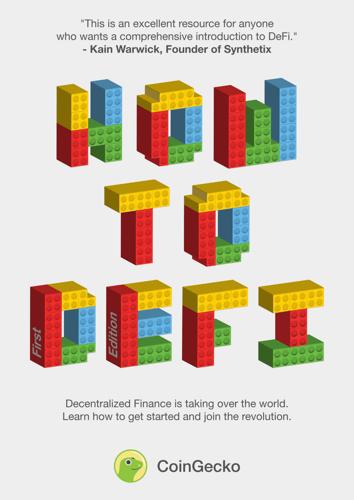
How to DeFi
by
Coingecko
,
Darren Lau
,
Sze Jin Teh
,
Kristian Kho
,
Erina Azmi
,
Tm Lee
and
Bobby Ong
Published 22 Mar 2020
“PoolTogether raises $1 Million to Expand Prize Linked ....” 3 Feb. 2020, https://medium.com/pooltogether/pooltogether-raises-1-million-to-expand-prize-linked-savings-protocol-eb51a1f88ed8. 15. “Payday Loans: Disadvantages & Alternatives – Debt.org.” https://www.debt.org/credit/payday-lenders/. 16. “People are arrested after falling behind on payday loans.” 23 Feb. 2020, https://www.cnbc.com/2020/02/22/people-are-arrested-after-falling-behind-on-payday-loans.html. Accessed 24 Feb. 2020. 17. “Argentina inflation expected at 53% in December ... – Reuters.” 11 Sep. 2019, https://www.reuters.com/article/argentina-economy/argentina-inflation-expected-at-53-in-december-2019-treasury-officials-idINKCN1VX09U. 18.
…
We think that Sablier has the potential to help those who live paycheck to paycheck. These people are those most vulnerable to delays in their income, where even a few days of delay would mean that they do not have the means to put food on the table. And when that happens, they often resort to payday loans—a short term, uncollateralized loans with very high interest rates (up to 500% APR).15 With astronomical interest rates and limited income, payday loan lenders are especially susceptible to debt spirals—one that has seen many arrested in the US for being unable to repay their loan.16 Trust Streamed payment can be especially useful for new, remote contract workers who prior to this had to trust their new employers to actually pay them for the work they do.
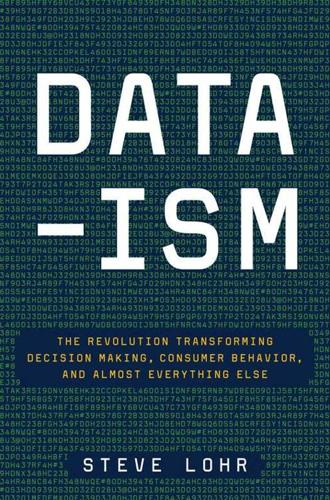
Data-Ism: The Revolution Transforming Decision Making, Consumer Behavior, and Almost Everything Else
by
Steve Lohr
Published 10 Mar 2015
“Underwriting, Meet Big Data” is the ZestFinance corporate motto. A typical payday loan, Merrill explains, is for a few hundred dollars for two weeks, and rolls over ten times, or twenty-two weeks. The fees are all paid first, with the principal due at the end—a cycle that repeats every time the loan is rolled over. In a traditional payday loan, he says, a person pays $1,500 to borrow $500 over twenty-two weeks. Using ZestFinance, Merrill says, a borrower generally pays $920 to borrow $500 for twenty-two weeks—still a lot but far less than a standard payday loan. The payments along the way pay off both interest and principal.
…
His company’s creation story starts with a call from his sister-in-law, Victoria, who needed new snow tires to get to work and was out of cash. Merrill asked what she would have done if she had not been able to reach him, and he recalls that she told him that she would have taken out another “payday loan.” Merrill knew something about finance and risk assessment, but her remark sent him researching the payday lending market—loans made to people with jobs, but with poor credit ratings or none at all. At any given time, an estimated twenty-two million payday loans are outstanding, and the fees paid by payday borrowers amount to $8 billion a year—a lot of money from those in the working population who can least afford it. Merrill saw a market in need of greater efficiency and a business opportunity that would provide the social benefit of lower costs for borrowers in the subprime consumer market.
…
The payments along the way pay off both interest and principal. There is no big “balloon” payment at the end. The better deal for borrowers, Merrill says, is made possible by ZestFinance’s data-sifting algorithms, which reduce the risk of default by 50 percent compared with a typical payday loan. ZestFinance assumes less risk, so it can charge less and still turn a profit on its loans. To make its risk assessments, ZestFinance’s machine-learning models work on tens of thousands of data “signals” in seconds. Its data, Merrill says, comes from many sources, including the Web, third-party information brokers, and credit services. One unconventional data point is how long a person has had his or her current cell phone number (the longer, the better).
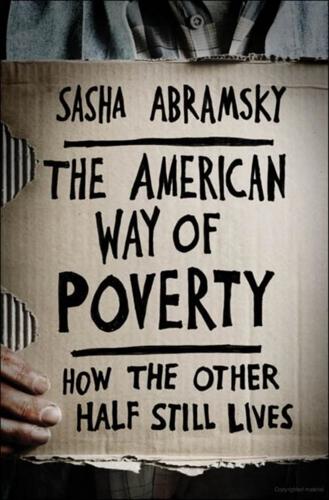
The American Way of Poverty: How the Other Half Still Lives
by
Sasha Abramsky
Published 15 Mar 2013
There are people who are poor because they have made bad choices, gotten addicted to drugs, burned bridges with friends and family—and then there are people who have never taken a drug in their lives, who have huge social networks, and who still can’t make ends meet. There are people who have never held down a job, and others who hold down multiple, but always low-paying, jobs, frequently for some of the most powerful corporations on earth. There are people who have never had a bank account and use payday loans and other predatory lending sources whenever they need access to extra cash, and there are others who, during more flush times, owned huge suburban houses and expensive cars. There are children whose only hot meals are what they are given at school, and young adults who have nothing now and never really had anything earlier in life either.
…
The young couple with four children had recently moved from Albuquerque, New Mexico, to a small, impoverished community in California’s Central Valley so that her husband could take up a new job with the company. His health benefits were due to begin in January. But, a few weeks beforehand, Megan’s appendix ruptured; lacking medical insurance, the family was bankrupted by close to $100,000 in medical bills. Their credit shattered, they resorted to borrowing from one payday loan company after another. Five or six days after I was home from the hospital, I got my first hospital bill. About two weeks after that, I got my first failure to pay notice, saying that “you have not paid your $96,000 hospital bill.” The dollar pay raise had knocked us off housing benefits; we went from $612 rent to $1,030 rent.
…
This happened to 61-year-old grandmother Marta Montano, a night porter in a nonunion casino in Las Vegas, who racked up medical bills paying both for the hospitalization of a young niece she was caring for and also for her own medical treatments. Montano ended up owing $18,000 and had to file for bankruptcy. She lost her credit and was reduced to borrowing from payday loan companies to make her monthly rent—loans that, when we met more than a year after she took them out, she had not been able to make a dent in repaying. On her feet all night every night, Montano couldn’t afford new shoes; those she had were worn down and worn through. When she came home in the early morning and removed her broken shoes, her legs ached, and the nerves in her back shot fire up her spine.

A Hacker's Mind: How the Powerful Bend Society's Rules, and How to Bend Them Back
by
Bruce Schneier
Published 7 Feb 2023
I could probably write an entire book about how companies and industries hack regulations that limit their profits, but I’ll just offer a couple more examples. Payday loans are short-term loans targeted at poor people, generally made in small amounts at astronomically high interest rates. Four-fifths of borrowers renew or roll over the loans, trapping themselves in a vicious cycle of debt, interest, and fees, and resulting in an average interest rate of 400% per year, plus fees. States have worked to regulate the payday loan industry and reduce the interest rates it can charge, but the payday loan companies have consistently found ways around the rules. They branched out into issuing installment loans instead of loans where the full repayment is due the next payday—thus technically skirting the definition of payday loans.
…
They branched out into issuing installment loans instead of loans where the full repayment is due the next payday—thus technically skirting the definition of payday loans. They also operate as loan brokers: middlemen that can charge unregulated fees. In Montana, payday loan providers moved to Indian reservations to avoid state and federal regulation. In 2020, the Trump administration’s Consumer Financial Protection Bureau (CFPB) rolled back a whole list of new regulations that would have restricted the most predatory practices of this industry. One final story: During the COVID-19 pandemic, the US and Canada closed their land border to nonessential travel.
…
See hacking normalization norms, 19, 66 NOW accounts, 74–75 One Subject at a Time Act, 151 online games, 186 Organization for Economic Co-operation and Development (OECD), 129–30 Ornstein, Norm, 156 outrage, 184 “ox walking,” 156 Pacific Investment Management Company, 111–12 Palin, Sarah, 154 paper money, 174 patching, 49–52 AI hacking and, 238–39, 240 automatic, 50 cognitive hacks and, 182 for ATM hacks, 32, 33 financial exchange hacks and, 80, 85 hacking hierarchy and, 201 hacking life cycle and, 23–24 hacking normalization and, 77 hotfixes, 52 impossibility of, 53–54 regulation avoidance and, 125 tax hacks and, 15–16, 51 technology and, 50–51 patent law, 137 payday loans, 125–26 persona bots, 221–22, 225–26, 274n persuasion, 188–90, 218–19, 220–23 Petraeus, David, 26 Phillips, David, 38, 39–40 phishing, 192, 216 Piketty, Thomas, 250 Pitts, Billy, 267n Podesta, John, 191 point-of-purchase placement, 184 polarization, 185, 196, 197 policy hacks. See administrative burdens political hacks AI hacking and, 220–22, 225–26, 274n design process and, 60 fear and, 196, 197 lobbying as, 77, 78, 146–47 norms and, 66–67 See also election hacks; legislative process hacks poll taxes, 164 pop-up ads, 183, 184 Powell, Colin, 192 power advantages.

Hand to Mouth: Living in Bootstrap America
by
Linda Tirado
Published 1 Oct 2014
No matter what sort of credit rating you have, if your car’s water pump goes out, you can’t get a $300 loan from a bank. When something like that happens, some small emergency that I can’t actually afford until the next paycheck, I’ve generally had three options: a payday loan, borrowing from friends, or doing without. My friends aren’t always exactly flush themselves, leaving me with two choices: make it to work or not. When I’ve lived in the country or cities without good public transportation, making it to work has generally meant payday loans. I’m kind of torn about payday lenders—the storefront small lenders that everyone’s up in arms about. The way these places work is pretty simple: You give them some kind of collateral, like a postdated check, if you have a checking account, or a car title.
…
I figure that at some point it will occur to someone, somewhere, that the reason there are so many payday loan places is that there are so many people whose checks simply will not last a whole pay period unless everything goes perfectly, and that people who have things like perfect weeks aren’t the sorts of people who’ve ever cashed a check at Wal-Mart at three a.m. because they ran out of the napkins they’d been using as toilet paper for two days. Those people will find a less shitty way of doing business; perhaps someone can start a nonprofit bank that charges minimum fees or something. For now, we have our fees to pay. I put furniture rental in the payday loan column because rental places are in the business of letting poor people have nice things for more than retail.
…
They’d call constantly. And they call for years. Meanwhile, clearly it’s usury to charge 400 percent APR. So I should be wholeheartedly against them, right? But the thing is, I’m not. Because they do serve a purpose that no one else does for poor people. I don’t think in terms of annual APRs when I’m getting a payday loan. I think of it as a $15 poor tax. Every time we need to borrow $100 for a week, it costs $15. Are these places preying on the weak? Yep. Is it less moral than huge banks preying on the same demographic? Probably not, and those assholes have never bailed me out of a tight spot before. The payday places, evil empire though they are and all, actually do fill a niche where there’s a real need.

The Corruption of Capitalism: Why Rentiers Thrive and Work Does Not Pay
by
Guy Standing
Published 13 Jul 2016
It has increased the fragility of the economy and the probability of another financial crash. Payday loans, credit card and catalogue debt are the bane of the precariat. Finance imposes extra costs on the economically disadvantaged. Those in and out of casual jobs, with fluctuating low incomes, dependent on state benefits, or with a record of debt, however petty or short-lived, are often denied cheaper forms of credit and must borrow or obtain credit from lenders who charge much higher rates. This further increases social income inequality. Payday loans, perhaps the most parasitic rent-extraction practice, came to prominence after the financial crash of 2008.
…
These very short-term loans at eye-watering rates of interest aim to tide people over for a few days before payday when their low wages run out. In the USA, payday loan storefronts outnumber McDonald’s restaurants and are the prime source of credit for 90 million unbanked Americans. The average unbanked household pays more than $2,400 each year for storefront financial services, even though they are banned in fourteen US states. And some of these lenders are operated or backed by the very Wall Street banks that refuse cheap loans to poor people.20 In Britain, the coalition government eventually introduced rules to limit the predatory behaviour of payday loan companies, which were charging financially illiterate people as much as 5,000 per cent annual interest and deducting money from borrowers’ bank accounts without their say-so.
…
While this may deter some from starting or expanding buy-to-let activities, it does nothing to shrink the pool of existing buy-to-let debt. Landlords with large mortgages will be in trouble if interest rates rise. This new form of debt seems as risky as any other. PREDATORY CREDITORS: CREDIT CARDS, CATALOGUES AND PAYDAY LOANS ‘I use Mastercard to pay Visa.’ Bumper sticker Rent-seeking capitalism relies on inducing people to spend more than they can safely afford. This contrasts with the old Fordist model, in which corporations were encouraged to pay decent wages – a practice started by Henry Ford for his employees – on the grounds that workers had to be able to buy the goods and services being produced.

Big Business: A Love Letter to an American Anti-Hero
by
Tyler Cowen
Published 8 Apr 2019
Harvard Business School. Silvergate, Harvey. 2011. Three Felonies a Day: How the Feds Target the Innocent. New York: Encounter Books. Skiba, Paige Marta. 2012. “Regulation of Payday Loans: Misguided?” Washington and Lee Law Review 69 (2): 1023–1049. Skiba, Paige Marta, and Jeremy Tobacman. 2011. “Do Payday Loans Cause Bankruptcy?” Vanderbilt Law and Economics Research Paper No. 11–13, December 1, 2011. Skiba, Paige Marta, and Jeremy Tobacman. 2008. “Payday Loans, Uncertainty, and Discounting: Explaining Patterns of Borrowing, Repayment, and Default.” Vanderbilt Law and Economics Research Paper No. 08–33, August 21, 2008.
…
“The Market for Financial Adviser Misconduct.” NBER Working Paper No. 22050. National Bureau of Economic Research, Washington, DC. Ehrenfreund, Max. 2016. “A Majority of Millennials Now Reject Capitalism, Poll Shows.” Washington Post, April 26, 2016. Elliehausen, Gregory. 2009. “An Analysis of Consumers’ Use of Payday Loans.” Monograph No. 41. Financial Services Research Program, George Washington University. Elson, Charles M. 2003. “What’s Wrong with Executive Compensation?” Harvard Business Review, January 2003. Enns, Peter K. 2015. “Relative Policy Support and Coincidental Representation.” Perspectives on Politics 13 (4): 1053–1064.
…
International Journal of the Economics of Business 11, no. 3 (November): 369–378. Larcker, David F., Nicholas E. Donatiello, and Brian Tayan. 2017. “CEO Talent: America’s Scarcest Resource? 2017 CEO Talent Survey.” Stanford Graduate School of Business, Stanford University, September 2017. Lawrence, Edward C., and Gregory Elliehausen. “A Comparative Analysis of Payday Loan Customers.” Contemporary Economic Policy 26, no. 2 (April): 299–316. Lea, Richard. 2015. “The Big Question: Are Books Getting Longer?” Guardian, December 10, 2015. Lee, Michelle Ye Hee, and Elise Viebeck. 2017. “How Congress Plays by Different Rules on Sexual Harassment and Misconduct.” Washington Post, October 27, 2017.

The Quiet Coup: Neoliberalism and the Looting of America
by
Mehrsa Baradaran
Published 7 May 2024
The few states that have tried to drive these lenders out by imposing rate caps have been thwarted by the porous and loophole-laden federal preemptions, thanks to Court decisions like Marquette Nat. Bank. Banning usurious lending is a losing game of whack-a-mole where lenders can move faster than state legislators. Ban a payday loan and it changes into a title loan; try to impose fee limits and “fees” turn into insurance or “tips.” Walmart, for instance, offers its employees “wage access,” which gives workers a payday loan from their own future wage earnings, but with interest, or rather mandatory “tips,” paid to the lender.31 Thanks to right-wing-funded groups like the American Legislative Exchange Council, statehouses are regularly supplied with form legislation funded and drafted by industry, making it easier to conduct their business in the state.
…
Express Co. v. Italian Colors Rest., 570 U.S. 228 (2013). 29. “Payday Lending in America: Who Borrows, Where They Borrow, and Why,” Pew Charitable Trusts, 2012. 30. “Payday Loan Facts and the CFPB’s Impact,” Pew Charitable Trusts, January 14, 2016. 31. Nakita Cuttino, “The Rise of ‘Fringetech’: Regulatory Risks in Earned Wage Access,” Northwestern University Law Review 115, no. 6 (2020): 1505. 32. Stephen J. Dubner, “Are Payday Loans Really as Evil as People Say?” Freakonomics.com, April 6, 2016. 33. Joe Valenti and Eliza Schultz, “How Predatory Debt Traps Threaten Vulnerable Families,” Center for American Progress, October 6, 2016. 34.
…
By changing the terms of the debate, neoliberals have produced outcomes that are anti-government-regulation and pro-business. Every gay couple claiming equality and every woman arguing for bodily autonomy has to argue for their right based on what some Founding Father intended hundreds of years ago; every agency attempting to regulate an environmental toxin, a payday loan, or an unsafe drug must convince a judge steeped in Law and Economics that the market costs of the proposed rule will not outweigh the market benefits. These tests and measures themselves have no constitutional backing whatsoever—the Constitution has been interpreted and reinterpreted for hundreds of years through a shifting set of legal doctrines; and even Madison and Hamilton could not agree on which of those was more valid than the other.
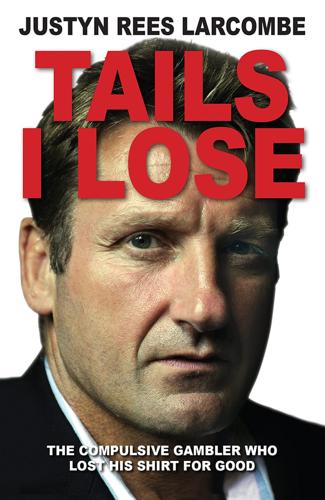
Tails I Lose: The Compulsive Gambler Who Lost His Shirt for Good
by
Justyn Rees
Published 25 Jun 2014
he asked me. “Um… well, now, really. I could pay you back in about six months. I have a dividend payment due in January.” Alex didn’t ask any questions. He wrote me a cheque there and then. I felt guilt as I drove away from the docks. Even when I told myself that the money would clear off all the payday loans, I still felt wretched. I had lied about something I knew Alex would respond to. It wasn’t just a lie, it was betrayal. What kind of a friend was I? I flicked on the radio. The sports bulletin followed the news headlines. Andy Murray was involved in a tight tennis match against Roger Federer; the final set was about to start.
…
Almost all my money was now disappearing to service my debt and pay for groceries and essential bills. I let the rent slip, but luckily the landlord had either not noticed, or was being incredibly nice by not chasing me. In order to feed my gambling habit, I looked elsewhere for credit. When I had taken out as many payday loans as I could, I called my mother and arranged to see her. Like Alex, she was so pleased to see me. Her home in Kent was a long way from Derbyshire and my visits had become less frequent. I think she was a little worried about signing the guarantor loan documents when I laid them out before her, but I assured her that I had an excellent opportunity to buy more shares in the company and that I would repay her long before the term of the loan ended.
…
I watched dust particles dance in a ray of sunlight as I lay on the floor, still holding the phone long after I’d said goodbye. Tuesday’s meeting didn’t take long. Over the weekend, they had looked at the emails in my account from the last few months and discovered that more than half the communications were from payday loan companies. It was quite clear I couldn’t continue as an account director. We came to an agreement which avoided a disciplinary hearing. I had shares to cover the payments on my card. The whole thing was managed efficiently and sensitively. But I was now out of work, with little prospect of ever again working in the industry of which I had once been at the very pinnacle.
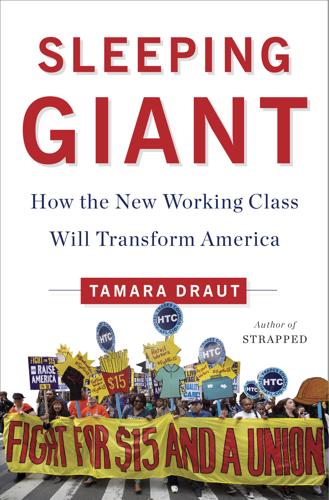
Sleeping Giant: How the New Working Class Will Transform America
by
Tamara Draut
Published 4 Apr 2016
Despite the fact that Javier and his wife work as close to full-time as they can (she works at Big Lots), the couple has needed to rely on payday loans to pay their bills, which perversely became harder to meet after their household income rose high enough to disqualify them for food stamps. The payday loan payment comes directly out of Javier’s paycheck—a $300 bite out of a $700 paycheck, accumulating interest at an annual rate of 200 percent. These are hard facts for Javier to swallow. “I really don’t want to be stuck with those payday loans,” he told me. “Everything else, God provides. We have clothes. We go to food banks, they provide food.”
…
A Better Deal would mean that all children would grow up in the United States with the knowledge that we want them to fulfill their dreams and have invested in a high-quality combination of higher education and training options for them to do just that. A Better Deal would mean that Javier, whom we met in Chapter 3, who stocks shelves in the freezer department at Walmart, wouldn’t have to rely on payday loans to pay his bills, because his paycheck, and his wife’s paycheck from working in retail, would be enough to pay the rent and keep the fridge stocked and the lights on. It would mean that their children, unlike Javier, who dreamed of going to college but had neither the cultural nor the financial resources to do so, would grow up knowing that this country makes it possible for anyone, regardless of their background, to get the education or training they want to be their best.

The View From Flyover Country: Dispatches From the Forgotten America
by
Sarah Kendzior
Published 24 Apr 2015
Locals can trade their weapons for household items, or vice versa. It is one of many examples of one of the most overlooked stories in the great recession: the explosion of pawnshops and payday loan outlets throughout the U.S. Between 2009 and 2011, the rate of Americans using high-cost nonbank credit soared to 14 percent, and included a rise in population segments once considered economically advantaged, but now unable to afford daily needs. Pawnshops and payday loans are the flip side of the United States’ turn to charity over justice. Both phenomena speak to a seemingly permanent impermanence: the replacement of a reliable salary for hard work, with high-cost gambles and unpredictable donations.
…
That new location is often an impoverished suburb, which lacks the glamour to make it the object of future renewal efforts. There is no history to attract preservationists because there is nothing in poor suburbs viewed as worth preserving, including the futures of the people forced to live in them. This is blight without beauty, ruin without romance: payday loan stores, dollar stores, unassuming homes, and unpaid bills. In the suburbs, poverty looks banal and is overlooked. In cities, gentrifiers have the political clout—and accompanying racial privilege—to reallocate resources and repair infrastructure. The neighborhood is “cleaned up” through the removal of its residents.
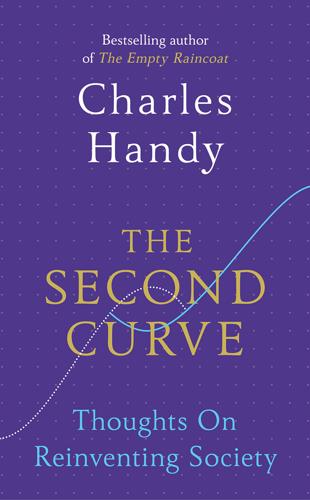
The Second Curve: Thoughts on Reinventing Society
by
Charles Handy
Published 12 Mar 2015
Too many are happily living a Ponzi life, paying today’s expenditure with tomorrow’s money, and will come to rue it when their incomes sag or the cost of credit rises and mortgages become expensive once again. These debts are making a nonsense of much of the welfare system at the poorer levels of society where half of the benefits paid out can go straight away to pay the interest on payday loans, with not enough left over to live on, let alone pay off the original loan. It can be a trap for life. Businesses will tell you that credit, or gearing as they call it, is no bad thing in moderation. It allows you to grow without waiting for your savings to accumulate. Gearing is only a fancy term for ‘buy now pay later’.
…
Like more ordinary folk, they can’t win in the long run. A Ponzi mindset has come to be endemic in modern society. It is too easy to live in the present and let the future take care of itself. Except that it never does. Borrowing from the future to pay for today is made all too easy by those who make their money from our liabilities. Payday loans, logbook finance, where people borrow against their cars, interest-free offers from retailers, all encourage us to postpone the payback day and hope that something will turn up before it is too late. Ponzi thinking is addictive, and dangerous. We can lose control of our lives, living at the behest of our creditors.
…
Alternatively and more usefully, governments could help us to discipline ourselves by requiring all borrowers to provide details of their existing financial state when applying for a loan of any sort. This is already happening in Britain, with increasingly stringent requirements for affordability tests for mortgages and payday loans. That requirement in itself could be a wake-up call to review one’s whole financial situation, including provision for the longer-term future. Credit and affordability checks in themselves are not enough. They do provide useful warning signs but they don’t provide the answers to the problems they throw up, other than to say you can’t have this loan or this purchase.
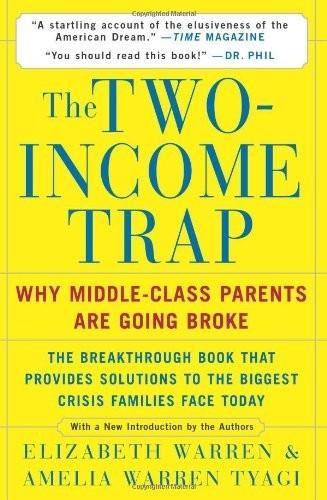
The Two-Income Trap: Why Middle-Class Parents Are Going Broke
by
Elizabeth Warren
and
Amelia Warren Tyagi
Published 17 Aug 2004
Similarly, when Texaco executives were accused of using racial slurs to refer to African Americans, the company was boycotted, sued for millions of dollars, and forced to adopt new practices to ensure that its black employees had better opportunities. 107 But when a Citibank official said in sworn affidavits that she regularly added extra fees to a home mortgage “[i]f someone . . . was a minority,” there was little response. Citibank quietly agreed to a cash settlement with the FTC, and there were no press releases from the NAACP, no interviews on the evening news, no calls for Citibank’s highly visible CEO, Sandy Weill, to resign. Subprime lending, payday loans, and the host of predatory, high-interest loan products that target minority neighborhoods should be called by their true names: legally sanctioned corporate plans to steal from minorities. Many years ago, a host of community groups worked together to oppose discriminatory lending and to help pass the Community Reinvestment Act despite stiff opposition from the banking industry.
…
Available at http://www2.fdic.gov/hsob/ [3/20/2003]. 75 The nine interest rate cuts by the Federal Reserve in 2001 did not affect most fixed-rate cards and had only modest effects on variable-rate cards. Cecily Fraser, “A $10 Billion Windfall: Credit Card Lenders Don’t Pass on Full Interest-Rate Cuts,” CBS MarketWatch.com, October 3, 2001. Available at http://www.cbs. marketwatch.com [2/2/2003]. 76 Interest on so-called payday loans can be in the 300-1,000 percent range. FDIC, Payday Lending FYI: An Update on Emerging Issues in Bankruptcy (January 29, 2003). 77 Mansfield, “The Road to Subprime ‘HEL’,” pp. 492-495. The initial Depository Institutions and Monetary Control Act (DIDMCA), which allowed banks to pay higher interest to depositors and preempted state usury laws, passed the House on September 11, 1979, by a vote of 367 to 39, and passed the Senate on November 1, 1979, by a vote of 76 to 9.
…
Available at http://www.census.gov/hhes/www/housing/ahs/01adtchrt/tab3-1.html [3/22/03]. 105 HUD, Federal Housing Authority Single Family Mortgage Insurance Foreclosures, Cumulative by Number and Percent, 1982-2002, unpublished data. 106 In Chicago, 41 percent of the city’s subprime refinancing occurs in black neighborhoods, although only 10 percent of the overall refinancing takes place in these same neighborhoods. HUD, Unequal Burden. An Illinois study found that there are 37 percent more payday loans issued in minority neighborhoods than in white neighborhoods. Woodstock Institute, Unregulated Payday Lending Pulls Vulnerable Consumers into Spiraling Debt, Reinvestment Alert Number 14 (Chicago: Woodstock Institute, March 2000). Available at www.woodstockinst.org/alert.pdf [2/2/2003]. 107 In 1996, a Texaco employee revealed secret tape recordings he had made of Texaco executives disparaging African-American employees and discussing the shredding of documents pertaining to a discrimination case.

925 Ideas to Help You Save Money, Get Out of Debt and Retire a Millionaire So You Can Leave Your Mark on the World
by
Devin D. Thorpe
Published 25 Nov 2012
Consider which of these circumstances best describes your situation and follow the guidance to get the most out of your raise. Awash in debt: if you can barely make ends meet each month, it may be because you’re over extended, with credit card debt, car loans and maybe even a payday loan or two that are eating away at every penny you bring home. Put the money from the raise toward the smallest debts—probably the payday loans—to quickly reduce the monthly outflow for debt payments. Barely scraping by: if you’ve been frugal forever and have successfully stayed out of debt, but you haven’t accumulated much and don’t own a home, now is a great time to put your focus on buying a home.
…
If you borrow the money on a more expensive credit card, say one with a 24% interest rate, after three years the monthly deficit will have grown to $204 per month. At the higher interest rate, your debt will have grown to $5,200 instead. These numbers are tame compared to what would happen if you start using payday loans to close the gap in your budget. Payday loans often feature fees and terms that bring the interest rate far above 100% per year. If you use 200% as a low estimate of the cost, after one year your monthly shortfall will have grown to $636 per month and your balance after just one year would be a scary $3,215. Long before three years, your loan balance would exceed what any payday lender would advance.

The Working Poor: Invisible in America
by
David K. Shipler
Published 12 Nov 2008
This pattern prevails in Illinois, for example, where state examiners found that rollovers made up yy percent of all payday loan transactions. The average customer had ten such renewals, which meant paying fees totaling up to twice the amount borrowed.6 Eventually, you may have to borrow from another payday loan merchant to pay the fees at the first. And so on and on and on. Furthermore, the loans are not technically loans in some states, because there’s a check. And if a check bounces, more severe penalties apply than those for unrepaid loans. Borrowing $300, for instance, an Indiana woman paid a $30 fee and wrote a check for $330. When the check bounced, her bank and the payday loan establishment charged $80 in fees.
…
Many customers simply do not know what questions to ask. Poverty is like a bleeding wound. It weakens the defenses. It lowers resistance. It attracts predators. The loan sharks operate not only from bars and street corners, but also legally from behind bulletproof glass. Their beckoning signs are posted at some 10,000 locations across the country: “Payday Loans,” “Quick Cash,” “Easy Money.” You see them in check-cashing joints and storefront offices in poor and working-class neighborhoods. They have organized themselves into at least a dozen national chains, and they charge fees equivalent to more than 500 percent annual-ized interest. They also provide a much needed service.
…
“I have maybe $8 in the account every week,” she said. “You can’t get less than ten from the money machine, so if I have five, I can’t get five.” If she went to a teller, the bank levied a $3 charge. She was so low one January that she had to pay a $15 fee for a two-week $100 advance from a storefront payday loan operation. Her fellow workers in the bakery were trapped in gloom. Nothing there encouraged her. As she began the job, one employee after another cautioned her: “You don’t want to work here.” She heard the warning even from an assistant supervisor who had been her high school classmate. “Debra, I know you don’t want to work here,” she remembered her classmate saying.
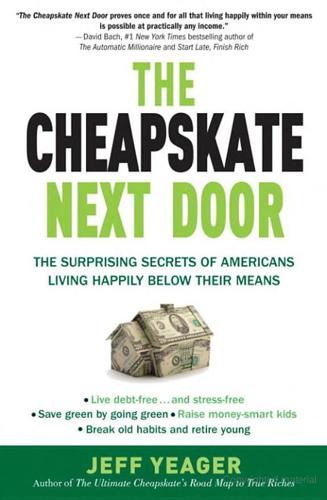
The Cheapskate Next Door: The Surprising Secrets of Americans Living Happily Below Their Means
by
Jeff Yeager
Published 8 Jun 2010
CHEAP SHOT SELL YOUR BLOOD INSTEAD No, not really … although it does help save lives and plasma donors typically earn about $20 per biweekly visit (see BloodBanker.com). What I’m talking about is doing anything and everything possible to avoid the biggest bloodsucking rip-offs out there when it comes to consumer borrowing. The cheapskates next door will eat nothing but ramen noodles for a year before they’ll even think about taking out any of these loans: PAYDAY LOANS—Borrow against your next paycheck at an annual interest rate that’s often 400 percent or higher, and that’s before “renewal fees” and other add-ons; CREDIT CARD CASH ADVANCES—As if the interest on credit card purchases isn’t bad enough, interest on cash advances is usually much higher, averaging about 22 percent, plus an additional up-front fee of as much as 5 percent; CAR TITLE LOANS—If you own a car outright, you can borrow about 55 percent of its value—at an annual interest rate of around 300 percent, plus hefty monthly renewal fees.
…
The cheapskates next door will eat nothing but ramen noodles for a year before they’ll even think about taking out any of these loans: PAYDAY LOANS—Borrow against your next paycheck at an annual interest rate that’s often 400 percent or higher, and that’s before “renewal fees” and other add-ons; CREDIT CARD CASH ADVANCES—As if the interest on credit card purchases isn’t bad enough, interest on cash advances is usually much higher, averaging about 22 percent, plus an additional up-front fee of as much as 5 percent; CAR TITLE LOANS—If you own a car outright, you can borrow about 55 percent of its value—at an annual interest rate of around 300 percent, plus hefty monthly renewal fees. Default, and the lender takes your wheels. [Note to Self: Anything money-related that’s advertised on daytime TV probably isn’t a good deal.] Savings: Variable, but a $1,000 payday loan carried for a month will probably cost you about $225 in interest and fees—what a deal! By the time they’re in their thirties, most of the cheapskates polled are contributing the maximum allowable amount to employer-sponsored retirement plans. As they age, they begin saving for specific goals (e.g., buying a house, having children, starting a business), investing in a variety of ways, as we’ll see in a minute, but usually doing so by setting up an automatic savings plan, either through payroll deductions or authorized bank transfers.
…
They frequently don’t take out student loans to finance their college educations (Chapter 4), or they borrow the absolute minimum amount possible and pay it off before even thinking about borrowing for anything else after college. They will take out a mortgage to buy a home, but usually buy a more modest home than they could qualify for, stay in it a good long time, and pay off their mortgage early (Chapter 10). And what about second mortgages, home equity loans, lines of credit, reverse mortgages, payday loans, etc., etc., etc., to pay for home remodeling, the kid’s college, a summer cottage, retirement, a European vacation, etc., etc., etc.? Get outa here! The cheapskates next door couldn’t give a flying fig about any of those “loan instruments.” As John “Doc” Dochnahl told me, “If you can’t afford to pay for it now, you can’t afford it.”
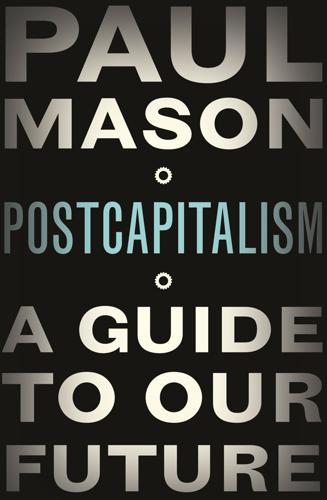
Postcapitalism: A Guide to Our Future
by
Paul Mason
Published 29 Jul 2015
For now, what we know is that fiat money – when combined with free-market economics – is a machine for producing boom-and-bust cycles. Left to run unsupervised, it could – before we’ve even considered the other destabilizing factors – push the world economy towards long-term stagnation. FINANCIALIZATION Go to any of the British towns devastated by industrial decline and you’ll see the same streetscape: payday loan stores, pawnbrokers and shops selling household goods on credit at hyper-inflated interest rates. Next to the pawnbrokers you’ll probably find that other gold mine of the poverty-stricken town: the employment agency. Look in the window and you’ll see ads for jobs at the minimum wage – but which require more than minimum skill.
…
The truth is, as finance has seeped into our daily lives, we are no longer slaves only to the machine, to the 9-to-5 routine, we’ve become slaves to interest payments. We no longer just generate profits for our bosses through our work, but also profits for financial middlemen through our borrowing. A single mum on benefits, forced into the world of payday loans and buying household goods on credit, can be generating a much higher profit rate for capital than an auto industry worker with a steady job. Once every human being can generate a financial profit just by consuming – and the poorest can generate the most – a profound change begins in capitalism’s attitude to work.
…
But after around 2004, with the rise of the internet and mobile data, technology began to enable new business models: we called it Web 2.0. It also started to produce tangible new behaviours among large numbers of people. It became normal to pay with plastic; normal to put your whole private life online for ever; normal to go online to get a payday loan at 1,000 per cent interest. At first, the exhilarating rush of new technology was taken as justifying all the pain we’d gone through to get free markets. The British miners had to be smashed so that we could have Facebook; telecoms had to be privatized so that we could all have 3G mobile phones.
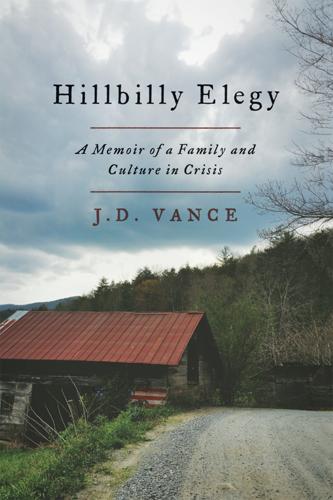
Hillbilly Elegy: A Memoir of a Family and Culture in Crisis
by
J. D. Vance
Published 27 Jun 2016
One ended up in an abusive relationship that produced a child before the mom was old enough to purchase cigarettes. The oldest overdosed on drugs and was arrested not long after he graduated from high school. This was my world: a world of truly irrational behavior. We spend our way into the poorhouse. We buy giant TVs and iPads. Our children wear nice clothes thanks to high-interest credit cards and payday loans. We purchase homes we don’t need, refinance them for more spending money, and declare bankruptcy, often leaving them full of garbage in our wake. Thrift is inimical to our being. We spend to pretend that we’re upper-class. And when the dust clears—when bankruptcy hits or a family member bails us out of our stupidity—there’s nothing left over.
…
I didn’t have enough money to cover the check, but I’d get paid that day and would be able to deposit the money after work. However, after a long day at the senate, I forgot to grab my paycheck before I left. By the time I realized the mistake, I was already home, and the Statehouse staff had left for the weekend. On that day, a three-day payday loan, with a few dollars of interest, enabled me to avoid a significant overdraft fee. The legislators debating the merits of payday lending didn’t mention situations like that. The lesson? Powerful people sometimes do things to help people like me without really understanding people like me. My second year of college started pretty much as my first year had, with a beautiful day and a lot of excitement.
…
As I shop, I’m reminded that wherever I fell on the American socioeconomic ladder as a child, others occupy much lower rungs: children who cannot depend on the generosity of grandparents for Christmas gifts; parents whose financial situations are so dire that they rely on criminal conduct—rather than payday loans—to put today’s hot toys under the tree. This is a very useful exercise. As scarcity has given way to plenty in my own life, these moments of retail reflection force me to consider just how lucky I am. Still, shopping for low-income kids reminds me of my childhood and of the ways that Christmas gifts can serve as domestic land mines.

The Broken Ladder
by
Keith Payne
Published 8 May 2017
We began by identifying three areas in which risky decisions might cause real problems: financial decision making, sexual behavior, and the use of drugs and alcohol. Once we had settled on sex, drugs, and money, we asked ourselves: What might I search for if I was engaged in risky behavior of this type? People googling terms like “lottery tickets” and “payday loans,” for example, are probably already involved in some risky spending. To measure sexual riskiness, we counted searches for the morning-after pill and for STD testing. And to measure drug- and alcohol-related risks, we counted searches for how to get rid of a hangover and how to pass a drug test.
…
Just as our decisions and actions prioritize short-term gains over longer-term interests when in a crisis, the body has a sophisticated mechanism that adopts the same strategy. This crisis management system is specifically designed to save you now, even if it has to shorten your life to do so. The system is called the stress response. Stress is the body’s original payday loan. For such a remarkable system, stress was discovered rather late, operating in plain sight for eons before anyone realized the effect it was having. János Hugo Bruno “Hans” Selye was a young Hungarian endocrinologist at McGill University in the 1930s. His research at the time involved injecting rats with chemicals extracted from rat ovaries to measure their effects on the animals’ bodies, and ideally to identify a new hormone.
…
To make scientific progress, it is necessary to divide a complex problem into simpler parts and understand how each one works. But the pieces eventually have to be assembled into a whole, as real life is more complicated than any single study. The live fast, die young approach that is motivated by an uncertain future leads to shortsighted decisions, from payday loans to selling drugs to dropping out of school, that provide short-term rewards but sabotage the future. It also encourages young people to have children sooner and discourages marriage, the biggest long-term commitment that most people ever make. This lack of a stable family life also sabotages their children’s future.

Abolish Silicon Valley: How to Liberate Technology From Capitalism
by
Wendy Liu
Published 22 Mar 2020
They have to protect the value of their brand, after all. Low-wage employers subjecting their workers to unnecessary stress and injury in order to shore up corporate profits?10 This might actually be good for the economy — a whole bevy of enterprises has sprung up with commodities to salve their boredom, payday loans to financialise their poverty, for-profit healthcare to treat their wounds. When everything’s a commodity, even human suffering can be an economic boon. Ecological damage isn’t necessarily a problem under market logic, either. What else can you conclude when fossil fuel companies are valued under the assumption that their reserves will be entirely depleted, even though that would cause untold physical harm to the natural world?
…
The reasoning behind market logic seems to be that if people will pay for a product, then the product is good. This is myopic at best: at most it means that the product is useful in our current suboptimal environment. Of course customers will pay for VC-subsidised rideshares in cities with underfunded public transit; of course people will resort to payday loan apps when their boss doesn’t pay them enough to survive. The ostensible success of private enterprise does not imply that private enterprise is the best way to address the underlying problems. Because here’s another way to understand profit: as an indicator of inefficiency, a sign that something has gone wrong in the factors that shape a given market.
…
It means better funded primary and secondary education and tuition-free post-secondary education, with courses geared towards human flourishing rather than merely meeting the skills needed by existing corporations. It means public banking, along with higher wages and lower costs of basic goods to reduce the need for exploitative financial instruments like payday loans. Mobility in particular needs to be reclaimed from VC-backed startups. Take scooters, for instance: instead of five different tech companies littering them indiscriminately with minimal public oversight, imagine a system that’s municipally owned and free at the point of use.7 Similarly, rideshare apps could be part of local transit systems — publicly funded, positioned as an infrequent alternative to public transit, with well-compensated and unionised drivers.

The Meritocracy Trap: How America's Foundational Myth Feeds Inequality, Dismantles the Middle Class, and Devours the Elite
by
Daniel Markovits
Published 14 Sep 2019
to twenty-two thousand by 2016: See Federal Deposit Insurance Corporation, “For Your Information: An Update on Emerging Issues in Banking, Payday Lending,” January 29, 2003, www.fdic.gov/bank/analytical/fyi/2003/012903fyi.html; Stephen J. Dubner, “Are Payday Loans Really as Evil as People Say?,” Freakonomics, April 6, 2016, accessed November 19, 2018, http://freakonomics.com/podcast/payday-loans. McDonald’s and Starbucks franchises combined: Bethany McLean, “Payday Lending: Will Anything Better Replace It?,” Atlantic, May 2016, accessed November 19, 2018, www.theatlantic.com/magazine/archive/2016/05/payday-lending/476403. McLean attributes the claim about McDonald’s and Starbucks to Dartmouth economist Jonathan Zinman. $7.4 billion on payday loans: Pew Charitable Trusts, Payday Lending in America: Who Borrows, Where They Borrow, and Why (July 2012), 35, www.pewtrusts.org/~/media/legacy/%20uploadedfiles/pcs_assets/2012/pewpaydaylendingreportpdf.pdf.
…
Just as Henry Ford’s decision to pay his workers enough for them to desire and to afford his cars epitomized the Great Compression’s egalitarian economy, so Walmart’s practice of paying its workers so little that they cannot afford to shop other than at thrift retailers epitomizes today’s unequal economy.) Thrift finance has also grown rapidly, to become an inescapable part of middle-class life. Payday loans give this pattern an open and notorious illustration. Payday lending serves people who obviously cannot afford their own lives, even week to week. The obviousness of the shortfall gives the business a bad odor, but that has not stopped its increase. The payday lending industry has grown from fewer than five hundred stores in the early 1990s, to twelve thousand in 2002, to twenty-two thousand by 2016.
…
The payday lending industry has grown from fewer than five hundred stores in the early 1990s, to twelve thousand in 2002, to twenty-two thousand by 2016. There are more payday lending stores in the United States today than there are McDonald’s and Starbucks franchises combined, and in 2012, Americans spent $7.4 billion on payday loans. Moreover, this open expression of thrift finance is only the small tip of a massive iceberg. Middle-class households accumulated substantial savings at midcentury, and as recently as the late 1970s, the bottom 90 percent of the income distribution enjoyed a savings rate of between 5 and 10 percent. But since then, saving vanished, and borrowing largely replaced income as the source of funding for rising consumption.

Basic Economics
by
Thomas Sowell
Published 1 Jan 2000
The New York Times, for example referred to “an annualized interest rate of 312 percent”{442} on some such loans. But payday loans are not made for a year, so the annual rate of interest is irrelevant, except for creating a sensation in the media or in politics. As one owner of a payday loan business pointed out, discussing annual interest rates on payday loans is like saying salmon costs more than $15,000 a ton or a hotel room rents for more than $36,000 a year, {443}since most people never buy a ton of salmon or rent a hotel room for a year. Whatever the costs of processing payday loans, those costs as well as the cost of risk must be recovered from the interest charged—and the shorter the period of time involved, the higher the annual interest rate must be to cover those fixed costs.
…
Many of the criticisms of small financial institutions that operate in low-income neighborhoods grow out of misconstruing various charges that are called interest but are not, in the strict sense in which economists use the term for payments received for time delay in receiving repayment and the risk that the repayment will not be made in full or on time, or perhaps at all. Short-term loans to low-income people are often called “payday loans,” since they are to be repaid on the borrower’s next payday or when a Social Security check or welfare check arrives, which may be only a matter of weeks, or even days, away. Such loans, according to the Wall Street Journal, are “usually between $300 and $400.”{441} Obviously, such loans are more likely to be made to people whose incomes and assets are so low that they need a modest sum of money immediately for some exigency and simply do not have it.
…
Where there are lenders who specialize in large, short-term loans to high-income people with expensive possessions to use as collateral, these “collateral lenders” (essentially pawn shops for the affluent or rich) charge interest rates that can exceed 200 percent on an annual basis. These interest rates are high for the same reasons that payday loans to low-income people are high. But, because the high-income loans are secured by collateral that can be sold if the loan is not repaid, the high interest rates are not as high as with loans to low-income people without collateral. Moreover, because a collateral lender like Pawngo makes loans averaging between $10,000 to $15,000,{447} the fixed process costs are a much smaller percentage of the loans, and so add correspondingly less to the interest rate charged.

Competition Overdose: How Free Market Mythology Transformed Us From Citizen Kings to Market Servants
by
Maurice E. Stucke
and
Ariel Ezrachi
Published 14 May 2020
Reg. 54472 (November 17, 2017), https://www.govinfo.gov/app/details/FR-2017-11-17/2017-21808. 26.Payday, Vehicle Title, and Certain High-Cost Installment Loans, 84 Fed. Reg. 4252 (proposed February 14, 2019), https://www.federalregister.gov/documents/2019/02/14/2019-01906/payday-vehicle-title-and-certain-high-cost-installment-loans. 27.Charles Elmore, “Payday Loan Crackdown on Ice under Trump Pick Who Got Donations,” Palm Beach Post, January 17, 2018, https://www.palmbeachpost.com/business/payday-loan-crackdown-ice-under-trump-pick-who-got-donations/4cxbrwOnM3YtvLg8Oo4YbJ/. 28.15 U.S.C. § 45(n) (2012) (defining unfair acts or practices as those that cause or are “likely to cause substantial injury to consumers which is not reasonably avoidable by consumers themselves and not outweighed by countervailing benefits to consumers or to competition”). 29.
…
We emphasize abusive, because it enables the CFPB to stop financial institutions from preying on our weaknesses when offering financial products or services.23 The CFPB used this authority to crack down on payday debt traps that have plagued communities around the country. Unscrupulous lenders compete in offering short-term payday loans to consumers who cannot reasonably repay them. The CFPB spent over five years researching this toxic competition, including reviewing over one million comments on its proposed rule from payday borrowers, consumer advocates, faith leaders and tribal leaders, payday and auto title lenders, state regulators, and attorneys general.
…
Even if we can’t do much under the Trump administration to demand that the CFPB crack down on exploitative abuses by payday lenders, we can act on a local level, like the voters in South Dakota who, in the same election cycle that brought us Trump, overwhelmingly approved a ballot measure that effectively banned payday loans (by capping the permissible interest rate to 36 percent).62 We can follow the voters in nineteen states, who through ballot initiatives or political pressure, in 2019 increased their state’s minimum wage. This includes Arkansas, whose voters overwhelmingly rebuffed the efforts of the elected Republican officials and chamber of commerce, and raised the minimum wage to $11 per hour, which is significant in a state where one of every 5.5 residents lives in poverty.63 We can follow the voters in Idaho, Nebraska, and Utah, who strengthened their safety net by expanding the Medicaid health care programs to adults with incomes of up to 138 percent of the federal poverty line.64 Or we can consider a simple conversation Alastair Mactaggart had among friends at a social outing.
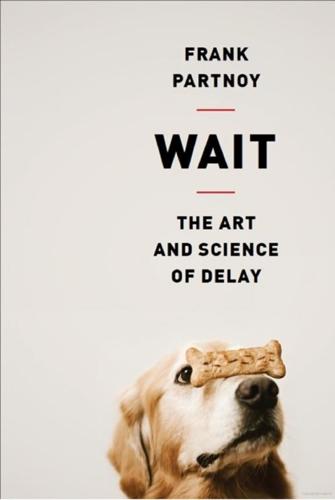
Wait: The Art and Science of Delay
by
Frank Partnoy
Published 15 Jan 2012
For example, evidence suggests that poor people are especially prone to have high short-term discount rates.45 They frame economic decisions in narrow terms, using blinders, which is one reason why so many poor people are trapped by crushing debt loads. Poor people are more likely to get “payday” loans—high-interest-rate advances on their next paycheck.46 They are less likely to understand that the charges for payday loans are absurdly high, even compared to credit card rates. Or perhaps they do understand, but must have the money at once anyway. It remains unclear which way the causation runs: are people poor because they have high discount rates, or do they have high discount rates because they are poor?
…
Some rules also can help, though we need the willpower to follow them.52 We might tell ourselves that before we can put off a task, we must have a unique reason for why we aren’t doing it today and we must commit to completing the task in the future by putting it on our calendar for a specified future date.53 Web-based tools such as RescueTime.com can help us plan by keeping track of precisely how we fritter away time. Just as the best diet aids involve keeping track of what we eat, the best time management aids involve keeping track of what we do. Borrowers can reduce their present biases by thinking more carefully about future costs, comparing the cost of a payday loan to the effective interest rate of a credit card, or looking at the estimated cost or savings for a year.54 Employers can help us avoid our high short-term discount rates by automatically enrolling us in a savings plan unless we opt out.55 For many straightforward tasks, it helps to impose strict deadlines.56 On the other hand, there can be real benefits from putting tasks off, and we should recognize those as well.

Mindwise: Why We Misunderstand What Others Think, Believe, Feel, and Want
by
Nicholas Epley
Published 11 Feb 2014
Longer school days, shorter summer breaks, and fewer vacations improve student achievement. If you want students to do better in school, a good place to start is to have them spend more time in it. • REDUCING POVERTY. Poverty is one of society’s most persistent problems, and the poor don’t seem to be helping themselves as much as they should. They disproportionately take out payday loans with obscenely high interest rates, getting themselves caught in endless debt traps that require taking on more debt to pay off past debt. One common theory about poverty explains it in the language of mental deficiencies: the poor are simply not as smart as the rest of us, and they do stupid things with their money that keep them poor.
…
In one set of experiments, psychologists found that poor people make fewer mistakes on financial problems that routinely trip up the wealthy.31 One of the bigger problems is the lack of trust in financial institutions that is rampant in poor communities, which is compounded by the lack of access to simple banking services like savings accounts. The poor take out payday loans in part because they don’t have other banking services they can rely on. One effective way to help break the chronic debt trap is to give the poor access to banking services. Poverty will not yield to simple solutions like this alone, of course, but it’s unlikely to yield at all using assumptions that poverty is largely the product of stupidity
…
Omaha Indians Onion, 5.1, 8.1 On Killing: The Psychological Cost of Learning to Kill in War and Society (Grossman), nts.1n opinion polls, xx, 5.1, 8.1, nts.1n Orwell, George owl butterflies, 4.1, 4.2, 4.3 Pain in Neonates (Avery) Pakistan Palestinians, Palestine, 8.1, 8.2 Palin, Sarah paranoia parents perception of danger and see also children Paro (robot), n parochial altruism, 3.1, nts.1n parroting payday loans performance appraisals perspective deception and egocentrism and, 5.1, 5.2, 5.3, 5.4 getting of, 8.1, 8.2, 8.3, aft.1, nts.1n getting of, barriers to gift selection and, 8.1, nts.1n interracial interactions and taking of, 8.1, 8.2, 8.3, 8.4, 8.5, 8.6, nts.1n talking stick and transparency and pets, anthropomorphism and, 4.1, 4.2, 4.3, 4.4, nts.1n Philadelphia, Pa.
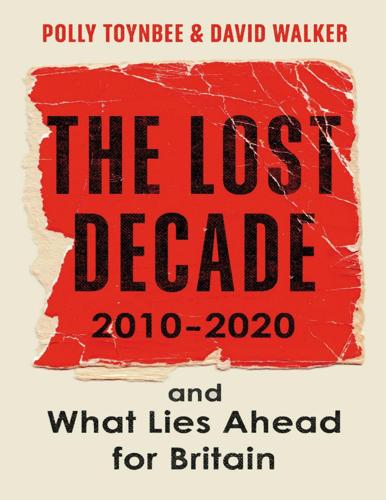
The Lost Decade: 2010–2020, and What Lies Ahead for Britain
by
Polly Toynbee
and
David Walker
Published 3 Mar 2020
I have just been awarded a 1 per cent rise, and yet the cost of living continues to increase. The chancellor has cut tax credits in an underhand way. It seems as a single parent and a public sector worker I am an enemy of the state.’ Foreign journalists who came to film the food banks found themselves tripping over sleeping bags in doorways. Welcome to the country of homelessness, payday loans, bedroom tax and zero-hours contracts. But the era’s winners won big. One in five of those born in the 1950s now owned a second property. The total wealth embodied by second homes, buy-to-let investments and those foreign gîtes, rural villas and flats on the Costa climbed to £941 billion. The old did well, the young badly (even if some of them will later in life become lucky inheritors).
…
Brexit disrupted everything, shaking out people, attitudes, expectations – and, of course, decoupling from the EU had only just begun. During these years, the basic health of the UK economy was not sound, despite the slow recovery from recession. It relied on household consumption, fuelled by borrowing on credit cards. If you were too poor to have a credit card, you could borrow from the payday loan company Wonga – until it went bust. The plight of the north-east was symbolised when Newcastle United’s players ran out displaying Wonga’s name on their chests. But buying brought pleasure. Poor families bought their sofas from BrightHouse – another company making money from immiseration – at 69.9 per cent interest.
…
The Golden Goose An academic geographer, who should have known better, blamed London’s ‘monstrous predominance’. But the capital was itself hugely divided. Poverty characterised Tower Hamlets, Newham and Dagenham, and to millions of its struggling denizens it did not feel like the streets were paved with gold. London had the highest rate of child poverty of any English region; payday loans were nowhere more rife than in Croydon. The City of London, for better or worse, continued to generate not just a large slice of GDP, but also the UK’s external earnings, without which the economy would have looked a lot worse. The ONS confirmed that since 2010, three regions – London, the south-east and east – took in more tax revenue than was spent there, and the gap between them and the rest of the UK was stark.
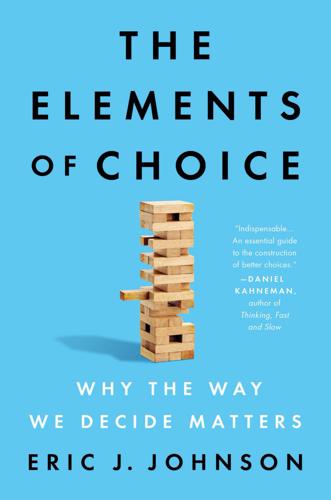
The Elements of Choice: Why the Way We Decide Matters
by
Eric J. Johnson
Published 12 Oct 2021
While the suit was part of a complex litigation that the FTC eventually dropped, the FTC now has a Negative Option Rule to address similar problems. An even clearer example of a badly intentioned choice architect using dark patterns to exploit ease are the websites run by a certain company that provided payday loans. After providing all the information needed to apply to the loan, consumers were taken to a page with special offers (see below). A quick look leads you to the obvious next button: “Finish matching me with a payday loan provider!” There are four special offers above that. If you look at the first box, you note that “No” is preselected, but that is hard to see because the dots are so small. Almost no one realized that by clicking the obvious button at the bottom of the screen, the fluent path for finishing the deal, they were agreeing to the offer in the upper right-hand column, which was also hard to read, but had “Yes” prechecked.
…
See describing options options trading, 285–89 order (ordering), 185–220 by attributes, 211–14 election ballots, 186–90 Expedia search, 199–202 on menus, 192–94, 214–20 Netflix, 269–70 primacy, 191–99, 206–7, 208–9 recency, 191–92, 202–8 visuals, 208–11 organ donations, 107–22, 157–58, 338–39n across countries, 109–10, 110, 111–14 alternatives, 117–22 defaults, 112–17, 120, 120–21, 151–52 incentives and, 117–18, 339n opt-in condition, 112, 114, 115, 116, 120, 121 opt-out condition, 112–16, 117, 119, 121, 127 out-of-pocket costs, 174–76 overdraft protection, 5–6 OxyContin, 317–18 Packard, Vance, 300 Pailhès, Alice, 305 Pandora, Music Genome Project, 277 “paradox of choice,” 167 Parag, Pathak, 162 path comparisons, 35–39, 36 path integration, 35–39, 36 Pathways to Technology School, 183 Patient Protection and Affordable Care Act (Obamacare). See Affordable Care Act payday loans, 127–28 p-curves, 341n Pension Protection Act of 2006, 129–30 persistent defaults, 152–53, 155 personalized defaults, 150–55 p-hacking, 341n physicians. See doctors Picwell, Inc., 281 plausible paths, 30–53, 264, 319–20 Amazon gift certificates, 34–35, 39–40, 41 Copenhagen Airport exit, 30–32, 31 dating sites, 44–52 doctors and generics, 11 finding fluency, 41–44 health insurance, 180–81 larger-later outcome, 34–35, 37, 38 Netflix, 269 path comparison, 35–39, 36 path integration, 35–39, 36 to patience, 33–41 seeing clearly, 52–53 smaller-sooner outcome, 34–35, 37, 39 Sullenberger and Flight 1549, 23–24 use of term, 23, 30 polarization, 323–24 political forecasting, 291–93 Pope, Devin, 68–69 Pope, Jaren, 68–69 pop-ups, 9, 266–67 Posner, Richard, 117 Poterba, James, 199 Practice Fusion, 317–18 preference assembly.

Why We Can't Afford the Rich
by
Andrew Sayer
Published 6 Nov 2014
If the debts were to be cancelled – or ‘forgiven’, as they used to say, as if being in debt were a sin – those prudent lenders, those financial benefactors, would lose out; worse, the debtors would not learn their lesson, and they would soon come to expect to be subsidised by others! This is how many people think about debt. In the words of Nicholas Mirzoeff, a New York University professor active in the Occupy Wall Street movement, Debt has become the means of subjecting everyone – from sovereign nations to homeowners and victims of payday loan sharks – to a mixture of ersatz morality and threats. Pay your debts or else you’re a bad person or bad country, and so bad things will happen to you.35 By such means, creditors maintain ideological as well as economic dominance. On the other hand, precisely because ‘debt’ has a negative tone, we may prefer to think of its positive flip-side, ‘credit’.
…
Daily interest payments on personal debt are £162 million.49 To their cost, many people do not realise how high rates of interest can be: high or ‘usurious’ rates of interest have become common for consumer credit, with some store cards charging rates of interest well above 20% per year. In Britain the annual percentage rate of interest on Homebase and Dorothy Perkins cards in 2014 was 29.9%.50 £1.5 billion of transactions are made with plastic cards every day. So-called payday loans – small loans for short periods of time – are in a league of their own, incurring enormous rates of interest – Ferratum charges a typical Annual Percentage Rate of interest of 2,591%, while Wonga, the highest-profile payday lender in the UK, charges 5,853%.51 That might sound downright nasty, but Wonga advertises its loans through television commercials featuring puppets of loveable, funny old people – Betty, Earl and Joyce – making small talk.
…
In Britain, the Positive Money researchers estimate that only the top 10% get more in interest than they pay out, and of course it’s the 1% who get the most.56 This redistribution through interest on debt is a major cause of inequality. Interest payments made by people on their mortgages, credit cards, car loans, payday loans and so on provide banks and other financial institutions with a major source of unearned income to ‘invest’ in a host of ways, often by re-lending it to others to extract still more. Similarly: Government debt . . . can be thought of as a means for upward redistribution of income, from ordinary taxpayers to rich bondholders.
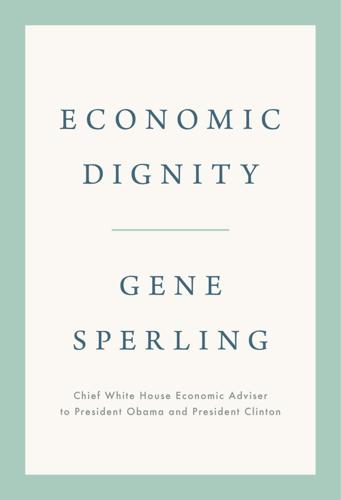
Economic Dignity
by
Gene Sperling
Published 14 Sep 2020
ITT ESI et al., January 3, 2017, https://predatorystudentlending.org/wp-content/uploads/2018/02/Exhibit-27-Description-of-how-ITT-prevented-other-opportunities-473-statements.pdf. 98. In the thirty-six states that have payday loans available, as of early 2016. Pew Charitable Trusts, “Payday Loan Facts and the CFPB’s Impact,” January 14, 2016, https://www.pewtrusts.org/en/research-and-analysis/fact-sheets/2016/01/payday-loan-facts-and-the-cfpbs-impact. 99. Desmond documented how landlords in poor neighborhoods refuse to make repairs even when conditions are dangerous, knowing that their tenants are desperate for cheap rent and housing stability and will be reluctant to leave.
…
Annie Waldman at ProPublica brought to light the case of a former foster care youth with learning disabilities who was misled into taking out $6,000 in student loans, for a program that she would not complete, which was sent to collections, ultimately destroying her credit score and then preventing her from being able to get affordable housing for herself and her two-year-old child.96 In a class-action suit against ITT Technical Institute, 473 students submitted statements that detailed how the debt they accumulated while there prevented them from achieving life goals ranging from getting a better education to having children.97 Abusive payday lending is another example. Millions of workers simply do not earn enough or see such fluctuations in their wages that an unexpected expense of several hundred dollars—say, to repair a car that is needed to keep a job or to fix a hot-water heater—can leave an individual with no other options but to take out an abusive payday loan with effective interest rates that average nearly 400 percent.98 That can lead to an inescapable debt trap that leads to major life setbacks. Landlord exploitation can similarly lead to catastrophic consequences for families. Abuse by landlords of vulnerable families can be among the most devastating assaults on economic dignity imaginable.99 This is why the existence of a permanent federal agency, the Consumer Financial Protection Bureau (CFPB), signed into law by President Obama in 2011 and spearheaded by two decades of advocacy by Elizabeth Warren against predatory financial behavior, is so critical.
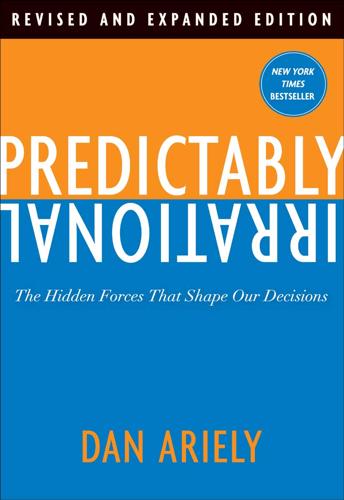
Predictably Irrational, Revised and Expanded Edition: The Hidden Forces That Shape Our Decisions
by
Dan Ariely
Published 19 Feb 2007
But we can guard ourselves against the bumps in the financial road by putting aside some money to give us a cushion, and by so doing we might be able to put a dent in the planning-fallacy problem and make it less acute. Finally, I think that punitive finance practices—including high-interest credit cards, car title loans, payday loans,* and the like—that prey upon those with the fewest resources have to be controlled. It is more appropriate, fair, and better for the economy, as a whole, if we spread the cost of financial services such as checking accounts, credit cards, and insurance among all customers rather than forcing those with fewer resources and fewer options to carry a large part of the burden.
…
B., 174–76 movie reviews, enjoyment affected by, 166 mummy powder, 177–78 museums, free-entrance days or times at, 61 music, expectations and, 270–73, 274 N need for uniqueness, ordering food or drinks and, 237–38 New England Journal of Medicine, 175 news reports, on financial meltdown, 315–16 New York Times, 4, 18, 21, 122–23 Niskanen, William A., 205–6 “No Child Left Behind” policy, 85 Norton, Mike, 135 nucleus accumbens, 203, 208 O oaths, honesty and, 208–9, 211–13, 215 Obama, Barack, 323–24 Ofek, Elie, 159–60, 338 online auctions, 135–36 open-source software, 81 options, 139–53 abundance of, in modern democracy, 148 aversion to loss and, 148–49 college students’ choice of major and, 141–42 consciously closing, 150–51 “door game” and, 143–48 downside of, 140 important, vanishing of, 149 romantic relationships and, 142, 148, 150 sale prices and, 148–49 similar, choosing between, 151–53 Xiang Yu’s story and, 139–40 ordering food or drinks, 231–38 enjoyment of choices and, 232, 235–36, 237, 238 need for uniqueness and, 237–38 out loud vs. in private, 231–32, 233–36, 237–38 strategy for, 238 Orhun, Yesim, 136, 338–39 osteoarthritis, arthroscopic knee surgery and, 174–76 outsourcing, 81–82 overdraft fees, 301–2 ownership, 127–38 aversion to loss and, 134, 137, 138 Duke University basketball tickets and, 127–33 of points of view, 137–38 pride of, putting work into something and, 135 “trial” promotions and, 136–37 value in owner’s eyes increased by, 129–35, 265–69 virtual, online auctions and, 135–36 P pain, experience of, xxiii–xxiv, xxvi–xxvii expectation and, 179 painkillers: epidural, during childbirth, 103–4 price and efficacy of, 180–84 parking illegally, theory of rational crime and, 291–92 passion: underprediction of effect of, 98–99 see also arousal patient compliance, 260–64 Paulson, Henry, 304–6, 310, 311–12 pay, see compensation; salaries payday loans, 304 paying, pain of, restaurant meals with friends and, 248–50 pearls, 23–25 black, demand for, 24–25, 26 Pennebaker, James, 315, 316 Pepsi, taste tests of Coke and, 166–68 perception: expectations and, 155–72, 293–94; see also expectations; taste inherent biases in, xxvi–xxvii Perfectly Legal (Johnston), 204 personal lives: arbitrary coherence and, 43–45 separation of social and market norms and, 67–69, 75–76, 77–78 petroleum geologists, decline of ethics and values among, 211 pharmaceuticals, 210 conflicts of interest and, 293, 295 marketing hype and efficacy of, 190–91 price and efficacy of, 180–84, 190 Pittinsky, Todd, 169 Pittman, Bob, 60 placebo effect, 173–94 Airborne and, 275–78 author’s experience with Jobst suit and, 192–94 conditioning and, 179 energy drinks and, 184–87 faith in drug, procedure, or caregiver and, 179 Gerbi’s worm secretions and, 177 knowingly treating patients with, 187–90 marketing hype and, 186–87, 190–91 moral dilemmas in experiments on, 191, 194 mummy powder and, 177–78 origin of term, 176–77 pharmaceuticals and, 180–84, 190 power of suggestion and, 178–79 price and, 176, 180–87, 190 royal touch and, 188 surgical procedures and, 173–76, 178, 191 planning fallacy, 297–304 automobile insurance and, 299–301 FREE!
…
Of course, if you took the regular mortgage, you would owe nothing by the end of the 10 years and would also own your home, but if you took the interest-only mortgage, you would still owe $300,000 (at which point you will take on a new mortgage, and so on). * For a helpful perspective, see M. P. Dunleavy, “Making Frugality a Habit,” New York Times (January 9, 2009). * Since 1990, the number of places in the United States that give “payday” loans has grown faster than the rate at which Starbucks shops have opened.

New Laws of Robotics: Defending Human Expertise in the Age of AI
by
Frank Pasquale
Published 14 May 2020
Louise Seamster and Raphaël Charron-Chénier, “Predatory Inclusion and Education Debt: Rethinking the Racial Wealth Gap,” Social Currents 4 (2017): 199–207. 52. Donald Bradley, “KC Man Pays $50,000 Interest on $2,500 in Payday Loans,” Kansas City Star, May 17, 2016, https://www.kansascity.com/news/local/article78174997.html. 53. “I Borrowed £150 … Now I Owe £10k: Christmas Warning over Payday Loans,” Sun, December 16, 2012, updated April 4, 2016, https://www.thesun.co.uk/archives/news/342926/i-borrowed-150-now-i-owe-10k/. 54. Kevin P. Donovan and Emma Park, “Perpetual Debt in the Silicon Savannah,” Boston Review, September 20, 2019, at http://bostonreview.net/class-inequality-global-justice/kevin-p-donovan-emma-park-perpetual-debt-silicon-savannah. 55.
…
Lawmakers should discourage or ban each of these types of “inclusion.” Predatory inclusion is a concept with a long history.51 Credit enables, while its shadow side (debt) constrains. Sometimes the burdens of loans are far greater than their benefits. Imagine a couple, Joe and Margaret, who take out a payday loan with a 20 percent per week interest rate. At that rate, the debt more than doubles every month. Desperate to repay it, they have no money for dinner for their children for a few days. They fall behind on rent and get an eviction notice, but the lender is paid back in full within three months and makes a tidy profit.

Choose Yourself!
by
James Altucher
Published 14 Sep 2013
But someone will win, and many people are looking at ways to do this. Payday loans are another phenomenon in financial technology. There’s a massive alternative banking industry comprised of people who, for various reasons, don’t use traditional banks. I’m not sure why they’ve opted to do this. Maybe they don’t trust the banks or maybe the banks don’t trust them. But here’s something that will never go away: people who live paycheck to paycheck, a rising phenomenon, often need money the day or days before their check arrives. What do they do? They go to a payday loan company that might charge them one dollar for a hundred-dollar check even though their paycheck may be there tomorrow.
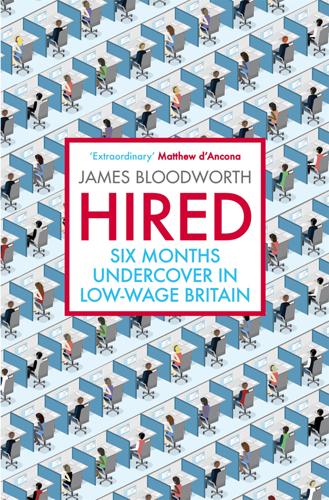
Hired: Six Months Undercover in Low-Wage Britain
by
James Bloodworth
Published 1 Mar 2018
Because the job centre does not cover the period from when you get a job until the point at which you are actually paid, there is always a window in which getting hold of things ‘on tick’ is the only way to maintain a decent standard of living. It is this sort of thing which has fuelled the parasitic payday loan industry, the modern-day equivalent of the loan sharks who at one time would stalk ground-down estates in order to squeeze money out of their impoverished clients with an army of threatening enforcers. One of Britain’s biggest payday lenders increased its profits thirty-two-fold in the years after the 2008 recession, while nine of the ten biggest payday lenders saw their turnover double in the three years after 2010.9 Since then, the industry has been reined in somewhat by tighter legislation, but the desperation that leads many people to seek out high-interest loans in the first place remains.
…
.: These Poor Hands 23, 149, 190 courier firms 211, 215, 217, 223, 236, 244–7, 250, 256, 257 Cwm, Wales 147, 148, 187, 190, 195, 196, 197 Cwmbran, Wales 143 Daily Express 124–5 Daily Mail 66, 134, 188 Dan (bicycle courier) 248, 249 Dangerfield, George 72 Davies, Idris 148–9 Gwalia Deserta (Wasteland of Wales) 148 ‘The Angry Summer’ 174 debt 62, 69, 146, 151, 153 Deliveroo 215, 217, 223, 250, 256, 257 democratic socialists 192 Department for Work and Pensions 133 Dickens, Charles 29, 205, 210, 249; Hard Times 138–9 Disclosure and Barring Service (DBS) 88–90, 109–10, 214 Dorothy (housemate of JB) 203, 204–5 DriveNow 217 Dropit 217 Eastern Europe, migrant workers from 11, 13, 15, 21, 24, 26–7, 30, 32, 33, 34, 45, 57, 61–2, 75, 114–16, 128–9, 154, 203–4, 260–1 see also under individual nation name Ebbw Vale, Wales 147, 149, 154; legacy of de-industrialisation in 187–200 Elborough, Travis 93 emergency housing 96 employment agencies 1, 16, 19, 20, 23, 37, 38, 39, 40, 41, 42, 43, 56, 65–6, 70, 72, 73, 82, 86, 127, 130, 158, 189, 194 see also under individual agency name Employment and Support Allowance (ESA) 248 employment contracts/classification: Amazon 19–20, 53, 58 care sector 87–8, 107–8, 116 Uber 214–15, 222, 229–35, 243, 245, 250–2, 257 zero-hours see zero-hours contracts employment tribunals 38, 229–30, 243–4 English seaside, debauchery and 92–3 Enterprise Rent-A-Car 214 ESOL (English for Speakers of Other Languages) programmes 115–16 European Economic Community (EEC) 195 European Referendum (2016) 61, 195–6 Evening Standard 208, 241 Express & Star 59–60 Fabian Society 109 Farrar, James 229–31, 232, 233, 234, 236, 238, 240, 241–2, 250, 254, 255–6 Fellows of the Academies of Management 17 Fernie, Sue 182 financial crisis (2008) 1, 2, 45, 125, 195, 209 Flash (former miner) 165–8, 170, 171–2, 174, 175, 176–8, 179, 188, 196 Fleet News 246 Foot, Michael 149 football 56, 58, 92, 94, 97, 98, 126, 135, 169 fruit picking 61 FTSE 123, 262 Gag Mag 122 Gallagher, Patrick 246 Gary (homeless man, Blackpool) 96–104, 105 Gaz (Gag Mag seller, Blackpool) 122 GDP 146 General Election (2015) 109 General Strike (1926) 148, 149, 173 gentrification 219 Geoff (former miner) 189, 190, 191, 193 ‘gig’ economy 2, 208–10, 217–18, 232, 236, 242, 243–4, 248, 249–50, 252, 257 see also Uber Gissing, George: New Grub Street 64 GMB union 36 grammar schools 261 Guardian 5, 235 Hamstead Colliery, Great Barr 169 Hazel (home carer) 110–11, 114, 115, 116, 117, 119 Heller, Joseph: Catch-22 235–6 Hemel Hempstead 54, 70 Henley, William Ernest: ‘England, My England’ vii Hoggart, Richard: The Uses of Literacy 45 home care worker (domiciliary care worker): Disclosure and Barring Service (DBS) checks 88–90, 109–10 employment contracts 87–8, 107–8, 116, 118, 120 length of home care visits 108–9, 110 local authority budget cuts and 107–10 MAR (Medication Administration Record) sheets 114, 115 migrant workers as 114–16 negligent 86–7 privatisation of social care and 106–8, 109 recruitment 82–4 ‘shadowing’ process 88, 109–10 societal view of 106 staffing crisis 85–6, 119 suicide rate among 100 typical day/workload 110–14, 118 unions and 88 view job as vocation 86–7 wages/pay 107–8, 117, 118–19, 159 Home Instead 119 homelessness 95–105, 138, 187, 208 hostels 95, 96, 101, 102 housing/accommodation: Amazon workers, Rugeley 20–2, 24–6 Blackpool 80, 124, 137–8 buy-to-let housing market 24 emergency housing 96 homelessness and 95, 96, 101, 102, 137–8 hostels 95, 96, 101, 102 inability to buy 62 landlords and 12, 21, 24, 39, 67, 69, 95–6, 137–8, 164, 204, 206, 258 London 203–8 migrant workers and 20–2, 24–6, 197–8 social housing 62, 206 Swansea 124, 150 housing benefit 96, 137–8, 248 immigration 26–7, 61, 115–16, 128–9, 144, 193, 197–9, 236, 259–61 see also migrant workers indeed.co.uk 83–4 independent contractors 209, 248, 251–2 Independent Workers Union of Great Britain (IWGB) 230, 257 inequality 18, 73, 123, 125, 207–8, 226, 238, 262, 263 inflation 2, 122 job centres 19, 96, 133–6, 139–40, 156, 158 Joe (housemate of JB) 22 John Lewis 23, 83 Joseph Rowntree Foundation 70, 159 June (call centre employee) 181–2, 183, 184 Kalanick, Travis 215, 228, 229, 233, 235 Kelly, Kath 66 Khan, Sadiq 256 Koestler, Arthur: The God that Failed 228 Labour Party 7, 57, 59, 61, 109, 144, 149, 150, 173, 174 Ladbroke Road, Notting Hill, London 219 Lamb, Norman 109 Lancashire Evening Post 104–5 landlords, private 12, 21, 24, 39, 67, 69, 95–6, 137–8, 164, 204, 206, 258 Lea Hall Colliery, Staffordshire 31–2, 54, 55, 56, 57 Lea Hall Miners’ Social Club, Staffordshire 55, 56, 74 Len (step-grandfather of JB) 143–4 Lili (London) 203–4 living wage 1, 85, 160, 246 Lloyd George, David 172 loan sharks 151, 156 local councils 104–5, 164 London 201–57 accommodation/housing in 65, 203–8, 218 gentrification in 219 ‘gig’ economy in 208–57, 263 homelessness in 95 migrant labour in 205–6, 213, 239 wealth divide in 207–8, 238 London Congestion Charge 254 London Courier Emergency Fund (LCEF) 247 London Metropolitan Police 90 London, Jack 205 low-skilled jobs, UK economy creation of 153 Lydia (Amazon employee) 70 Macmillan, Harold 3 manufacturing jobs, disappearance of 59, 139 Marine Colliery, Cwm, Wales 190 Mayhew, Henry 4, 205 McDonald’s 52, 68, 83 Merkel, Angela 196 Metcalf, David 182 middle-class 6, 39, 51, 67, 68, 69, 72–3, 74, 75, 149, 178, 205, 258, 259, 260, 262, 263 migrant labour: Amazon use of 11, 12, 13, 15, 20, 21, 22–7, 30, 32, 33, 34, 44, 45, 46, 51, 53, 57, 61–2, 65, 71–5, 258, 260–1 care home workers 114–16 ‘gig’ economy and 203–6, 213, 239 restaurant workers 154 retail sector and 128–9 Miliband, Ed 109 mining see coal mining Miners’ Federation of Great Britain (MFGB) 173 Miners’ Strike (1984–5) 3, 174–7 minimum wage 1, 7, 55, 62, 84, 107, 108, 118, 135, 155, 159, 173, 189–90, 209, 212, 235, 236, 245, 250, 262 Morecambe, Lancashire 137–8 Morgan family 156–8 Morgan, Huw: How Green Was My Valley 147 Moyer-Lee, Jason 257 National Coal Board (NCB) 54, 170, 171 National Institute for Health and Care Excellence (NICE) 108 National Union of Miners (NUM) 174, 176 New York Times 222 NHS (National Health Service) 106, 108, 247 Nirmal (Amazon employee) 45–6, 51 Norbert (Amazon employee) 71–5 nostalgia 3, 60, 93–4, 216 Nottingham 2, 151–2 objectivism 228 oil crisis (1973) 122–3 Oliver, Jamie 154 Orwell, George 56, 169 Palmer, William 29 pay see wages and under individual job title and employer name payday loans 156 PayPal 216 Pimlico Plumbers 251–2 platform capitalism 215 PMP Recruitment 19, 189–90 Poland, migrant workers from 128–9, 130, 135, 197–8 ‘poor, the’ 145 Port Talbot, Wales 166, 176, 190, 196 ‘post-truth’ discourse 199 ‘post-work’ world 165 poverty: Blackpool and 132, 137 class and 4 darkness and 96 diet/weight and 137 ease of slipping into 5 Eastern Europe and 26 monthly salary and 156 as a moral failing 188–9 press treatment of 66–7 time and 67 working poor living in 194 Preston, Lancashire 100, 105, 138–9 private school system 123 progressive thought 262 Public Accounts Committee (PAC) 107 Putin, Vladimir 71 Rand, Ayn 228–9, 235, 236; The Fountainhead 228, 229 recession (2008) 1, 45, 104, 121, 125, 156 ‘regeneration’ 55, 60–1, 146 rent-to-own 157–8 retirement, working in 58–9 Reve, Gerard: The Evenings 160 Robin (Cwm) 196, 197 Rochelle (home care worker) 117–19 Romania, migrant workers from 11, 12, 13, 15, 20, 21, 22–7, 32, 44, 46, 51, 53, 61, 65, 71–5, 203, 206, 258 Ron (former miner) 170, 195 Royal London 59 Royal London pub, Wolverhampton 71 Royal Mail 151 Rugeley, Staffordshire 28–35 Amazon distribution centre in 11–76, 79, 86, 119, 127, 128, 159, 258 decline of coal mining industry in 31–2, 54–6, 57, 169 disappearance of manufacturing jobs from 54–63 high street 28–35 immigration and 30–4, 193–4 Tesco and 58–9, 62–3 Scargill, Arthur 175 scientific management theories 17 Scotland Yard 90 self-employment: ’gig’ economy and 214–15, 222, 229–30, 234, 243–4, 245, 246, 249, 250–1 increase in numbers of workers 2, 209 ‘independent contractors’ and 209, 248, 251–2 Selwyn (former miner) 175, 178, 179, 263–4 Senghenydd, Glamorgan pit explosion (1913) 169–70 Shelter 104 Shirebrook Colliery, Derbyshire 55 Shu, William 250 Silicon Valley, California 210, 232 Sillitoe, Alan: Saturday Night and Sunday Morning 2, 3, 94 Sky Sports News 126 social democracy 3, 263 social housing 62, 206 socialism 7, 56, 131, 144, 148, 149, 173 social mobility 58, 199, 261 South Wales Miners’ Museum, Afan Argoed 166, 196 South Wales Valleys 141–200 accommodation in 150, 197 Amazon in 145–6 beauty of 148 call centre jobs in 153–64, 180–6 coal industry and 143–4, 147–9, 165–79, 180, 188, 189, 190–1, 193, 195, 196 immigration and 197–9 JB’s family history and 143–4 legacy of de-industrialisation in 187–200 nostalgia and 147 radical history of 149–50 see also under individual place name ‘spice’ 95 Sports Direct 55 squatting 96, 99 steel industry 176, 180, 188, 189, 190, 196–7 Steven (housemate of JB) 124, 126, 127–31 Stoke-on-Trent 58–9 suicide 99–100 Sunday Times 175 ‘Best Companies to Work For’ 154 Rich List 125 Swansea, Wales 145–6, 150–2, 154–64, 176, 178, 197, 205 Tata Steel 190 tax 65, 69, 70, 118, 146, 158, 159, 163, 164, 212, 229, 244, 246, 248, 251, 255 Taylor, Frederick W.: The Principles of Scientific Management 17 Tesco 35, 57, 58–9, 62–3 Thatcher, Margaret 122, 123, 146, 174–5, 193, 207, 263–4 Thorn Automation 57 Thorn EMI 59 trade unions: Amazon and 36 B&M and 130, 131 call centres and 160, 181, 184–5, 186 care sector and 88 coal industry decline and 55–6, 173, 174, 263–4 decline of 2, 3, 35 ‘gig’ economy and 230, 257, 261 objectivism and 228 oil crisis (1973) and 122 Thatcher and 123, 174, 193, 263–4 Wales and 144, 149 see also under individual union name Trades Union Congress (TUC) 173 transgender people 40–1 Transline Group 19, 20, 37, 38, 39, 40, 41, 43, 65–6, 86 Transport for London (TFL) 211, 212–13, 214, 233, 254, 256 Tredegar Workmen’s Medical Aid Society 247 Trefil, Wales 149 Trump, Donald 7 Uber 207, 211–57 ‘account status’ 221 clocking in at 218 corporation tax and 229 customers 221, 222, 226–7, 237–41, 244, 257 driver costs/expenses 214, 217, 233, 241, 246, 253–5 driver employment classification/contract 214–15, 222, 229–35, 243, 245, 250–2, 257 driver hours 221, 226, 230, 232, 233, 236, 246, 253, 255 driver numbers 211–13, 233–5 driver wages/pay 212, 218, 221, 229–30, 235, 236, 237, 240, 241, 244, 246, 252–5 employment tribunal against (2016) 229–34 flexibility of working for 213–14, 218, 230–3, 248, 250–1 James Farrar and see Farrar, James migrant labour and 213, 236 ‘Onboarding’ class 224–5, 238, 241, 256 opposition to 215–17 philosophy of 228–9, 235, 236 psychological inducements for drivers 222–3 rating system 225–7, 232, 238, 239, 243, 253 rejecting/accepting jobs 221–2, 224–5 ride process 219–21 surge pricing 237, 238, 253 TFL and 211, 212–13, 214, 233, 254, 256 Travis Kalanick and see Kalanick, Travis UberEATS 256 UberPOOL 225, 240–2, 253, 255–6 UberX 212, 225, 240, 241, 255 VAT and 229 vehicle requirements 214 unemployment 2, 32, 36, 62, 121–3, 132, 138, 148, 157, 172, 178, 179, 189–95, 199, 218 Unison 88, 108 Unite 55, 160 United Private Hire Drivers 230, 257 university education 3, 6, 61, 62, 123, 150–1, 152, 153–4 USDAW 130–1 Vettesse, Tony 138 Vicky (care sector supervisor) 86, 87 Wade, Alan 121, 123–4 wages: Amazon 18, 19, 37–9, 42–3, 65–6, 68, 69, 70, 159 call centre 155–6, 158–60, 164, 180 care sector 107–8, 117, 118–19, 159 living wage 1, 85, 160, 246 minimum wage 1, 7, 55, 62, 84, 107, 108, 118, 135, 155, 159, 173, 189–90, 209, 212, 235, 236, 245, 250, 262 Uber 212, 218, 221, 229–30, 235, 236, 237, 240, 241, 244, 246, 252–5 wage stagnation 2 see also under individual employer, job and sector name Wealth and Assets Survey 207–8 wealth inequality 18, 73, 123, 125, 207–8, 238 Wells, H.

Reinventing Capitalism in the Age of Big Data
by
Viktor Mayer-Schönberger
and
Thomas Ramge
Published 27 Feb 2018
Another new entrant, Upstart, is a fintech that uses educational data in addition to traditional credit scores to assess credit risk and capture the risky end of the credit market. And fintechs such as Avant and ZestFinance (founded by former Google CIO Douglas Merrill) combat payday loan-sharking. By using machine learning and analyzing a huge number of data points per credit applicant, they believe they can calculate risk far better than traditional banks and thus can offer loans to individuals who otherwise would be at the mercy of the payday loan industry. In 2016, Chinese Internet giant Baidu invested in ZestFinance, with the aim of bringing data-rich consumer credit scoring to China. Fintech start-ups also disrupt traditional investment management.

Evicted: Poverty and Profit in the American City
by
Matthew Desmond
Published 1 Mar 2016
We have overlooked a fact that landlords never have: there is a lot of money to be made off the poor.45 The ’hood is good. Exploitation thrives when it comes to the essentials, like housing and food. Most of the 12 million Americans who take out high-interest payday loans do so not to buy luxury items or cover unexpected expenses but to pay the rent or gas bill, buy food, or meet other regular expenses. Payday loans are but one of many financial techniques—from overdraft fees to student loans for for-profit colleges—specifically designed to pull money from the pockets of the poor.46 If the poor pay more for their housing, food, durable goods, and credit, and if they get smaller returns on their educations and mortgages (if they get returns at all), then their incomes are even smaller than they appear.
…
This point is indebted to Satter’s Family Properties. 46. On rip-off schemes, see Alan Andreasen, The Disadvantaged Consumer (New York: The Free Press, 1975); Michael Lewis, The Big Short: Inside the Doomsday Machine (New York: Norton, 2010), 20; David Caplovitz, The Poor Pay More (New York: The Free Press, 1967). On payday loans, see Pew Charitable Trust, Payday Lending in America: Who Borrows, Where They Borrow, and Why (Washington, DC: Pew, July 19, 2012); Gary Rivlin, Broke, USA: From Pawnshops to Poverty, Inc. (New York: Harper, 2010). 47. On markets being embedded in state and social relations, see Mark Granovetter, “Economic Action and Social Structure: The Problem of Embeddedness,” American Journal of Sociology 91 (1985): 481–510; Karl Polanyi, The Great Transformation: The Political and Economic Origins of Our Time (Boston: Beacon Press, 2001 [1944]).
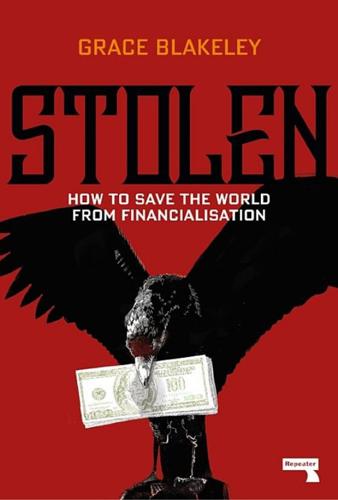
Stolen: How to Save the World From Financialisation
by
Grace Blakeley
Published 9 Sep 2019
Before he even got close, he started receiving threatening letters from the council’s bailiffs. They informed him that his late payment meant that his fine had doubled — and it kept doubling. Before long, Jerome was in £1,000 worth of debt to Camden Council. Now completely desperate, he took out an extremely high-interest payday loan to pay off his debts to the council. By this point, he was paying out more in expenses and debt repayments every week than he was earning at CitySprint. A few days later, the bailiffs returned to clamp Jerome’s £400 bike. The next day, his older brother found his body in the woods where they used to play as children.
…
In this way, middle-earners were able to acquire elite identities through wealth, even as wealth has become much more concentrated amongst the top 1%, who have also become much less socially mobile than ever before. On the other hand, those without access to such wealth and capital gains could still buy into the new consumer culture by taking out unsecured credit through credit cards, overdrafts, and payday loans. Corporations also started jumping on the bandwagon by offering consumers low-interest credit to purchase cars and consumer durables. Over time, the differential experiences of finance-led growth led to a divergence between the economic experience of the property-owning classes and those of everyone else.
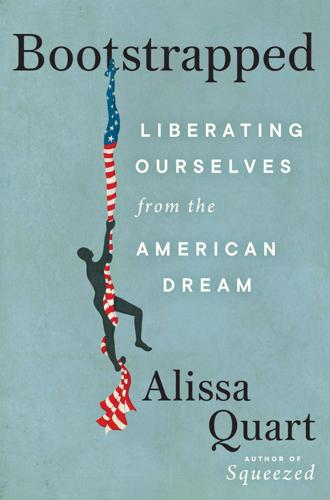
Bootstrapped: Liberating Ourselves From the American Dream
by
Alissa Quart
Published 14 Mar 2023
Fauntleroy was one of the army of people mounting these performances of self on GoFundMe as if it were a state program; it was not just for his medical care or to fix the car but also to pay for the small apartment he and his mother share. The need is so great, in fact, that GoFundMe and disability are not enough, and each month to cover their rent he had to take out a payday loan from Amscot, a chain that calls itself “the money superstore” and where the service fee is 10 percent of the amount advanced plus a “verification” fee. That a payday loan shop was the most convenient shopping excursion in his roughneck East Millenia neighborhood was no coincidence. Fauntleroy had gone there once a week for seven years—the employees at this predatory loan outlet know him by his first name and even how much money he needs.
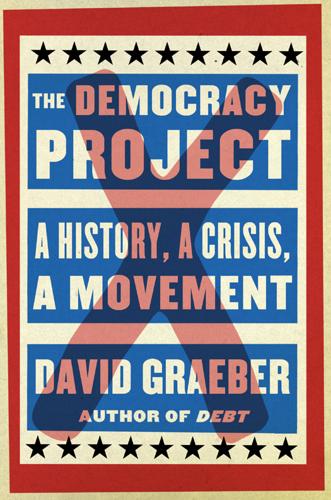
The Democracy Project: A History, a Crisis, a Movement
by
David Graeber
Published 13 Aug 2012
In 2004, for example, those eighteen to twenty-four ended up paying 22 percent of their income on debt payments (this includes principal, but doesn’t include service charges, fees, and penalties)—with about a fifth paying more than 40 percent—and for twenty-five- to thirty-four-year-olds, the cohort most impacted by student loans, things were even worse: they spent an average of a quarter of their income on debts. And these figures are true of younger Americans as a whole, regardless of education. We need hardly speak of the fate of that roughly 22 percent of American households so poor they have no access to conventional credit at all, who have to resort to pawn shops, auto title, or payday loan offices that charge as much as 800 percent annual interest. And all this was true before the crash! In the immediate wake of 2008 everyone in America who had any means to reduce their debt, and hence, the amount of their income siphoned off to Wall Street, immediately began to do so—whether by frenetically paying off credit card debt, or walking away from underwater mortgages.
…
They are often called the “subprimers,” since they are those most likely to have signed up for (or been tricked into) subprime mortgages. Having fallen victim to subprime mortgages with exploding adjustable rates, they are now faced with being harassed by collectors, having their cars repossessed, and, most pernicious of all, having to resort to payday loans for emergency expenses, such as those related to health care, since these are the Americans least likely to have meaningful health benefits. Those paydays operate with annual interest rates of roughly 300 percent a year. Americans in either of those overlapping categories—the working class and underemployed graduates with crippling student loans—are actually paying more of their income to Wall Street than they pay to the government in taxes.
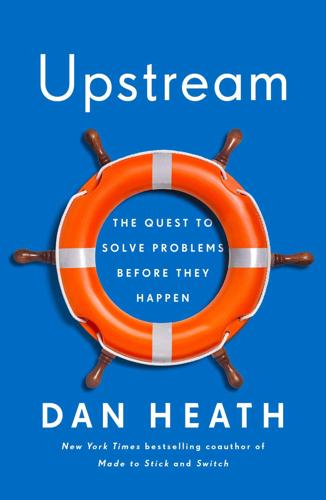
Upstream: The Quest to Solve Problems Before They Happen
by
Dan Heath
Published 3 Mar 2020
Imagine a single mother who can barely pay the bills each month and who has maxed out her credit card. Her kid needs $150 to play in a local basketball league. She can’t bear to say no—it’s one of the few healthy opportunities open to him in the neighborhood. But she doesn’t have the money and is still 10 days from her next paycheck. So she takes out a payday loan from the lender down the street. She’ll need to repay the loan in a month with 20% interest (the equivalent of a 240% APR). And if she doesn’t, it will roll over, and the interest will mount. It’s not a huge amount of money, but it might be enough extra debt to make her precarious finances topple.
…
The nurse who nabbed extra towels didn’t think, Hey, we’ve got a process problem here—we need a plan for handling three-day weekends. The nurses were tunneling. Their time was scarce; their attention was scarce. Grabbing towels from another department—which might cause that department to run out a few hours later—is roughly the equivalent of taking a payday loan. The bill will come due, but not right now. For the moment, the nurses can keep digging forward. Is the intent of this story to throw stones at nurses? Hardly. My guess is that if Anita Tucker had picked another group of professionals to shadow—lawyers or flight attendants or teachers—the results would have been about the same.
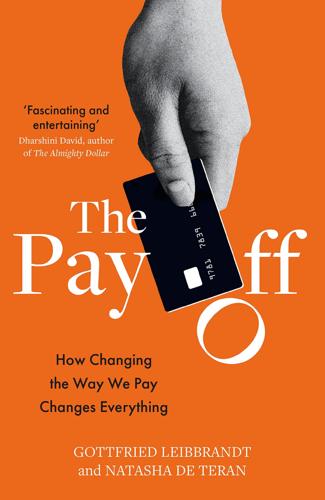
The Pay Off: How Changing the Way We Pay Changes Everything
by
Gottfried Leibbrandt
and
Natasha de Teran
Published 14 Jul 2021
Should you go into the red without them, they bombard you with letters and reminders about the dangers of an unarranged overdraft and threats of defaulting your account. Contrast that with the frictionless way in which you can borrow through cards and other point-of-sale credit instruments, and how these actually encourage customers to (over)spend – or how payday loan merchants target vulnerable borrowers and charge them outrageously high rates. Perhaps (with the exception of the aforementioned misdeeds) overdrafts are as much a missed opportunity for banks as they are an income stream. Increasingly this is the way banks see it – at least in Europe where they are faced with regulatory strictures on the one hand and competition from technology companies on the other (see Chapters 18 and 21).
…
Gox 200 N N26 158, 159 National Automated Clearing House Association (NACHA) 119 National Association of Estate Agents 128 National Audit Office, UK 23 National Cyber Security Centre (NCSC) 233 near field communication (NFC) controller 223–4, 225 neo-banks 158–9 Netflix 165 Netherlands 32, 58, 67, 99, 172, 179, 234, 260, 266 netting systems, bank 122–3 network effects and payment systems 68–72, 221 New Payments Platform (NPP) 83 New York State Department of Financial Services (NYSDFS) 259 New York’s District Attorney’s Office 259 Nicaraguan rebels 64–5 Noriega, General 64 North Korea 30, 108, 112–14, 141, 249, 250, 262 North, Oliver 64–5, 66 nostro and vostro accounts 141 O Obama, Barack 243, 244 Office of Foreign Assets Control (OFAC), US 249–50, 252, 253, 255, 259 Omni channel 197 one-click shopping 171–2 online payments 50–1, 137–8, 171–2, 174 open banking/Open Banking, UK 86, 180, 182–3, 223 Operation Socialist, GCHQ’s 234 overdrafts 18, 92, 98–9, 183 overspending and frictionless payments 170, 171, 173 P Pakistan 143 Papua New Guinea 8 parity code checks 65–6 Parry, Dorothea and Forrest 47 path dependence 71–2, 78 pattern detection 109–10 payday loan merchants 99 paying to pay 97–101 Payment Accounts Directive, EU 265–6 payment data, use of 178–85 payment initiation service providers (PISP) 181 Payment Services Directive (PSD) 240 Payment Services Directive 2 (PSD2) 83, 86, 180–3, 223, 240 payment stripping 259 payment trails/following the money 255–64 PayPal 3–4, 19, 51–2, 70, 144, 161, 163, 175, 178, 202, 204, 206, 216, 269 Penywaun, Wales 3 People’s Bank of China (PBoC) 100, 211 personal identification numbers (PINs) 49, 109 Petrobras 234 Philippines 113 phishing 110, 112 PIN-debit payments 49, 50, 57, 58, 69 Plaid 181 plastic credit cards, first 41 Pockit 37–8 point-of-sale borrowing 174–5 point of sale (POS) terminals 48, 49, 76, 216 Polish central bank 12 Pornhub 4 Portugal 172 pre-paid cards 37–8, 53, 74, 78, 158 Prelec, Drazen 173 price-comparison sites 89 Principia Mathematica (B.
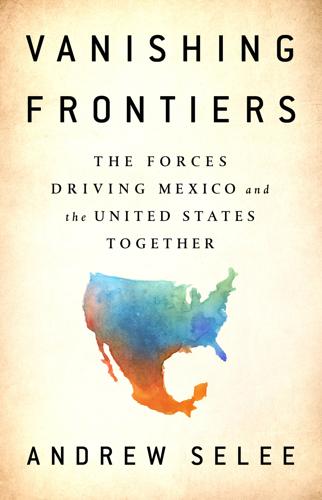
Vanishing Frontiers: The Forces Driving Mexico and the United States Together
by
Andrew Selee
Published 4 Jun 2018
America Móvil, started by Carlos Slim, owns both Tracfone and Straight Talk, which dominate the pay-as-you-go cell phone market in the United States, where users purchase the airtime they need rather than sign a monthly contract. This model is particularly popular in Mexico, and Slim’s businesses originally targeted Mexican immigrants, but then the services caught on with younger cell phone users who didn’t want to be tied to a monthly plan. Mexico’s Grupo Electra owns Advance America, the leading check-cashing and payday-loan service in the United States, also serving lower-income Americans who rely on small loans to get them from paycheck to paycheck. By sheer coincidence, Advance America has one of its paycheck offices in Poplar Bluff, Missouri, right next to one of the city’s six or seven Mexican restaurants and not far from the Mid-Continent Nails factory.
…
Most customers repay the loans within twenty-two days, and there is only a 12 percent default rate—most of which can be easily rescheduled for payment over a slightly longer period. “We want an experience where people can [access funds] quickly, simply, conveniently, transparently,” says Flores, and “in which the client is treated with respect.” It’s a sharp contrast to the way that payday-loan services and pawnshops work in Mexico. Surprisingly, he’s found that almost a quarter of the applications come from smallbusiness owners who need a loan to pay their employees on time. Technology innovation in Guadalajara was once mostly the province of large foreign-owned corporations, but today a growing number of Mexican-owned tech start-ups are taking hold.
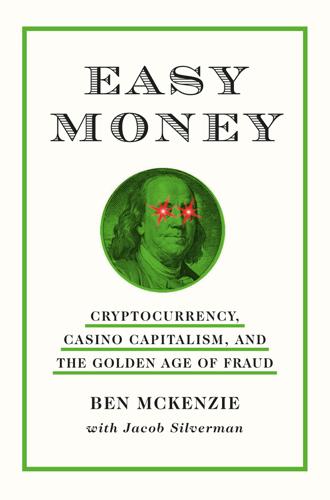
Easy Money: Cryptocurrency, Casino Capitalism, and the Golden Age of Fraud
by
Ben McKenzie
and
Jacob Silverman
Published 17 Jul 2023
But let’s not be gross about it, or lack any discernment or critical thinking. There’s a bridge too far and crypto is past that. You wouldn’t want to be responsible, even unwittingly, for convincing your fans to buy into a predatory financial instrument that was just as ethically compromised as a rigged casino or a payday loan vendor. There are better ways to make a little dough. ° ° ° As for our Brooklyn dad duo, the paycheck from the Slate article wasn’t exactly a game changer financially, but it served its larger purpose. I had emerged from celeb witness protection, where I’d been hiding since the start of the pandemic, to boldly set forth on a new venture.
…
And the people that profit are the owners of the casinos, i.e., the owners of the exchanges, as well as the people that own the trading firms. The implication was clear: Sam was both of those things. I spoke about how crypto has targeted lower income people, those least likely to be able to afford to lose money gambling. I mentioned the number of people taking out payday loans to gamble on crypto. “It doesn’t feel like it’s creating a lot of good for people. It feels like a net negative. I’m just, I’d like to be honest with you about that, and get your reaction to that.” “Yeah, and I think I disagree. I understand where you are coming from. Here’s what I’d say, but obviously you are certainly entitled to your own opinion on it, is first of all, like, there are multiple ways to frame everything.
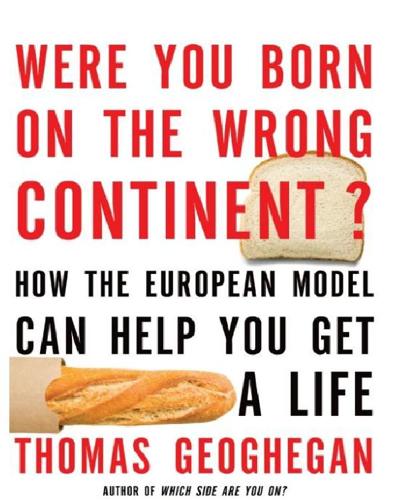
Were You Born on the Wrong Continent?
by
Thomas Geoghegan
Published 20 Sep 2011
And for the next four years I took no vacation. Yes, I had to admit: Germany was dark. But with no social democracy, it would have been a lot darker. 5 Clash of Civilizations Meanwhile, America had become dark. There was the nightmare of Bush v. Gore. We did not seem like a democracy. We had big tax cuts for the rich, and payday loans for the poor. Every day I went to Caffè Baci and read the Financial Times and would root for Germany and hope that, in terms of GDP, it would do a little better. Many a time, in the half hour for lunch, I would think: shouldn’t I be back over there pushing up GDP? I kept thinking, as I said, that in the 1930s people on the left went to die in Madrid.
…
As to the future of the German model, they have to fight that fight. Yes, I might talk about “taking off my angel wings,” but it’s kind of ridiculous to get involved. It’s Europe. Besides, if I was stuck in a social democracy, I’d just have to play defense. In the U.S., I’ve the luck of getting to go on the attack. When I come back here and see a payday loan store offering loans at 365 percent, yes, I could weep. Yet it’s a thrill to know I can take off my wings. “Oh, we can’t have anything like Europe has, can we?” That’s what some say. It’s a fair question. I think it’s quite possible. I now have stopped rereading and underlining Streeck’s great essay, “German Capitalism: Does It Exist?
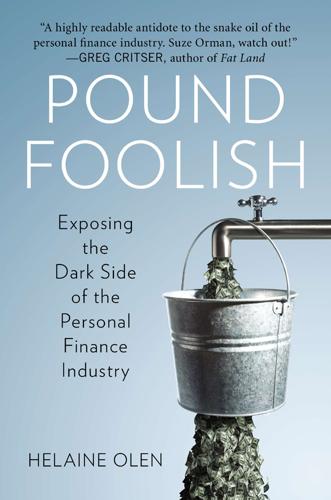
Pound Foolish: Exposing the Dark Side of the Personal Finance Industry
by
Helaine Olen
Published 27 Dec 2012
Median income for Americans ages forty-five to fifty-four fell from $66,800 to $61,000 in 2010. Of course, the national savings rate was decreasing. How could it not? From 10 percent in the early 1980s it had fallen to near zero at the millennium and still continued to plunge as the 2000s rolled on and desperate Americans turned to credit cards, lines of home equity, payday loans…pretty much anything to keep up with the bills. In the period between 2000 and 2008, Americans’ borrowed home equity more than doubled, from $5.4 trillion to $11.2 trillion. Revolving and installment debt also almost doubled, from $1.4 trillion to $2.6 trillion. As college costs soared, student loan debt piled up, increasing from an average of $12,750 per borrower in 1996 to a record-breaking $27,200 for students graduating with the aid of loans in 2011.
…
He appears regularly on Fox Business News (despite the cancellation of his show), proselytizes for supply-side economics, and in 2010 endorsed unsuccessful Republican candidate Zach Wamp for governor of Tennessee. At the same time, Ramsey despises industries that prey on the poor, and reserves special disgust for the payday loan business, calling them “scum-sucking bottom-feeding predatory people who have no moral restraint,” and repeatedly begs politicians to outlaw them. There’s no love lost for the banks, either, whom he regularly castigates for handing out credit cards and home mortgages to people who clearly did not have the means to pay back the debt.

Markets, State, and People: Economics for Public Policy
by
Diane Coyle
Published 14 Jan 2020
Other government agencies, such as competition regulators, are increasingly interested in behavioral remedies when they find that markets are not working in the best interests of consumers (box 5.2). Recent examples in the UK include a regulation by the Financial Conduct Authority and the Competition and Markets Authority (CMA) setting out how comparison websites for payday loans must display information so that consumers will select their cheapest option; they also required the energy companies to test different formats for information on bills to ensure consumers are more likely to switch to cheaper providers, and insurance companies to include the amount of last year’s premium on renewal letters so customers could see how much they were being asked to pay had gone up.
…
See energy oligopoly, 47 Olivetti, 107 Olson, Mancur, 267 Only the Paranoid Survive (Grove), 46 OPEC (Organization of the Petroleum Exporting Countries), 23, 57, 100, 273 Openreach (broadband company), 120, 121 OpenTable, 168 opinion polls, 180–81 opportunity costs, 77, 303, 306 opting out vs. opting in, 185, 187, 194 option value, 321 Orange (telecommunications company), 121 Oresund Bridge, 30 organ donation, 197 Organization for Economic Cooperation and Development (OECD), 24, 290 Orwell, George, 150 Ostrom, Elinor, 138, 143–47, 152, 155, 165 Ostrom, Vincent, 143 output efficiency (product mix efficiency), 10, 40 over-confidence, 173, 182, 199 over-fishing, 139, 143 over-grazing, 138 over-investment (gold plating), 113 Pacific Gas and Electric, 89 Pareto, Vilfredo, 9 Pareto efficiency. See efficiency Paris Metro, 308 partial equilibrium, 13, 47 patent box, 129–30 patents, 51, 61, 80 patent trolls, 151 paternalism, 172, 173, 195, 196–97 payday loans, 189 peak loading problem, 84 peer-to-peer lending, 81 Peltzman effect (risk compensation), 274, 275 pensions, 21, 186–87, 194, 202, 233, 251, 252 PepsiCo, 56 pharmaceuticals, 129–30, 247, 263 photovoltaics (PV), 126, 127 Pigou, Arthur, 19, 25 Piketty, Thomas, 216, 223, 226, 231 policing, 157 policy appraisal, 302–4; elements of, 303; evaluation distinguished from, 299; tools of, 297 policy evaluation: appraisal distinguished from, 299; econometric, 300–301; rarity of, 297; research on, 298, 300 political parties, 160 pollution, 13, 25, 32, 140, 147, 320 positional goods, 138, 161–62, 165, 167, 169 postal services, 21–22, 101, 104, 105 poverty, 203, 206; absolute vs. relative, 212, 213, 214 poverty gap, 213 poverty trap (welfare trap), 234, 236 power, in statistics, 301–2 PowerGen, 87 present bias (hyperbolic discounting), 183–85, 190, 316 present value, 183–84 price controls, 67, 112 price elasticity of demand, 19, 47, 79, 152 price fixing, 55 principal-agent problems, 284–86, 289 private roads, 29, 30 privatization, 69, 72, 280; of airlines, 106; defined, 108; impetus for, 109–11; mixed success of, 116–25; regulation following, 111–16; reversals of, 100–101, 103; in Turkey, 117; in United Kingdom, 87–88, 98, 100, 102–3, 114–22, 124–25, 258, 290 process innovation, 51 producer surplus, 47–49 product innovation, 51 production possibilities frontier, 10, 40 productivity: competition linked to, 46–47, 53, 110–11, 122; health linked to, 211; privatization and, 116–17, 121; of state-owned enterprises, 109 product mix efficiency (output efficiency), 10, 40 progressive taxation, 2, 7–8, 206, 208, 213, 225, 228–29, 232 Prohibition, 269 projection bias, 184 property rights, 33–34, 226, 291, 341; ambiguous, 148, 149; digital, 149, 150; over commons, 141, 145, 147, 165, 168; socially constructed, 152, 166 prospect theory, 178 PSA Peugeot Citroën, 63 public choice theory, 22–23, 256, 259–62, 271, 280, 289, 293 public goods, 1, 8, 159, 174, 243–45; examples of, 25–26, 27; features of, 28; financing of, 27–28; private goods vs., 27; pure vs. excludable, 25–26; research as, 128–29, 134 public-private partnerships, 29, 30, 100, 108, 257 public transport, 22, 80, 105, 119, 243, 245, 251, 276, 318; in London, 278, 308 public value, 327–29 Putnam, Robert, 155 quasi-hyperbolic discounting, 183–84 queuing, 140, 167 radio spectrum, 25, 31, 61, 140 railroads, 278; employment declines in, 116; fares of, 119; nationalization of, 100, 104, 125; as natural monopoly, 45, 46, 55, 61, 91, 98, 123; safety compromised in, 118 rainforest, 141 Ramsey, Frank, 312 Ramsey rule, 312, 313 RAND Corporation, 108 randomized control trials (RCTs), 298, 329–32 rationing, 142, 166–67, 168, 247 Reagan, Ronald, 22, 23, 70, 100, 256, 258 recessions, 209, 251 redistribution, 6, 227; through education, 8, 243, 251; efficiency and, 11, 225, 251; lump-sum, 14; Pareto efficiency distinguished from, 11–12, 14; through public services, 8, 243–45, 247; rationale for, 202; through taxation, 2, 7–8, 206, 208, 213, 225, 228–29, 232.
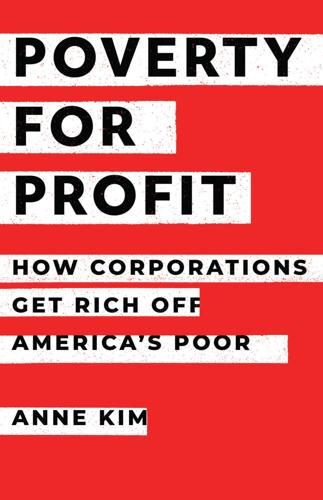
Poverty for Profit
by
Anne Kim
High tax-prep fees aren’t the only scam tax preparers perpetrate. Many firms further gouge their customers with “fast cash” “refund advance” products, such as “refund anticipation loans (RALs),” “refund transfers,” and “refund anticipation checks (RACs)” for customers who want—or need—their refund money right away.79 RALs work like payday loans. Taxpayers borrow against their refund for a cash advance, which gets paid back once the IRS sends the refund. When they first hit the market in the 1990s, annualized interest rates for these loans—which sometimes lasted only a week—ranged from 67 percent to 774 percent, according to the NCLC.80 At the height of the RAL boom, around 2000, the NCLC estimated, consumers spent $810 million in RAL fees, with much of this money coming from EITC recipients.81 At Jackson Hewitt, customers can start borrowing against their refunds as early as mid-December.
…
See also Medicaid dentistry Oregon: Medicaid reimbursement ratios, 108; not reporting data on LIHTC tenants, 205; prison budget, 171; tax preparer regulation, 28 Osborne, David, 47–49 Packard Bell Electronics Corp., 93 Pai, Ajit, 253–54n26 Pallasch, John, 79, 80 “papoose boards,” 105, 113–15, 117, 278n28 parole, 165, 175, 185 Pavetti, LaDonna, 58 payday loans, 22, 135 Peabody, Endicott, 194 Peabody, Malcolm (“Mike”), 193–94 Penn Credit Corporation, 187 Pennsylvania: home detention companies, 166; ICE detention facility, 176; Job Corps centers, 85–86, 97 Pequeneza, Nadine, 224 performance-based contracting, so-called, 225–26 Perot, Ross, 43, 51, 256n50 Personal Responsibility and Work Opportunity Reconciliation Act of 1996 (PRWORA), 60–61.
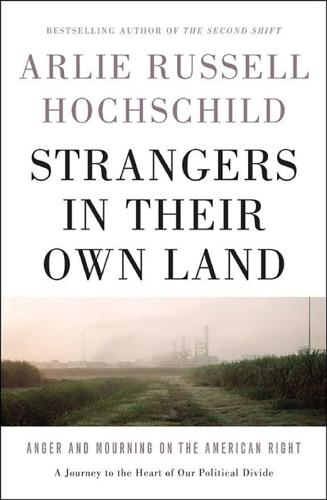
Strangers in Their Own Land: Anger and Mourning on the American Right
by
Arlie Russell Hochschild
Published 5 Sep 2016
“All my co-workers from back then are dead; most died young,” he tells me as he slowly leads me through a tidy home toward the dining room table on which he has set coffee cups, coffee, cookies, and a large photograph album. Driving north from Lake Charles through southwest Louisiana to DeRidder, I had passed a miscellany of gas stations, Family Dollar stores, payday loan offices, diners, and lush, green rice fields—crayfish were sometimes cultivated in the wet canals between rows of rice—flat on all sides to the horizon. Some 200 miles west of DeRidder, on land bordering Texas, lay a vast pine wilderness, once a no-man’s-land where the legendary outlaws Bonnie and Clyde robbed and roamed.
…
Sulphur is an industrial town of 20,000 built in the 1870s. Out of the car window I see signs of many other lines of work in Louisiana: Richard’s Boudin and Seafood Market, Sulphur Pawn and Discount Center, Bebop’s Ice House, lumber yards, barber shops, Family Dollar stores, Walgreens, J.C. Penney, PayDay Loans of Sulphur, and EZ Cash. As we head for her old school, she begins to describe her childhood. “I was born in the middle of the pack, fourth of six. My dad was the oldest of ten, and my mom was the youngest of seven, and everyone married and had kids. On Daddy’s side alone I have forty-six cousins, and on my mom’s side it’s about the same.
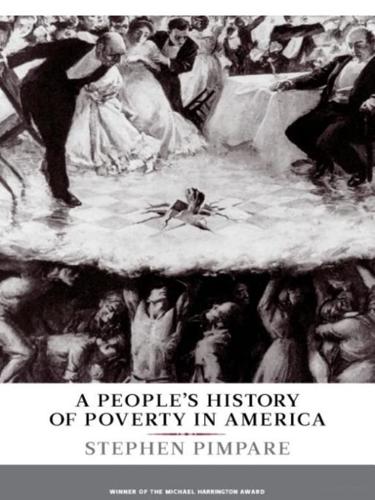
A People's History of Poverty in America
by
Stephen Pimpare
Published 11 Nov 2008
There were some gloomy East Side people standing around. The walls were covered with strange objects: guitars, shovels, blankets, clocks; with lace curtains, underwear and crutches; all these miserable trophies of the defeat of the poor.75 While by 2003 there were still some 11,600 pawnshops in the United States, Caskey suspects that payday loan brokers are replacing them as the emergency resource of choice. Perhaps as many as 15 percent of all Americans had used these high-cost (but easily obtained) loans by 2004, paying annualized rates of 350 to 1,000 percent. There were ten thousand institutions in this lucrative business by 2001, increasingly owned by large corporations with multiple storefronts throughout the country.
…
See National Welfare Rights Organization (NWRO) O’Beirne, Kate obesity rates occupation-based charities O’Connor, Stephen Olmstead, Frederick Law Operation Santa (New York letter-writing program) Orleck, Annelise orphanages/orphan asylums and African American children Brace’s “orphan trains,” and child labor demographics of orphan population Orshansky, Molly Orshansky method/Orshansky poverty line Orwell, George The Other America (Harrington) Ozark Hotel (Chicago) Packard, Elizabeth Paine, Thomas Parker, M.A. Parker, Star patronage pawnshops payday loans/check-cashing services Pease, Lewis Peguy, Charles Pennsylvania Gazette Pension Act (1818) pension programs and occupation-based charities Townsend’s movement for national old-age pension and veterans and widows A People’s History of the United States (Zinn) Perez, Marcello Personal Responsibility and Work Opportunity Reconciliation Act (1996).

The People vs Tech: How the Internet Is Killing Democracy (And How We Save It)
by
Jamie Bartlett
Published 4 Apr 2018
But what if anti-Semites are targeted with increasingly personalised virulent content, simply because a model suggests they’ll spend more time viewing it? Or perhaps you can sell 20 per cent more anti-depressants to people if you catch them at a certain point in the week and use messages that play to low self-esteem. What if payday loan ads and gambling offers were precisely worded and targeted at the very moment that someone is most vulnerable or short on cash? The extent to which our choices are ever truly free might depend on your view of free will (a group of philosophers known as ‘hard determinists’ question whether free will exists at all).
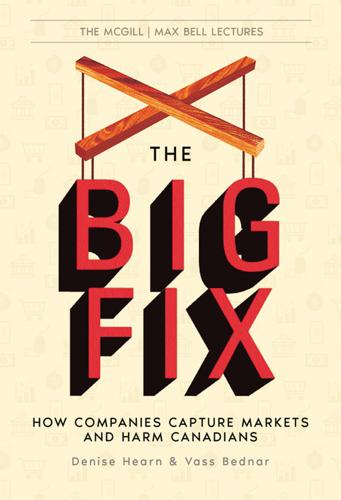
The Big Fix: How Companies Capture Markets and Harm Canadians
by
Denise Hearn
and
Vass Bednar
Published 14 Oct 2024
American Economic Liberties Project, February 25, 2020. https://www.economicliberties.us/our-work/the-illusion-of-choice/. 23 CBC Radio, “Wondering Why Your Glasses Are So pricey?” Cost of Living, September 20, 2020. https://www.cbc.ca/radio/costofliving/the-cost-of-living-on-the-cost-of-stuff-payday-loans-baby-formula-glasses-and-modern-monetary-theory-1.5715939/wondering-why-your-glasses-are-so-pricey-one-company-controls-almost-everything-about-them-1.5721176. 24 EssilorLuxottica, “Annual Shareholders’ Meeting 2024.” 25 Lieber, Chavie, “LensCrafters, Ray-Ban, and Designer Brands All Mark up Their Glasses.”

Big Capital: Who Is London For?
by
Anna Minton
Published 31 May 2017
The idea was that the policy would get households to move into smaller properties, but with few available, the main result has been debt and mental and physical health problems with disabled families particularly hard hit, as they often need a spare room for essential home adaptations or equipment to enable them to live independently. Research commissioned by the government itself found households cutting back on essential food and heating. Forty per cent reported being in arrears with their rent, a quarter said they had to borrow money, mostly from friends, and at least 7 per cent cited having to resort to payday loans.36 When the United Nations Special Rapporteur on housing, Raquel Rolnik, visited the UK in 2013 she reported, to the fury of the UK government, that a number of welfare reforms along with cuts in housing benefits ‘appear to compromise the realization of the right to adequate housing and other related human rights’.37 The final report stated: The Special Rapporteur regrets that some policies and practices which have resulted in the progressive realization of the right to adequate housing are being eroded, and that the structural shape of the housing sector has changed to the detriment of the most vulnerable.
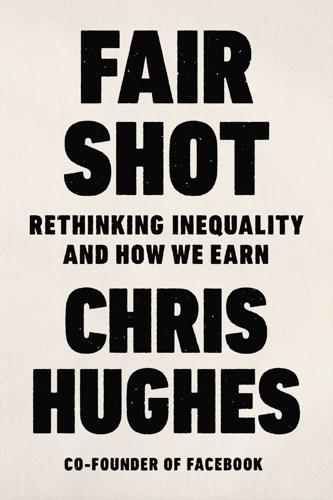
Fair Shot: Rethinking Inequality and How We Earn
by
Chris Hughes
Published 20 Feb 2018
Nearly all the participants had savings accounts and many of them thought up ways to make it harder for them to touch that money. One woman in Mississippi purposefully opened a savings account in a credit union an hour’s drive away from her home. She cut up her ATM card to make it harder to withdraw money from it, and she destroyed her checkbook so she wouldn’t be tempted by payday loans, which often require a signed check as collateral. Despite many similar stories of thoughtfulness and preparation from the families interviewed for the study, few of the participants managed to create long-term savings because of unpredictable life events like collapses in wages, hospitalizations, or unexpected childcare costs.

Where We Are: The State of Britain Now
by
Roger Scruton
Published 16 Nov 2017
The philosophy of the Other has pursued a winding and fascinating course in recent times, and has been especially influential in France, thanks to Alexandre Kojève, and to those who attended his interwar lectures: Levinas, Lacan, Sartre and de Beauvoir especially. 2Alexander Betts and Paul Collier, Refuge: Transforming a Broken Refugee System, London, 2017. 3The Times, 27 May 2017. 4The root of ummah is umm, mother. 5Douglas Murray, The Strange Death of Europe, London 2017. 6See Citizens Advice Bureau, pamphlet on Payday Loans, published March 2016. 7See the Tractarian Henry Wilberforce’s illuminating defence of the parish, as an ideal of local government answering to both material and spiritual needs, but at the time when he wrote rendered impotent by the mass migration to the cities: Henry William Wilberforce, The Parochial System: An Appeal to English Churchmen, 1838, reprinted Memphis, 2012.

The Psychology of Money: Timeless Lessons on Wealth, Greed, and Happiness
by
Morgan Housel
Published 7 Sep 2020
Sixteen million veterans could buy a home often with no money down, no interest in the first year, and fixed rates so low that monthly mortgage payments could be lower than a rental. The second was an explosion of consumer credit, enabled by the loosening of Depression-era regulations. The first credit card was introduced in 1950. Store credit, installment credit, personal loans, payday loans—everything took off. And interest on all debt, including credit cards, was tax deductible at the time. It tasted delicious. So we ate a lot of it. A simple story in a simple table: Household debt in the 1950s grew 1.5 times faster than it did during the 2000s debt splurge. 3. Pent-up demand for stuff fed by a credit boom and a hidden 1930s productivity boom led to an economic boom.

There Is No Place for Us: Working and Homeless in America
by
Brian Goldstone
Published 25 Mar 2025
Some, based on prior experience, knew that the conditions were no better elsewhere. If Efficiency was awful, at least it was familiar. And besides, Celeste concluded, going to another hotel wouldn’t solve her problem: she’d still be stuck in the “hotel trap,” as many referred to it. It was a business model that, like payday loans or rent-to-own schemes, preyed on the desperation of those with nowhere else to turn. Unable to lease an apartment, whether because of bad credit or a prior eviction or the sheer unaffordability of most places, families were compelled to pay excessive rates for accommodations that offered none of the security or clear tenancy rights of formal housing.
…
Pink was there, and so was Celeste. When Nyah had told her about the lockout notice, the result of a debt that had accumulated before Mike began working, Celeste sprang into action. Horrified at the thought of her daughter and grandson suffering the same fate as the other evicted residents, she took out a high-interest payday loan and, later, used her stimulus check to pay off the remaining balance. It pained Celeste to give Efficiency even one additional cent. In her mind, it was no longer just a shitty hotel; it was the embodiment of all the people and institutions that had mistreated or taken advantage of her. It was anyone who had told her, tacitly or overtly: You’ll do this because you have no other option.

The Color of Money: Black Banks and the Racial Wealth Gap
by
Mehrsa Baradaran
Published 14 Sep 2017
Especially for families on the bottom rung, owning a home provides a substantial buffer against the harshest edges of poverty, a stable foundation that can be passed down to the next generation. It can determine whether your neighborhood has decent or failing schools, whether you will be able to go to college, whether you will face eviction, or whether you can meet unexpected costs without having to resort to a payday loan. A store of wealth is self-reinforcing, as is its absence. As Billie Holiday sang, “Them that’s got shall get. Them that’s not shall lose."17 Historian Manning Marable has lamented that “the most striking fact about American economic history and politics is the brutal and systemic underdevelopment of black people."18 When the Emancipation Proclamation was signed in 1863, the black community owned a total of 0.5 percent of the total wealth in the United States.
…
This time, private equity firms are leading the charge.94 Buyers are given loans that look like mortgages, but they are in fact more like rental agreements, under which the borrower can be evicted because of a missed payment. In one example, a private equity investor bought a foreclosed home for $8,000 and sold it on contract for $36,000.95 In banking deserts, blacks rely disproportionately on payday lenders—they are more than twice as likely as any other race to use payday loans.96 With such costly credit options, it is no wonder that debt collectors extract as much as five times more judgments against black neighborhoods than white ones. Two studies conducted between 2015 and 2016 revealed that blacks were much more likely to be sued by debt collectors than any other racial group, even when differences in income were accounted for.

The Simple Path to Wealth: Your Road Map to Financial Independence and a Rich, Free Life
by
J L Collins
Published 17 Jun 2016
There are pervasive and powerful marketing forces at work seeking to obscure the idea that such a choice exists. We are relentlessly bombarded with messages telling us that we absolutely need the latest trinket and that we simply must have the most fashionable of currently trending trash. We’re told that if you don’t have the money, no problem. That’s what credit cards and payday loans are for. It is this thinking that makes it so hard for most people to see that it is possible to reach a million dollar net worth on an income of $25,000. This is not some evil conspiracy at work. It is simply business pursuing its own needs. But it is deadly to your wealth. The science behind the art of this persuasion is truly impressive, and the financial stakes are huge.

Meet the Frugalwoods: Achieving Financial Independence Through Simple Living
by
Elizabeth Willard Thames
Published 6 Mar 2018
Now, they were chopped into warrenlike apartments fronted by patches of dirt littered with cans, newspapers, broken glass, and cigarette butts. There was an empty lot a block up from my apartment, choked with weeds and bags of garbage. Laundromats, bodegas, an off-brand dollar store, hair salons, storefront churches, and payday loan businesses were what the neighborhood offered. Graffiti coated everything, even the metal grates that shop owners pulled down to protect their glass storefronts every night. There were no restaurants or banks or gyms or coffee shops or clothing stores or grocery stores or doctor’s offices. But there were people everywhere: out on stoops, chatting, calling to one another, laughing, scolding kids who ran around barefoot, seemingly oblivious to the broken glass and trash.
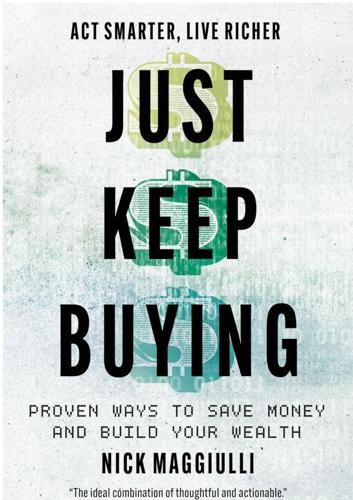
Just Keep Buying: Proven Ways to Save Money and Build Your Wealth
by
Nick Maggiulli
Published 15 May 2022
For example, research published in the Journal of Economic Psychology found that British households with higher levels of outstanding credit card debt were “significantly less likely to report complete psychological well-being.”³⁷ However, no such association was found when examining households with mortgage debt. Researchers at Ohio State echoed these findings when they reported that payday loans, credit cards, and loans from family and friends caused the most stress, while mortgage debt caused the least.³⁸ On the physical health front, a study in Social Science & Medicine found that high financial debt relative to assets among American households was associated with “higher perceived stress and depression, worse self-reported general health, and higher diastolic blood pressure.”

Pity the Billionaire: The Unexpected Resurgence of the American Right
by
Thomas Frank
Published 16 Aug 2011
CHAPTER 2 1929: The Sequel Seventy-nine years after the Great Crash, we got our own economic calamity, a crushing bust to put the exclamation point on the end of an anemic boom. As a lesson in the built-in treachery of the system, the collapse was unexcelled in living memory. As an indictment of official America’s consensus economic doctrine, it surpassed any plaint about NAFTA, any righteous editorializing about the payday loan industry, any fretting about the concentration of wealth into ever-fewer hands. If you had brought the world’s teenaged anarchists together in some great international congress and asked them to design an ideal crisis, they could not have discredited market-based civilization more completely than did the crash of 2008.

The Nation City: Why Mayors Are Now Running the World
by
Rahm Emanuel
Published 25 Feb 2020
We worked with the Center for Economic Progress, a nonprofit that offers free tax preparation services to low-income Chicago families, to study the pilot. The study showed that families which received the EITC quarterly had improved their financial stability. The quarterly payment enabled families to stay out of the claws of the payday loan business. * * * Economic growth is good, especially when it works for everyone. But another one of the primary jobs of a mayor is to be a steward, to carefully weigh the costs and benefits of the manner in which money is spent and the ways in which subsidies and tax breaks are doled out.

Gigged: The End of the Job and the Future of Work
by
Sarah Kessler
Published 11 Jun 2018
Whenever a worker was paid less than her average, Even deposited extra money in her account, interest-free. When she made more than her average, Even paid itself back. It created the semblance of steady income. Even eventually partnered with Walmart to give employees an option to receive part of their paycheck before their two-week pay period was over, helping them avoid payday loans if they faced an unexpected expense. Another startup called Honest Dollar provided retirement savings accounts for independent workers. It offered a $5 monthly discount to drivers for Lyft, which introduced it in a blog post as “an easy, affordable investing platform built with independent contractors in mind.”8 (Goldman Sachs acquired Honest Dollar four months later.)
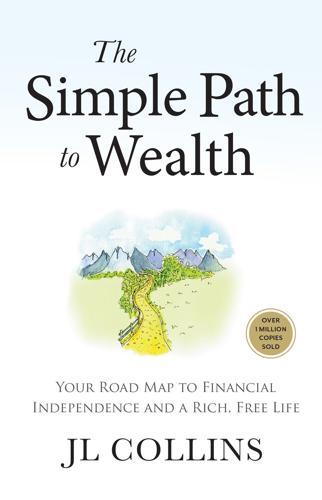
The Simple Path to Wealth (Revised & Expanded 2025 Edition): Your Road Map to Financial Independence and a Rich, Free Life
by
JL Collins
There are pervasive and powerful marketing forces at work seeking to obscure the idea that such a choice exists. We are relentlessly bombarded with messages telling us that we absolutely need the latest trinket and that we simply must have the most fashionable of currently trending trash. We’re told that if you don’t have the money, no problem. That’s what credit cards and payday loans are for. It is this thinking that makes it so hard for most people to see that it is possible to reach a million-dollar net worth on an income of $50,000. This is not some evil conspiracy at work. It is simply business pursuing its own needs. But it is deadly to your wealth. The science behind the art of this persuasion is truly impressive, and the financial stakes are huge.

Never Let a Serious Crisis Go to Waste: How Neoliberalism Survived the Financial Meltdown
by
Philip Mirowski
Published 24 Jun 2013
It underpins the argument that the poor must of necessity bear the brunt of austerity now, because it will only get worse for them later if they do not.71 As a political ploy, right-wing think tanks began their counteroffensive against a rising chorus pleading taxation of the rich in 2011 by disingenuously twisting the evocative rhetoric of “equality” in pointing out (in a fit of indignation) that a large proportion of the poor do not “pay their share” of income taxes (viz., none at all) and thus lacked “skin in the game”; this echo chamber of contempt ricocheting throughout the news media was so extravagantly over the top that it became the target of satire on many of the usual cable outlets, such as Jon Stewart and Stephen Colbert.72 In the current climate, it seems there is almost nothing you could do to the poor that would earn you opprobrium and ostracism from polite company, (maybe) short of sexual molestation of children. Prior to the 1980s, the practice of “salary purchase,” aka “payday loans,” had been outlawed; but a concerted effort beginning at the state level progressively legalized this particular form of predatory lending. As of 2008, there were more payday lender outlets in the United States than there were McDonald’s and Burger King restaurants combined, with turnover that dwarfed casinos, the other major poverty vampire operation.73 What is astounding about such operations is that they are no longer treated as reviled bottom-feeders by both the media and politicians, but rather as exemplary of the types of legitimate businesses that provide opportunity and salvation in the current contraction.
…
See Neoliberal Thought Collective (NTC) Nugent, Ted NYU (New York University) O Obama, Barack Occam’s Razor Occupiers Occupy Handbook Occupy London Occupy Movement Occupy Wall Street (OWS) Odyssey (Homer) Old Thinking Oldham, Taki, Turf Wars Open questions Open Society The Open Society and Its Enemies (Popper) Oracle at Delphi Ordoliberalism Oreskes, Naomi Original Sin O’Rourke, Kevin Orszag, Peter Orwell, George Osborne, George Outsourced Self (Hochschild) OWS (Occupy Wall Street) P Page, Scott Palin, Sarah Pareto, Vilfredo Patterson, Scott, Dark Pools Paul, Ron Paulson, Hank Payday loans Payne, Christopher PBS Peck, Jamie Pecora, Ferdinand Perry, Rick Pesaran, Hashem Pew Economic Policy Group Financial Reform Project Philip Morris Phillips Curve Philosopher’s Stone Pimco Pinochet, Augusto Pinto, Edward Pissarides, Christopher Pity the Billionaire (Frank) Plant, Raymond Plato Plehwe, Dieter Ponzi scheme Poon, Martha Popper, Karl Portes, Richard Posner, Richard Power Auctions Predator Nation (Ferguson) Prediction as red herring Prescott, Edward C.
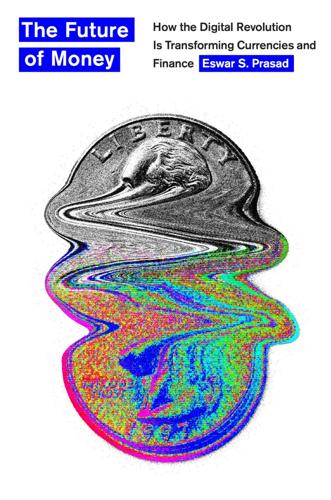
The Future of Money: How the Digital Revolution Is Transforming Currencies and Finance
by
Eswar S. Prasad
Published 27 Sep 2021
These institutions can range from the moneylender on a street corner in Mumbai to a pawnshop in Tokyo to a multibillion-dollar hedge fund in New York City. Together, they constitute the shadow financial system. The unsavory reputation of shadow finance is not entirely unwarranted. Pawnshops and payday loan providers tend to charge exorbitant interest rates for loans to individuals who live on the economic margins and have little access to banks. A more benign perspective is that even a high-interest loan for a term of a few days is better than no loan when food for one’s family is on the line, and certainly there is no duress involved in taking out these loans.
…
An additional 18.7 percent of US households (24.2 million households composed of about 49 million adults) were underbanked in 2017. The latter term refers to households that had, in the previous twelve months, used an “alternative financial services provider” for one of these products or services: money orders, check cashing, international remittances, payday loans, refund anticipation loans, rent-to-own services, pawnshop loans, or auto title loans. FDIC statistics on financial inclusion in the United States are available at Federal Deposit Insurance Corporation, FDIC National Survey of Unbanked and Underbanked Households, October 2018, https://economicinclusion.gov/downloads/2017_FDIC_Unbanked_Underbanked_HH_Survey_ExecSumm.pdf.
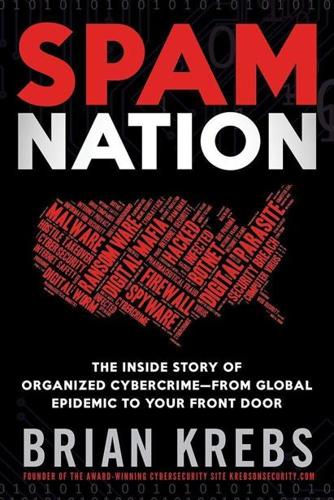
Spam Nation: The Inside Story of Organized Cybercrime-From Global Epidemic to Your Front Door
by
Brian Krebs
Published 18 Nov 2014
“It’s a period of innovation, and people clearly are looking around for another sweet spot that’s as good as pharma, which made more money more reliably than anything else out there,” he said. “A few affiliate programs are trying to peddle pirated e-books and movies; others are getting into [advertising] payday loans. There are now tons of programs that will write term papers for students. That seems to be a big thing now.” The other factor weighing on the spam industry, Savage says, is that many affiliates have found more success advertising websites using so-called “black SEO” techniques to manipulate search engine rankings for their sites.

Smart Money: How High-Stakes Financial Innovation Is Reshaping Our WorldÑFor the Better
by
Andrew Palmer
Published 13 Apr 2015
It is a very large industry: there are twenty-four thousand payday outlets in the United States, compared with a little more than fourteen thousand McDonald’s restaurants in 2012. A survey by the Federal Deposit Insurance Corporation found that roughly one in twelve American households, or some 17 million adults, are “unbanked,” meaning they lack a current account; another one in every five households has an account but uses alternatives as well—payday loans, check-cashing services, pawn shops, and the like.1 A lot of guff is talked about the evils of payday lending. When people have a need for cash, it is generally better for them to go to actual businesses with physical outlets than to turn to loan sharks with baseball bats. Although predatory lenders undoubtedly exist, the deeper problem is that even the good ones end up charging high rates of interest in order to cover not just their operating costs, but also the higher credit risks that they are taking on by making unsecured loans to low-income borrowers.
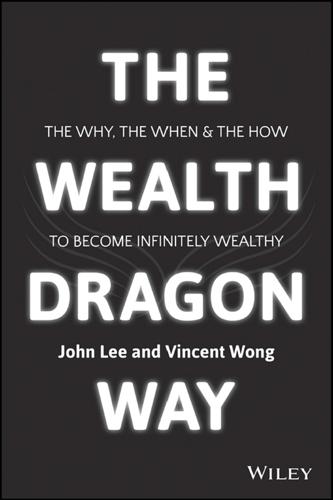
The Wealth Dragon Way: The Why, the When and the How to Become Infinitely Wealthy
by
John Lee
Published 13 Apr 2015
Sellers are relieved of their burden; they get a fast, secure deal and we get a profit. The BBC once interviewed me on this subject, and I was adamant that it is not exploitative to help people who urgently need to get their money out of their properties or be relieved of the burden of mortgage repayments. It's like payday loans, which are now getting a bad reputation. If people need to borrow money to eat and heat their houses, what other options have they got? If the government can't help them, and their friends and family can't help them, they have to go to someone who can. One of the most touching stories I remember was a widow who called me and said she wanted to sell her house as fast as possible.

Cogs and Monsters: What Economics Is, and What It Should Be
by
Diane Coyle
Published 11 Oct 2021
This is because of its construction that people make ‘non-rational’ or ‘biased’ decisions, which implies ‘rational’ is better. For instance, economics predicts that rational consumers will use APRs to compare the cost of loans, but if that were the case none of us would borrow on credit cards, never mind take out payday loans. This means behavioural economics may prove more effective in policies ranging from financial and consumer regulation to social policy. Yet the idea of ‘choice architecture’ to ‘nudge’ people towards decisions that are better for them—albeit on their own criteria—inevitably turns economists into paternalists, or even the policy wonk equivalents of Vance Packard’s Hidden Persuaders (1957) showing how marketers and advertisers could manipulate consumers.
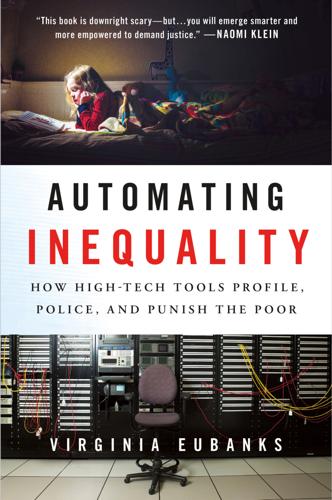
Automating Inequality
by
Virginia Eubanks
While the algorithms that drive this target-marketing don’t explicitly use race to make decisions—a practice outlawed by the Fair Housing Act of 1968—a category like “Ethnic Second-City Strugglers” is clearly a proxy for both race and class.6 Disadvantaged communities are then targeted for subprime lending, payday loans, or other exploitative financial products. Reverse redlining is rational discrimination. It is not discriminatory in the sense that it relies on hostile choices being made by racist or classist individuals. In fact, it is often characterized as inclusionary: it provides access to financial products in “underbanked” neighborhoods.

Scotland’s Jesus: The Only Officially Non-Racist Comedian
by
Frankie Boyle
Published 23 Oct 2013
The recession has led to an increase in lending and there are new laws to clamp down on loan sharks. The industry still insists they receive few complaints, then again it can be hard to type an email in a plaster cast, especially when your laptop’s in Cash Converters . . . and it’s surprising how important teeth turn out to be in forming coherent speech. Payday loan firms have been told to sort out their dodgy practices. Some have hit back, pointing out that without them as a safety net many people could fall dangerously behind on their online bingo commitments. The move was prompted by news of an imminent cash loans advertising push, started by rumours that Carol Vorderman was to have her eyes surgically replaced with slowly rotating spiral discs.
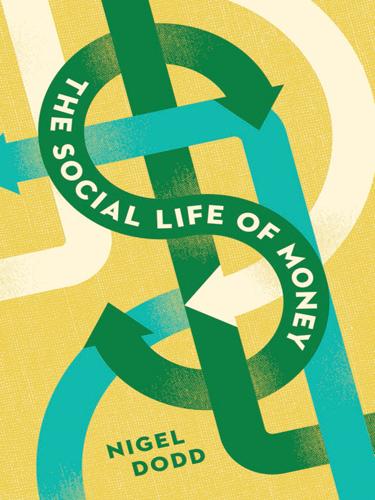
The Social Life of Money
by
Nigel Dodd
Published 14 May 2014
Thompson’s “The Moral Economy of the English Crowd in the 18th Century,” which describes rioting against those merchants and traders who raised the price of grain to exploit short-ages (Thompson 1971: 78–79). More recent examples include various forms of price regulation such as the minimum wage, trade tariffs, price gouging, and antidumping laws. In the financial sector, attempts to regulate interest rates—capping payday loans, for example—might be seen as examples of just pricing. The just price is considered by Aquinas to be objectively fair. It is both “fixed” and “real.” According to Simmel, however, the principle merely “corresponds with the substantialist-absolutist world view” that was characteristic of the Middle Ages, which assumes that there is an objective relationship between an object and its price.
…
See also death of God; eternal return; Übermensch Nigeria, 301 ninety-nine percent, 3, 129–30, 370–71 nihilism, 141, 142 Nishibe, Makoto, 345 Nixon, Richard, 45, 98–99, 244 Nixon shock, 45n Nobel Prize, 330 nomos, 262, of the Earth, 222, 223 nongovernmental organizations (NGOs), 239 nonpecuniary values, 287, 294 North, Peter, 373 North Atlantic Treaty Organization (NATO), 239 Nostradamus, 49 Nuer, 284 numismatics, 165; sociological, 34 nummus, 223, 262 occultism, 7, 11; and capital, 56, 154 Occupy movement, 1, 3, 50, 130n55, 201, 267, 370 Oedipus complex, 149, 150, 230 Oesterreichische Nationalbank, 20n Old Glory Mint, 361 one trillion dollar platinum coin, 385, 386, 387, 392 optimal currency area (OCA), 20, 253 order of worth, 200 Organisation for Economic Co-operation and Development (OECD) Orléan, André, 19, 43–46, 250; on Mauss, 32 Ortega y Gasset, José, 247 overaccumulation, in Bataille, 176; in Baudrillard, 192; and financialization, 61n22; in Harvey, 68, 166, 243; Marxian concept of, 65, 88, 205 overbanking, 122, 124 overproduction, 57, 73 Owen, Robert, 342 Pan, 77, 246 panic, etymology, 77n; financial, 77 paradox of thrift, 208, 347, 348 parallax view, 80–81, 205 Park, Robert, 319 Parsons, Talcott, 8, 34, 230, 276n patriarchy, 336 Patton, Paul, 227 Paulhan, Jean, 172n payday loans, 325 PayPal, 378, 380n Peace of Westphalia, 216 Pecunix, 42, 316 Peebles, Gustav, 304–5 peer-to-peer (P2P) currencies, 105, 365, 370 peer-to-peer (P2P) lending, 247, 316 peer-to-peer (P2P) payment networks, 365 pension fund socialism, 77 pension funds, 59, 68, 75, 110, 129n52, 132, 221, 243 pensioners, 2, 22, 72, 77, 88, 126 perfect money, 14, 30, 197, 315, 316, 317–22, 326, 328–30, 339, 341, 356–57, 375, 382 perfect society, 30, 315, 316, 320–21, 322, 326, 329–30, 351 Perroux, François, 207 philanthropy, 166 Pixley, Jocelyn, 315n Plato, 200, 313 Platonism, 322, 326 Plender, John, 50 Poe, Edgar Allen, 185 poetry, 313, 314, 331 Polanyi, Karl, 13, 36, 57n16, 271, 279–86, 291, 292, 294, 299, 306; on the double movement, 128, 280, 311; on embeddedness, 279, 280–81, 285; on fictitious commodities, 279–80; on formal versus substantive approaches to the economy, 285; The Great Transformation, 279, 282, 284, 286; on limited and general purpose money, 279, 282–83, 285, 286, 325, 373; on the market, 372, 279–81; on money and language, 297; on planned laissez-faire capitalism, 280 Polillo, Simone, 218–19 Polybius, Histories, 239 Ponzi, Charles, 117n Ponzi finance, 58, 117n, 118, 199; and Bitcoin, 368 Ponzi stage, 120.
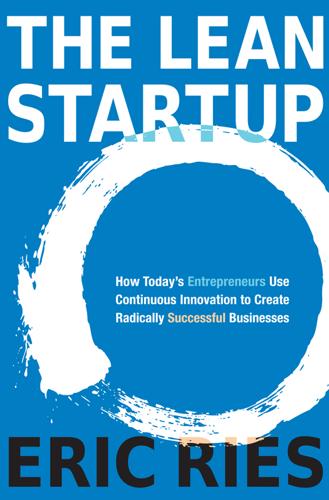
The Lean Startup: How Today’s Entrepreneurs Use Continuous Innovation to Create Radically Successful Businesses
by
Eric Ries
Published 13 Sep 2011
On July 21, 2010, President Obama signed the Dodd–Frank Wall Street Reform and Consumer Protection Act into law. One of its landmark provisions created a new federal agency, the Consumer Federal Protection Bureau (CFPB). This agency is tasked with protecting American citizens from predatory lending by financial services companies such as credit card companies, student lenders, and payday loan offices. The plan calls for it to accomplish this by setting up a call center where trained case workers will field calls directly from the public. Left to its own devices, a new government agency would probably hire a large staff with a large budget to develop a plan that is expensive and time-consuming.
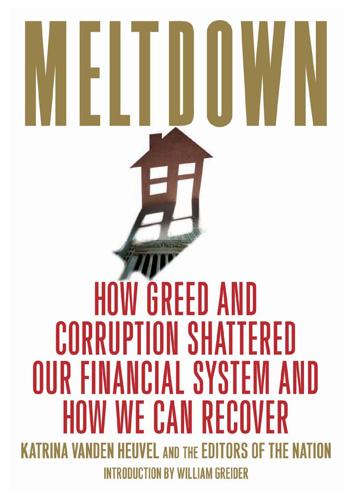
Meltdown: How Greed and Corruption Shattered Our Financial System and How We Can Recover
by
Katrina Vanden Heuvel
and
William Greider
Published 9 Jan 2009
In fact, easy credit became the American substitute for decent wages. Once you worked for your money, but now you were supposed to pay for it. Once you could count on earning enough to save for a home. Now you’ll never earn that much, but, as the lenders were saying—heh, heh—do we have a mortgage for you! Payday loans, rent-to-buy furniture and exorbitant credit card interest rates for the poor were just the beginning. In its May 21 cover story on “The Poverty Business,” BusinessWeek documented the stampede, in just the last few years, to lend money to the people who could least afford to pay the interest: Buy your dream home!

Nomadland: Surviving America in the Twenty-First Century
by
Jessica Bruder
Published 18 Sep 2017
-So when the obviously homeless old man you have observed hiding his trash bag of stuff in a bush near your van every morning smiles and says hello like he knows you, it is unnerving to say the least. -Because you realize you have joined the growing club of people who live on the streets, and there is not so much difference between the two of you after all. A few days later, LaVonne followed up with a guilt-wracked confession. She explained in a new post that she’d been relying on payday loans to survive the month and, at $255 each, they were due in a week with $45 interest apiece. She was upset and ashamed. Her RTR friend Sameer, who was traveling with Mr. Pico the chihuahua, wrote back quickly: I wish I was in your vicinity so I could give you, my sister, a hug. I would like to let you know that you are not alone in this situation.

The New Class Conflict
by
Joel Kotkin
Published 31 Aug 2014
As he puts it: “For millions of younger Americans—say, those 40 and under—living better than their parents is a pipe dream. They won’t.”72 Some financial experts believe that future generations, by lacking stable employment or any kind of financial equity, will become more dependent on the kinds of instruments, such as prepaid credit cards and payday loans, that have historically been associated with the poor.73 The future facing this generation, suggests the American Prospect, is an unemployment rate twice the national average and “flat or declining wages.”74 American Herbivores Some commentators on millennials suggest that these downwardly mobile trends are accepted, and even embraced, by the new generation.

Listen, Liberal: Or, What Ever Happened to the Party of the People?
by
Thomas Frank
Published 15 Mar 2016
This detail was an important victory for the poor—and also a measure without which Obamacare could not accomplish the other things it does, such as stopping insurers from cancelling sick people’s insurance. Another triumph was the establishment of a Consumer Financial Protection Bureau in 2010, a much-needed regulatory agency that is supposed to keep an eye on predatory practices by payday loan shops, credit card companies, and the like. The CFPB is especially interesting to the historian of modern liberalism because its mission statement denounces debt products of the past that were “overly complicated” as well as “loans that [Americans] did not fully understand”—qualities that some well-graduated Democrats often think of in positive terms.16 One place where workers definitely came first was Obama’s 2012 reelection campaign.
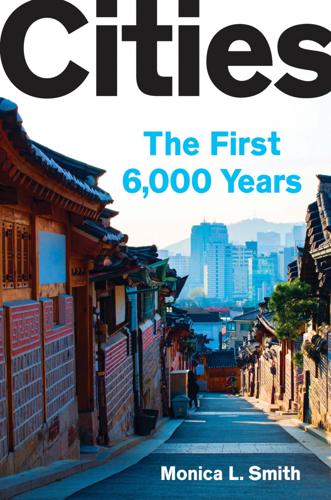
Cities: The First 6,000 Years
by
Monica L. Smith
Published 31 Mar 2019
Educating oneself about the best way to spend resources is in and of itself a time-consuming occupation among people in the middle class (just think about how much time you’ve spent looking for that “perfect” gift). In the past, going into debt for bling was different from the hand-to-mouth debt of day laborers, and it still is: payday loans and car-title loans cater to an entirely different socioeconomic spectrum from credit cards and home-equity loans that can be expended for an infinitely large number of purposes . . . including, ironically, the consolidation of other debts. The challenges of choice are not new to the modern age.

Artificial Unintelligence: How Computers Misunderstand the World
by
Meredith Broussard
Published 19 Apr 2018
Women are charged more than men for haircuts, dry cleaning, razors, and even deodorant. Asian-Americans are twice as likely to be charged more for SAT prep courses.22 African American restaurant servers make less in tips than white colleagues.23 Being poor often means paying more for necessities. Furniture on installment plans costs more than outright purchase. Payday loans have a far higher interest rate than bank loans. Housing is considered affordable if it takes 30 percent or less of a household’s monthly income, but poor renters are often stuck paying more for housing because of a variety of factors related to economic instability. “In Milwaukee, the majority of poor renters devote at least half their income to rent, and a third pay at least 80 percent,” sociologist Pat Sharkey writes in a review of two ethnographies, Matthew Desmond’s Evicted: Poverty and Profit in the American City and Mitchell Dunier’s Ghetto: The Invention of a Place, the History of an Idea.24 Inequality is unfair, but it’s not uncommon.
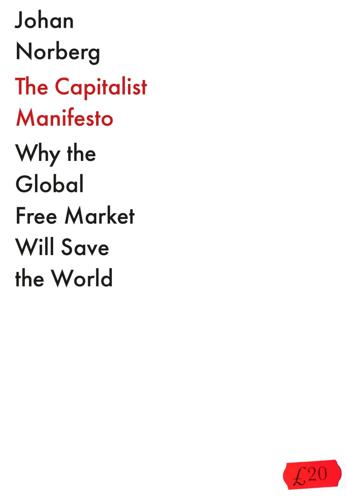
The Capitalist Manifesto
by
Johan Norberg
Published 14 Jun 2023
It is not the bottom that has slipped, but the ceiling that has been raised.18 Share of households per income group19 I know, it’s easy to get the feeling that ‘when my grandfather was my age, he could support his wife and three children and have a house built without borrowing a penny, while I have to take out a payday loan to afford a PlayStation’, but it ignores the fact that your grandfather only had to pay a tenth of his income to the government, and that in his time it was actually legal to build a new house somewhere (and as late as 1950, the chance was more than even that his home would lack a bathroom).20 In addition, the generally low wages made labour-intensive projects such as building a house cheap.
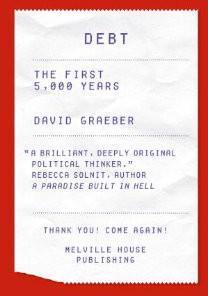
Debt: The First 5,000 Years
by
David Graeber
Published 1 Jan 2010
Just as the United States had managed to largely get rid of the problem of political corruption by making the bribery of legislators effectively legal (it was redefined as “lobbying”), so the problem of loan-sharking was brushed aside by making real interest rates of 25 percent, 50 percent, or even in some cases (for instance for payday loans) 120 percent annually, once typical only of organized crime, perfectly legal—and therefore, enforceable no longer by just hired goons and the sort of people who place mutilated animals on their victims’ doorsteps, but by judges, lawyers, bailiffs, and police.25 Any number of names have been coined to describe the new dispensation, from the “democratization of finance” to the “financialization of everyday life.”26 Outside the United States, it came to be known as “neoliberalism.”
…
My purpose here has been less to engage with it directly than to show how it has consistently encouraged us to ask the wrong questions. Let’s take this last paragraph as an illustration. What is Ferguson really saying here? Poverty is caused by a lack of credit. It’s only if the industrious poor have access to loans from stable, respectable banks—rather than to loan sharks, or, presumably, credit card companies, or payday loan operations, which now charge loan-shark rates—that they can rise out of poverty. So actually Ferguson is not really concerned with “poverty” at all, just with the poverty of some people, those who are industrious and thus do not deserve to be poor. What about the non-industrious poor? They can go to hell, presumably (quite literally, according to many branches of Christianity).
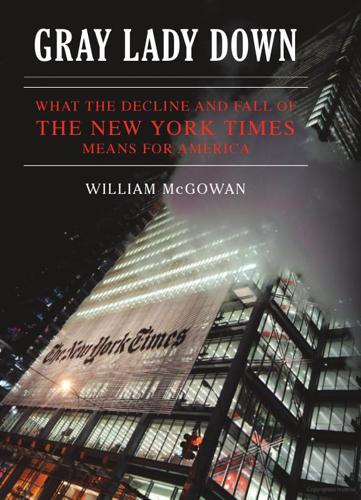
Gray Lady Down: What the Decline and Fall of the New York Times Means for America
by
William McGowan
Published 16 Nov 2010
In the meantime, mounting debt forced the Times to turn to another outsider, the Mexican telecommunications billionaire Carlos “Slim” Helu, for a loan of $250 million so it can make interest payments on that debt. The analyst Henry Blodgett described the transaction with Slim as “the corporate equivalent of borrowing money from a payday loan shop.” Whereas the Times had once characterized Slim as a “robber baron,” now it was calling him a “shrewd investor.” When one of Slim’s holdings got involved in a Mexican telecommunications scandal in early 2010, the Times was accused of dragging its feet in reporting it out of deference to its financial angel.

Throwing Rocks at the Google Bus: How Growth Became the Enemy of Prosperity
by
Douglas Rushkoff
Published 1 Mar 2016
But taking a cue instead from the hands-on, do-it-yourself bias of the digital age, the activists came up with a much simpler solution: buy the debt. They launched a project called the Rolling Jubilee,48 raising money from donors to buy back and then dissolve debt. With just $700,000 of initial donations, they have managed to dissolve over $17 million of student debt and $15 million of medical debt and are now targeting payday loans and private probation debts.49 And the more people they get out of debt, the more new donors they create. Such solutions may not be highly technological, but they are digital in spirit, especially in the way they retrieve the peer-to-peer mechanisms of mutual aid and distribute personal risk and liability throughout a network.

The Second Machine Age: Work, Progress, and Prosperity in a Time of Brilliant Technologies
by
Erik Brynjolfsson
and
Andrew McAfee
Published 20 Jan 2014
Schneider, and Peter Tufano conducted a 2011 study asking people about “their capacity to come up with $2,000 in 30 days.” Their findings are troubling. They concluded that, “Approximately one quarter of Americans report that they would certainly not be able to come up with such funds, and an additional 19% would do so by relying at least in part on pawning or selling possessions or taking payday loans. . . . [In other words, we] find that nearly half of Americans are financially fragile. . . . [A] sizable fraction of seemingly ‘middle class’ Americans . . . judge themselves to be financially fragile.”8 Other data—about poverty rates, access to health care, the number of people who want full-time jobs but can only find part-time work, and so on—confirm the impression that while the economic bounty from technology is real, it is not sufficient to compensate for huge increases in spread.

Frugal Innovation: How to Do Better With Less
by
Jaideep Prabhu Navi Radjou
Published 15 Feb 2015
Barclays Bank, a UK multinational banking and financial services company, reports that people tend to have little consideration for “rainy days”. Most have no significant savings, spending what they earn and getting by only as long as they have a job. More worryingly, some customers face severe financial strain, typically use payday loans, are late with repayments and withdraw cash on credit cards. This latter group might be expected to reduce spending on nonessentials, but they actually spend more than average, precisely when they are in financial trouble. Worried that such behaviour on a large scale could harm the bank and the economy, Barclays has begun to look at how it might turn around its profligate customers.
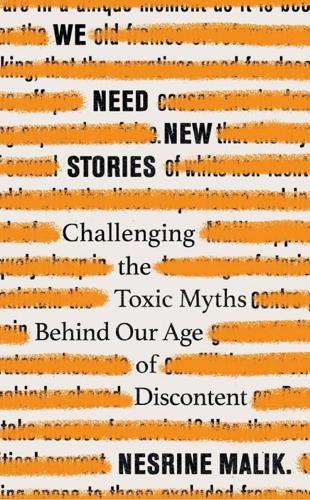
We Need New Stories: Challenging the Toxic Myths Behind Our Age of Discontent
by
Nesrine Malik
Published 4 Sep 2019
It collapsed HR codes of conduct, measures against hate speech and incitement (to be found in the majority of professional establishments, academic or otherwise) and general decisions made in the interest of protecting the student body into censorious activity. One university was given a ‘red’ ranking, indicating that the institution ‘has banned and actively censored ideas on campus’, because its student union banned advertising by payday loan companies on campus. The university said it was ‘simply a common sense effort to prevent exploitation of students.’ In 2018, it emerged that Spiked received six-figure donations from the Charles Koch Foundation – the Kochtopus was extending its tentacles to the UK. Manipulating of data to come up with free speech campus hysteria headlines is a common practice.
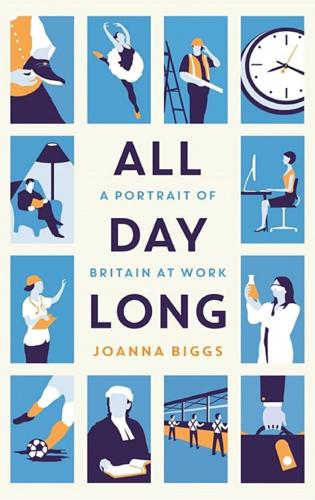
All Day Long: A Portrait of Britain at Work
by
Joanna Biggs
Published 8 Apr 2015
It’s been estimated that 30 per cent have a reading age of 11 or less; 40 per cent in Cardiff joined up as a ‘last resort’. A third of recruits drop out before completing basic training. A soldier in Major D’s company will have to leave the army because he joined his friends in taking cocaine on a night out and got caught; another was AWOL; yet another had built up such a degree of debt with a bank and a payday loan company that he had only £50 a month to live on out of a £1,200 monthly salary. Major D and the platoon commander set out to repair the situation: they went to the bank and spoke to the manager, and the interest was cleared. Then they spoke to the loan company, ‘who were very good’ and wrote off their interest.
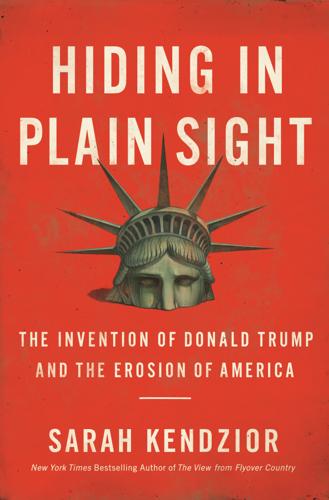
Hiding in Plain Sight: The Invention of Donald Trump and the Erosion of America
by
Sarah Kendzior
Published 6 Apr 2020
Louis’s tenuous comeback, obliterating retail and office jobs while decimating the agricultural and manufacturing sectors across the rest of the state. The abandoned lots and hollowed-out houses from earlier decades of hardship were joined by foreclosed homes and empty offices. Workers were laid off in droves, long-standing malls closed, and payday-loan outlets multiplied. Some outlets combined pawn shops with gun shops, allowing Missourians to trade in their jewels for weapons. People wanted weapons because they felt afraid. I watched as St. Louis’s storefronts shuttered while Manhattan’s bankers walked free. I watched as people on television, none of them from around here, assured Americans that the economy was cyclical, a line that smacked of spin.
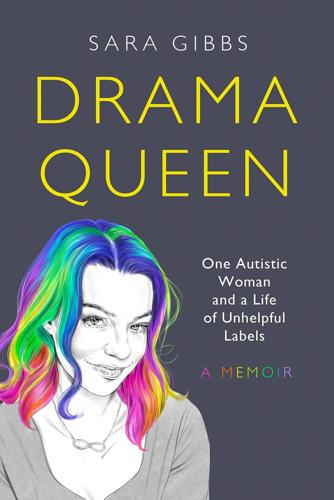
Drama Queen: One Autistic Woman and a Life of Unhelpful Labels
by
Sara Gibbs
Published 23 Jun 2021
As soon as I got home, my health began to plummet. My back and neck pain revved up to full volume again. I stopped exercising. I started to feel sick most of the time. It felt like I was paying back the burst of energy I had enjoyed while I was doing the course with interest. Like someone had sold me a payday loan with excruciating repayment terms and I had failed to read the small print. Back in my new role as Proud Aunt, I was loving every second I spent with my nephew, but I also felt dismally underqualified to care for him. Whenever we were left alone together, I would panic that he would hurt himself.
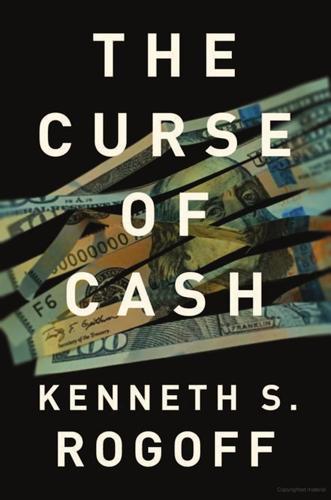
The Curse of Cash
by
Kenneth S Rogoff
Published 29 Aug 2016
Low-income households and individuals go without banks for various reasons, including the inability to meet minimum deposit requirements, monthly service fees, and lack of convenient access in lower-income neighborhoods. In the United States, more than 8% of households were un-banked in 2013, according to an FDIC survey.3 Another 20% were underbanked, meaning they also used alternative financial services outside the banking system, including prepaid cards, payday loans, pawn shops, and check-cashing services. More than 25% of adult Americans do not have a credit card. Unfortunately, the cost of not having bank access is high. Check-cashing services charge exorbitant fees; for immigrants and others who need to wire funds abroad and transfer money to relatives, the transaction costs can amount to 10–15% or more.
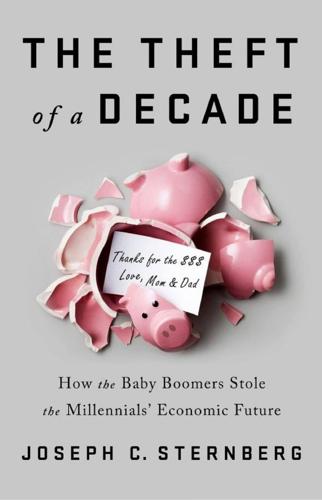
The Theft of a Decade: How the Baby Boomers Stole the Millennials' Economic Future
by
Joseph C. Sternberg
Published 13 May 2019
And then there were all the other huge things Washington got wrong for Millennials after 2008, policies that were so wrong they arguably outweigh the benefits of Pell Grant expansion. The fundamental problem all along has been that there is no market mechanism to warn colleges, lenders, parents, or students themselves that an individual student might be making a bad financial decision to go to college. For any other type of loan a person takes out—from a credit card to a payday loan to a mortgage—the lender assesses the potential borrower’s creditworthiness and the riskiness of the loan (Does this person have a good credit rating? Is the loan backed by collateral?) and then proposes an interest rate that compensates for the risk. That interest rate in turn sends a strong signal to the borrower, forcing her to think about whether she’ll really be able to repay.
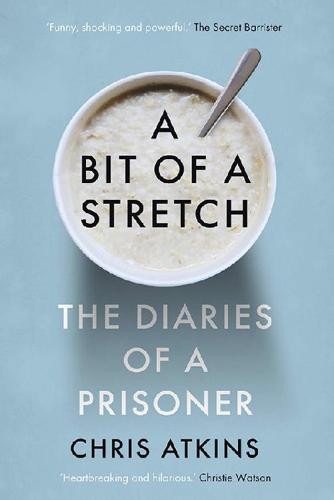
A Bit of a Stretch: The Diaries of a Prisoner
by
Chris Atkins
Published 6 Feb 2020
He’s about 50, and is surprisingly ripped for someone who’s spent most of their life on crack. He slopes into our cell talking 19 to the dozen, blurring the line between words, groaning and laughing. ‘Man got mad debts, innit. Big man on da Fours gonna fuck me up, you get me.’ Samuels is heavily indebted to a spice dealer, and the interest is accruing faster than a payday loan. He has no means to pay, but the dealer keeps supplying more drugs on tick. Things have now come to a head, as a screw has just found a phone in the dealer’s cell. The dealer will have to appear before an adjudicator – a visiting magistrate who rules on serious offences – and the punishment is likely to be an extra month on his sentence.
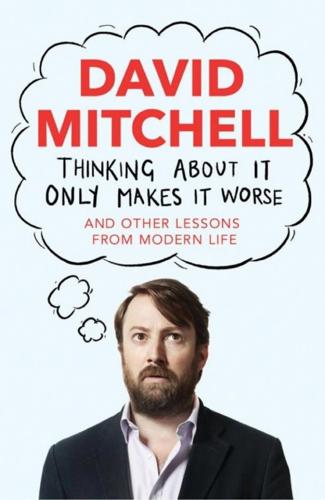
Thinking About It Only Makes It Worse: And Other Lessons From Modern Life
by
David Mitchell
Published 4 Nov 2014
McDonald’s: “Ever felt like putting on some elasticated jogging bottoms and really letting go? Why not today? Two years and 15 stone down the line, you can always bounce back via a fat-camp documentary on Sky.” British Airways: “No one is actually going to save the environment, so you might as well enjoy it while it lasts.” Payday loans: “If you were the sort of person who was ever going to understand compound interest, you wouldn’t be in this mess. We can literally put off the shitstorm until next week. I mean, next week! It’ll probably never happen!” Cancer Research UK: “Don’t think of this as chucking your money away altruistically, like with Amnesty.
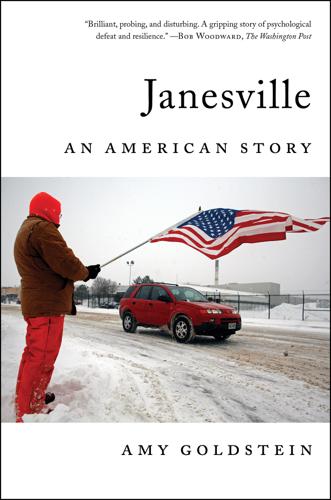
Janesville: An American Story
by
Amy Goldstein
Published 17 Apr 2017
The mural on the back of City Hall, illustrating the coming of the railroad through town in the 1850s, has a steam locomotive and a spike-driving man, and, lettered across the bottom, “History. Vision. Grit.” So Janesville goes on, yet it is altered. The change can be glimpsed from the many “For Sale” signs that appeared along residential streets, from the payday loan franchises that opened along the Milton Avenue commercial drag running north from downtown, from the enlarged space now occupied by the Salvation Army Family Center. And the citizens of Janesville? They set out to reinvent their town and themselves. Over a few years, it became evident that no one outside—not the Democrats nor the Republicans, not the bureaucrats in Madison or in Washington, not the fading unions nor the struggling corporations—had the key to create the middle class anew.
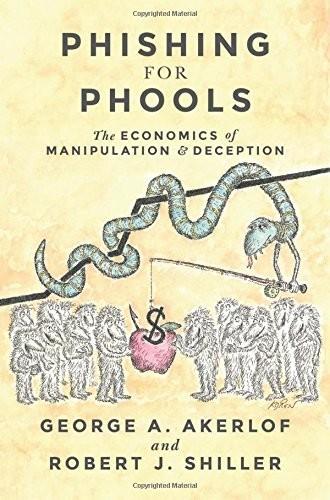
Phishing for Phools: The Economics of Manipulation and Deception
by
George A. Akerlof
,
Robert J. Shiller
and
Stanley B Resor Professor Of Economics Robert J Shiller
Published 21 Sep 2015
A recent economics article on “hand-to-mouth consumption” shows that in 2010 the median US working-age family held less than one month’s income in cash, or in checking, savings, or money-market accounts; in addition, but not surprisingly, the median direct holdings of stocks or bonds was exactly zero.6 A study using British diaries of spending gives another indication that many are just juggling the bills; for monthly earners, expenditures are down a full 18 percent in the last week of the monthly pay period, relative to expenditures in the first week after payday.7 We also know that a significant fraction of households do not make it. Some 30 percent of households say they have resorted to super-high-interest “alternative forms of borrowing” at least once over the past five years; those methods include, for example, use of pawn shops, auto-title loans, or short-term payday loans.8 In 2009 a full 2.5 percent of householders reported they had gone bankrupt in the past two years (most of which had been pre-Crash).9 That 2.5 percent may seem like a small, relatively innocuous number; nevertheless, it suggests that a quite significant fraction of the population will go bankrupt over the course of their lifetimes.
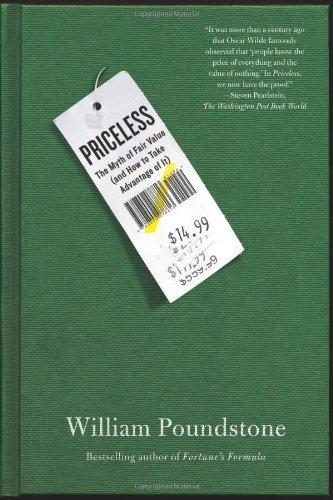
Priceless: The Myth of Fair Value (And How to Take Advantage of It)
by
William Poundstone
Published 1 Jan 2010
Forty-seven Pricing Gender A group including Sendhil Mullainathan and Eldar Shafir conducted a particularly ambitious experiment in the fall of 2003. They got permission from a large consumer lender in South Africa to test a grab bag of psychological tricks in its junk-mail pitches for loans. The lender was offering the equivalent of American payday loans—short-term cash for the working poor, at loan shark rates. The lender sent letters offering a special interest rate to 53,194 past customers. Among other factors, Mullainathan and Shafir’s team tested the effect of having a photograph in the mailing. They found stock photos of pleasant, smiling faces and put them in the lower right corner of the letter, near the signature.

On the Run: Fugitive Life in an American City
by
Alice Goffman
Published 30 Apr 2014
Men and boys stood at its busiest intersection, offering bootleg CDs and DVDs, stolen goods, and food to drivers and passersby. The main commercial street included a bulletproofed Chinese takeout store that sold fried chicken wings, single cigarettes called loosies, condoms, baby food, and glassines for smoking crack. The street also included a check-cashing store, a hair salon, a payday loan store, a Crown Fried Chicken restaurant, and a pawnshop. On the next block, a Puerto Rican family ran a corner grocery. Roughly one-fourth of the neighborhood’s households received housing vouchers, and in all but two households, families received some type of government assistance.13 6th Street is not the poorest or the most dangerous neighborhood in the large Black section of Philadelphia of which it is a part—far from it.

We Are All Fast-Food Workers Now: The Global Uprising Against Poverty Wages
by
Annelise Orleck
Published 27 Feb 2018
Most workers take home between $41 and $51 a month. The cost of living in the zone is lower than in the US but not by that much. Workers take loans from employers to make it till the next paycheck. “So they fall deeper and deeper into debt every month because the companies charge high interest on the payday loans. It keeps them almost enslaved. They work till they have no more energy,” Binos says, sad and angry in a soft-spoken way. In 2016, hourly compensation costs for Filipino garment workers were among the lowest in the world. And yet, Philippine government officials and factory owners warn Binos that factories will shut down and move to Bangladesh “if our workers earn too much money.”
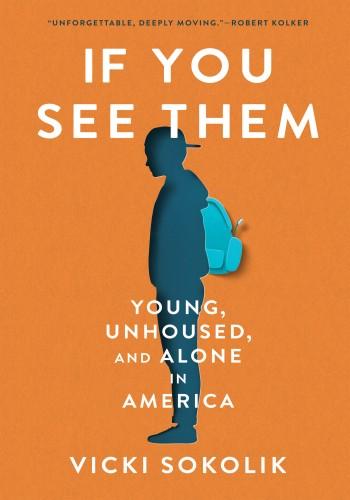
If You See Them
by
Vicki Sokolik
Published 23 Nov 2023
That cycle of poverty is intensified by an establishment that feeds off this vulnerable population, undermines them, and disables them further with hidden traps and chutes to nowhere except further down. Before I met Chalet, I had no idea that corporate America took advantage of this population by encouraging high-interest payday loans, rent-to-own furniture and appliances, and “Buy Here Pay Here” car lots that push the indigent still deeper into debt. I have witnessed so many people get royally screwed. “At-risk youth” is a term used in the United States to describe students who require temporary or ongoing intervention in order to succeed.
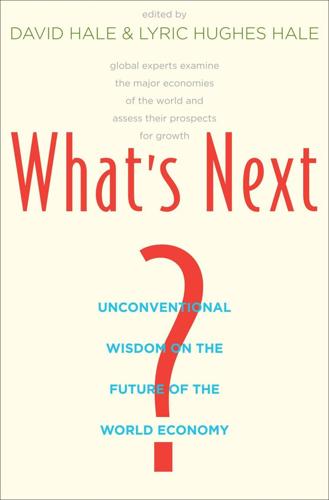
What's Next?: Unconventional Wisdom on the Future of the World Economy
by
David Hale
and
Lyric Hughes Hale
Published 23 May 2011
Dodd-Frank’s Missing Pieces Far more important than anything that Dodd-Frank does are the things that—for good or ill—it does not do. The most obvious deficiency is its silence on GSEs. Although Senator Dodd and Representative Frank found space to empower regulators to crack down on retail payday loans and to order companies to report purchases of “conflict gold” from Africa, they somehow neglected to say anything about some of the chief culprits behind the housing bubble and subsequent financial collapse. Fannie Mae and Freddie Mac facilitated—if not encouraged—all the mortgage-underwriting excesses of the 2000s.

Platform Revolution: How Networked Markets Are Transforming the Economy--And How to Make Them Work for You
by
Sangeet Paul Choudary
,
Marshall W. van Alstyne
and
Geoffrey G. Parker
Published 27 Mar 2016
Still another potential source of future growth is the hundreds of millions of “unbanked” people, both in the developing world and in less affluent neighborhoods in the U.S. and other developed countries, who currently have no access to tools that can help them pay their bills, borrow money, save, and make investments. Because they live in areas without bank branches and lack the capital needed to qualify for a traditional bank account or line of credit, the unbanked are forced to rely on costly, inconvenient, and sometimes fraudulent alternatives like check-cashing services, money order businesses, payday loan companies, and illegal loan sharks. These substandard financial operators represent another barrier to self-sufficiency that makes it harder for the poor to escape poverty. Now that millions of these less affluent consumers have access to mobile technology in the form of cell phones, the possibility of creating affordable online financial platforms customized to their needs has become a reality.
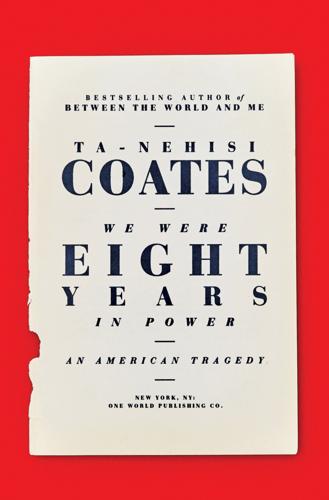
We Were Eight Years in Power: An American Tragedy
by
Ta-Nehisi Coates
Published 2 Oct 2017
— THIS SPRING I FLEW down to Albany, Georgia, and spent the day with Shirley Sherrod, a longtime civil rights activist who embodies exactly the kind of patriotism that Obama esteems. Albany is in Dougherty County, where the poverty rate hangs around 30 percent—double that of the rest of the state. On the drive in from the airport, the selection of vendors—payday loans, title loans, and car dealers promising no credit check—evidenced the statistic. When I met Sherrod at her office, she was working to get a birthday card out to Roger Spooner, whose farm she’d once fought to save. In July 2010, the conservative commentator Andrew Breitbart posted video clips on his website of a speech Sherrod had delivered to the NAACP the previous March.

The Millionaire Fastlane: Crack the Code to Wealth and Live Rich for a Lifetime
by
Mj Demarco
Published 8 Nov 2010
You put faith into politicians and government to change the system, instead of focusing on how you can change yourself. “A bigger government is the solution. More regulation, more programs, and more services. The government should serve the people. Rich people should pay more in taxes for their good fortune-they can afford it and I can't!” You view pawnshops, payday loan stores, and credit cards as a means of supplemental income. “Groceries can't wait until the next paycheck-my family has to eat! Besides, there's a sale on crab legs for only $18 a pound.” You have filed for bankruptcy at least once. “It wasn't my fault-I overextended myself and didn't expect to lose my job.
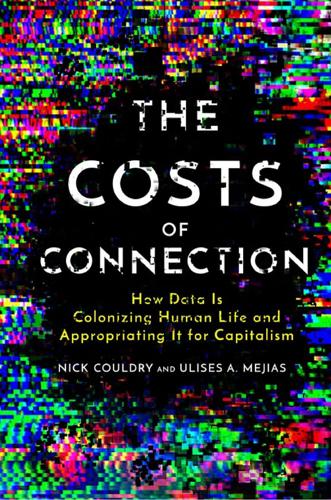
The Costs of Connection: How Data Is Colonizing Human Life and Appropriating It for Capitalism
by
Nick Couldry
and
Ulises A. Mejias
Published 19 Aug 2019
There is even the practice of onboarding, which involves matching data from one’s offline activity (gathered, for example, if you give your email address in the middle of a transaction that you thought was offline) with the much larger amount of data available about one’s online activities.49 The public recently got a rare glimpse of some of the secret practices of the social quantification sector during testimony to the US Senate Committee on Commerce, Science, and Transportation, which revealed that the data broker industry was collecting and selling lists of rape and domestic abuse victims, sufferers of dementia and erectile dysfunction, and payday loan responders, among others.50 In theory, all this data collection must work around privacy and consumer-rights constraints, but often it does not. Although some countries offer more protection than others, Katherine Strandburg’s observation that “US law for the most part has not regulated the datafication or repurposing of information that is acquired as a byproduct of providing service”51 is applicable beyond North America and particularly in developing countries.52 In India, for instance, one can easily buy lists of one hundred thousand individuals (car owners, retired women, or any number of categories) for less than $250; the lists are generated from information collected by mobile companies or even by enterprising individuals working at banks or hospitals looking to make some extra cash.53 In China, regulation about what data companies can collect and what they can do with it is intentionally relaxed, which the government hopes will make Chinese companies more competitive in the global market.54 Across the globe, regulation is also difficult because corporations can work across two or more of the abovementioned domains; Google, for instance, is a hardware and software manufacturer as well as a data analyst and broker.

Buy Now, Pay Later: The Extraordinary Story of Afterpay
by
Jonathan Shapiro
and
James Eyers
Published 2 Aug 2021
With several buy now, pay later providers planning to expand to higher-value retailers, or offer their products in store, the risk that consumers could take on unaffordable levels of debt is increasing.’19 The connection with payday lending had been made by the Australian Senate in 2018 during its inquiry into financial services targeted at Australians at risk of financial hardship. That inquiry had provided an opportunity for Afterpay to explain how its product differed to payday loans because it didn’t charge customers any interest, let alone the extortionate rates levied by predatory payday lenders. Now the Woolard report made clear that Afterpay would need to go through the same process of educating policy-makers in Britain, where payday lending had become a major problem in the wake of the financial crisis.
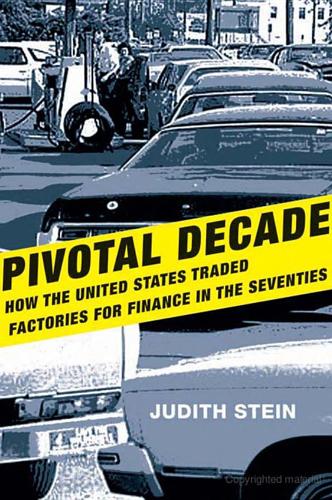
Pivotal Decade: How the United States Traded Factories for Finance in the Seventies
by
Judith Stein
Published 30 Apr 2010
Despite popular outrage, the industry blocked legislation in the Democratic Congress prohibiting usury. Usury used to be illegal, but in 1980 Jimmy Carter and the Democratic Congress repealed all interest rate controls and the national law prohibiting usury. This repeal is what makes it possible for credit card companies to charge 30 percent interest and lenders to make the notorious “payday” loans that charge desperate people a real interest rate of more than 500 percent. Legislation capping rates at 15 and 18 percent failed to pass the Congress and the Senate in early 2009.118 Banks blocked a law, once championed by Obama, to allow bankruptcy judges to lower the amounts owned on mortgage loans.119 The financial services industry is probably more concentrated than it was before the crisis.
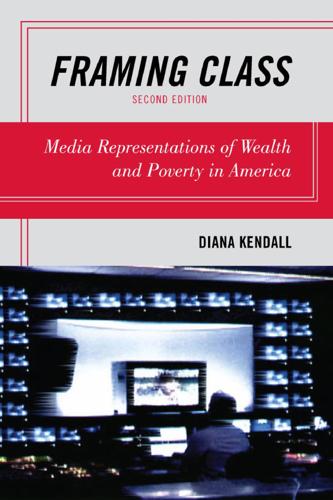
Framing Class: Media Representations of Wealth and Poverty in America
by
Diana Elizabeth Kendall
Published 27 Jul 2005
A woman referred to as “Melissa” in the book was still working at Walmart, where her wages had risen from $7 to $10 an hour in the intervening nine-year period.135 In his 2010 book, Gary Rivlin emphasizes the exploitation of the working poor by the “poverty industry.” According to Rivlin, the recession has not been equally difficult for everyone: the “mercenary entrepreneurs” have enriched themselves by preying on the “credit-hungry working poor” and misleading them about instant tax refunds, payday loans, subprime mortgages, pawnshop specials, and rental furniture and appliances with strings attached.136 Were it not for books like these, the mainstream media might not have published as many reports about the growing problems of the working poor. Through media framing of stories about this group and the increasing problem of long-term unemployment, journalists provide media audiences with information and explode myths that have perpetuated and exacerbated economic and social inequalities in this country for many years.

The Age of Cryptocurrency: How Bitcoin and Digital Money Are Challenging the Global Economic Order
by
Paul Vigna
and
Michael J. Casey
Published 27 Jan 2015
In Canada, the United Kingdom, Germany, and Australia, the proportion of people above the age of fifteen with a bank account ranges from 96 percent to 99 percent. But head to the United States, and the figure slips to 88 percent. Add in a separate “underbanked” category—that is, those who may have a bank account, but also are driven to “nontraditional” banking sources such as check cashers or payday loans—and the percentage of the American population with insufficient access to the financial system exceeds 30 percent. Whereas China has delivered bank accounts to 64 percent of its people, in Argentina, despite Buenos Aires’ large, educated, and internationally savvy middle-class population, just 33 percent of the country is banked, a figure less even than India’s 35 percent.

Misbehaving: The Making of Behavioral Economics
by
Richard H. Thaler
Published 10 May 2015
However, this incessant fretting about opportunity costs takes a toll. Having to constantly worry about where the money is going to come from to pay the rent makes it hard to keep up with everything, and may contribute to some of the bad decisions made by the poor, such as taking out and rolling over payday loans. † The median is the statistical term for middle. If all the prices are ranked from high to low, the median answer is the one with as many answers higher as lower. ‡ A recent study finds that when U.S. supermarkets were confronted with the challenge of a Walmart entering their home market, all suffered, but those who used a promotional pricing strategy (e.g., frequent sales) experienced significantly greater revenues and long-term viability than an everyday low price strategy (Ellickson, Misra, and Nair, 2012). 8 Sunk Costs Vince paid $1,000 to an indoor tennis club that entitled him to play once a week for the indoor season.
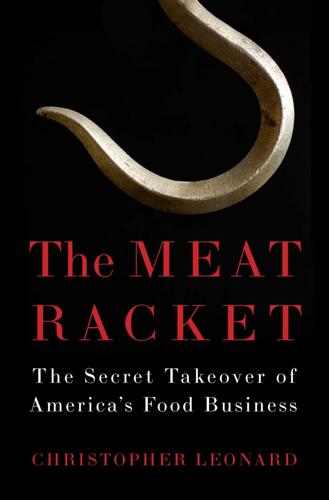
The Meat Racket: The Secret Takeover of America's Food Business
by
Christopher Leonard
Published 18 Feb 2014
But the elements have been hard on the buildings, and the economy unable to preserve them. Windows are boarded up, bricks are crumbling, and paint peels off the walls. Businesses downtown reflect an economy that long ago quit growing and now exists by cannibalizing itself. An inordinate number of pawn shops dot the strip downtown, while several check-cashing and payday loan shops advertise the opportunity to borrow money against the meager paychecks most residents earn. The unemployment rate is among the highest in Oklahoma, and those citizens lucky enough to have a job earn just a fraction of the average pay of their relatives who left for big-city jobs. When Bill Moeller saw Holdenville, he knew it was perfect.

The Future Is Asian
by
Parag Khanna
Published 5 Feb 2019
All of this makes Americans the perfect mass market for cheap Asian goods—just like billions of other customers around the world. Indeed, tens of millions of poor Americans don’t have smartphones that would allow them to access lower-cost mobile banking and instead pay high fees for low-balance bank accounts, debit cards, check-cashing services, or payday loans. They would all be better off with cheap Asian smartphones and WeChat, not to mention low-cost Indian generic medicines, which already represent one-third of the US market. Americans’ binge consumption has meant not only endless shopping for largely unnecessary merchandise but also binge eating at all-you-can-eat restaurants that are fueling the nation’s obesity crisis.
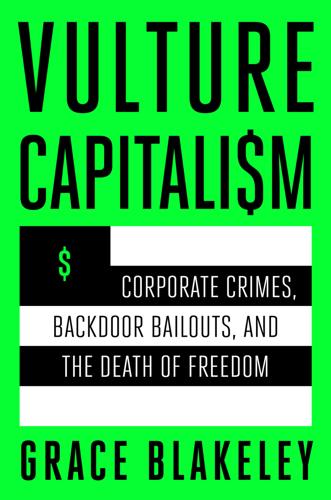
Vulture Capitalism: Corporate Crimes, Backdoor Bailouts, and the Death of Freedom
by
Grace Blakeley
Published 11 Mar 2024
But you might console yourself with the knowledge that your car runs on gasoline, given Volkswagen’s record of lying to the world about the impact of its diesel engines on the environment and your lungs.6 By the time the day ends, you’re exhausted—physically and emotionally. You open a food delivery app, and when the delivery driver arrives, you give him a small tip. He’s very grateful for the extra cash, because his motorcycle is on its last legs and he’s being faced with a choice between taking out a high-interest payday loan to fix it or using his bicycle instead, which will mean more work and far fewer deliveries.7 As you drift off to sleep, you plug in the cell phone manufactured in a warehouse in China where nets have been installed to catch workers who have tried to throw themselves out the window.8 This may or may not be an accurate depiction of your life.
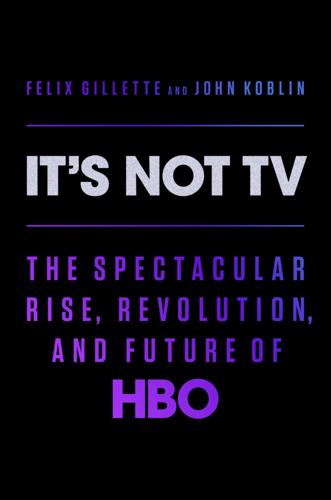
It's Not TV: The Spectacular Rise, Revolution, and Future of HBO
by
Felix Gillette
and
John Koblin
Published 1 Nov 2022
From 2006 to 2013, he served as the “senior British correspondent” and occasional guest host on Comedy Central’s The Daily Show with Jon Stewart. In 2014, he joined HBO and began hosting Last Week, a half-hour program taped in front of a studio audience. In each episode, Oliver would acidly dismember, at length, a particularly appalling stupidity in the news, ranging from capital punishment to net neutrality to payday loans. Critics heaped praise on the show, and it would go on to win the Variety Talk Series Emmy for six consecutive years. One Sunday night in October 2019, Oliver found a worthy target of his mockery close to home. “Have you heard about HBO Max?” Oliver said. “Looking to add another app and monthly charge to watch things?

Inflated: How Money and Debt Built the American Dream
by
R. Christopher Whalen
Published 7 Dec 2010
In the former group (United States, United Kingdom, Ireland, Spain, Iceland, Australia, and New Zealand) the response was one of democratization of credit that allowed households to borrow and spend beyond their means: the boom in mortgage and consumer credit (credit cards, auto loans, student loans, payday loans, subprime loans, and so on) led to a massive increase in private household debts that found it matching in the rising leverage of the financial sector (banks and shadow banks). This financial system leverage was abetted by reckless financial deregulation—repeal of Glass Steagall, non-regulation of derivatives, explosion of toxic financial innovation, rise of a subprime financial system, explosion of the shadow banking system.
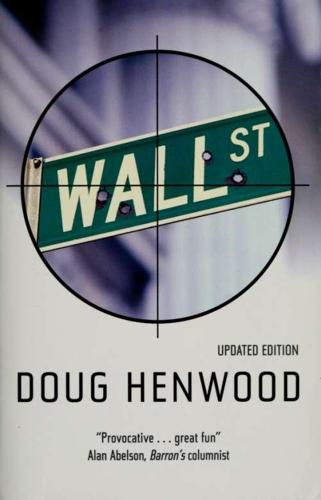
Wall Street: How It Works And for Whom
by
Doug Henwood
Published 30 Aug 1998
This survey excludes the lowlifes who take in $200-300 billion a year by preying on the poor and desperate — brokers who demand 20% on a WALL STREET second mortgage, pawn shops who charge 240% on loans, finance companies who charge 300%, check-cashing services that charge 2,000% for quick "payday" loans, layaway artists and rent-to-own schemers (Hudson 1996). While they're undoubtedly part of the financial industry, I'll ignore them; the point of this book is to tar the folks with the good reputations, if only to preempt the "bad apple" defense. funds of several sorts Individuals who deal with brokers can trade stocks, bonds, options, and other exotic instruments, but many also turn to mutual funds and other managed investment vehicles to do the research and trading work for them.

Data and Goliath: The Hidden Battles to Collect Your Data and Control Your World
by
Bruce Schneier
Published 2 Mar 2015
Want lists of people who fall into the category of “potential inheritor” or “adult with senior parent,” or addresses of households with a “diabetic focus” or “senior needs”? Acxiom can provide you with that. InfoUSA has sold lists of “suffering seniors” and gullible seniors. In 2011, the data broker Teletrack sold lists of people who had applied for nontraditional credit products like payday loans to companies who wanted to target them for bad financial deals. In 2012, the broker Equifax sold lists of people who were late on their mortgage payments to a discount loan company. Because this was financial information, both brokers were fined by the FTC for their actions. Almost everything else is fair game.
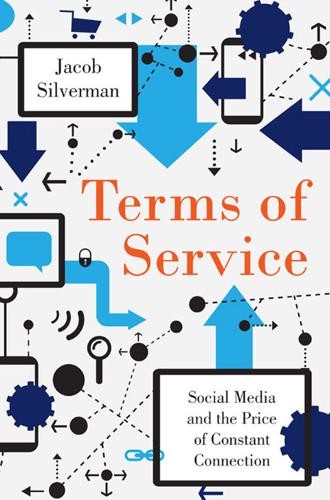
Terms of Service: Social Media and the Price of Constant Connection
by
Jacob Silverman
Published 17 Mar 2015
We are judged on the basis of our personal data and our social-media presence, with little opportunity to dispute its accuracy or confront a real human being. Like demographic, medical, or credit data, information gleaned from social media is increasingly being taken up with the promise that it can tell companies and governments about who people are and predict their actions. Lenders, from payday loan companies to mortgage giants, have taken to looking at customers’ social-media accounts. Their reasoning is that strong social networks may reveal a customer’s reliability, particularly if he lacks a credit history, and that this information may be more up-to-date than what’s contained in a credit report.

The Price of Inequality: How Today's Divided Society Endangers Our Future
by
Joseph E. Stiglitz
Published 10 Jun 2012
Many states tried to circumscribe its activities, but it used its political influence (it had senior ex-politicians, including a former leader of the Republicans in the House of Representatives, on its board) to try to get federal preemption (whereby weaker federal rules preempt the rights of states to regulate). In 2006 Rent-a-Center (with nationwide revenues in excess of $2 billion) was successfully sued by the state of California for deceptive business practices. See http://oag.ca.gov/news/press_release?id=1391. Credit cards and payday loans provided other venues for predatory practices. Among many discussions, see, e.g., Robert Faris, “Payday Lending: A Business Model That Encourages Chronic Borrowing,” Economic Development Quarterly 17, no. 1 (February 2003): 8–32; James H. Carr and Lopa Kolluri, Predatory Lending: An Overview (Washington, DC: Fannie Mae Foundation, 2001). 12.
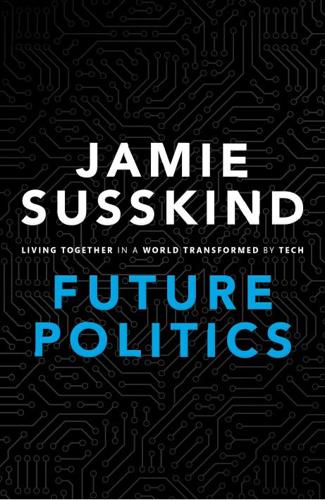
Future Politics: Living Together in a World Transformed by Tech
by
Jamie Susskind
Published 3 Sep 2018
The results OUP CORRECTED PROOF – FINAL, 28/05/18, SPi РЕЛИЗ ПОДГОТОВИЛА ГРУППА "What's News" VK.COM/WSNWS Algorithms of Distribution 269 they are shown directly delimit the set of options from which they choose in making their purchases.29 Often algorithms will apply class distinctions: online shopping platforms routinely display advertisements for payday loans to less well-off groups.30 Every algorithm of this kind will benefit some groups more than others. The question is, whose interests should they prioritize? The seller or the buyer? Rich or poor? These are quintessential questions of distributive justice. Algorithms and Price Finally, algorithms increasingly intervene in the most fundamental machinery of the market economy: the price mechanism.

The Price of Time: The Real Story of Interest
by
Edward Chancellor
Published 15 Aug 2022
Turgot himself defined interest as ‘the price given for the use of a certain quantity of value during a certain time’.60 Jeremy Bentham, in his Defence of Usury (1787), wrote that ‘putting money out at interest is exchanging present money for future [money].’61 Böhm-Bawerk, who like Turgot was also his country’s finance minister, wrote that ‘The natural difference in value between present and future goods … is the fountain-head from which all interest takes its origin.’62 Fisher saw interest as ‘the basic problem of time valuation … of translating the future into the present’.63 The Yale economist declared that ‘Interest is, as it were, human impatience crystallized into a market rate.’64 Fisher’s contemporary, the American economist Frank Fetter, claimed that interest would be ‘unthinkable if there were no differences relative to time in the estimates men placed on some goods available at different points of time’.65 Time preference explains interest on consumption loans, and why supposedly ‘usurious’ rates are not necessarily unfair. A payday loan of $20 to repay $25 at the end of the week makes for a very high annualized rate, but the borrower may put an even higher premium on a glass of beer and a square meal enjoyed that night. Time preference also determines how long investors are prepared to wait for a return on their capital. It was John Rae, a little-known early nineteenth-century Scottish economist, who first mooted a connection between investment and time preference (for which he was later credited by Böhm-Bawerk and Fisher).
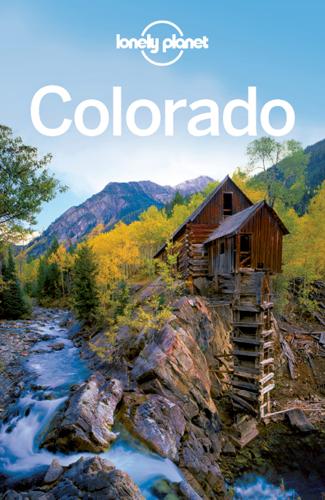
Colorado
by
Lonely Planet
Out back there’s a 13-building replica of old Main St from the 1930s along with a covered wagon. Together it all paints a picture of Sterling’s human and natural history. Further north of the interstate, Old Sterling sits in a cozy six-square block grid. Edged by an active railyard, it still has dated brick-house charm, but it’s a pretty depressed place with a few pawn shops and payday loan joints beckoning on the new Main St strip. Clearly, there’s no reason to stay the night in Sterling, but there is a fun place to eat. Eating J & L Cafe DINER $ ( 970-522-3625; 423 N 3rd St; mains $6.25-9.99; 5:15am-8pm; ) A local joint steeped in country music where the men wear cowboy hats and the women talk with a hint of western twang.

The Rise and Fall of American Growth: The U.S. Standard of Living Since the Civil War (The Princeton Economic History of the Western World)
by
Robert J. Gordon
Published 12 Jan 2016
In 1850, the Singer Sewing Machine Company began to sell its machines on installment to consumers through agents.10 By the 1870s, such a machine could be purchased for as little as $1 down and fifty cents per week. This stage of installment purchases extended beyond the prosperous classes to working-class households, including recent immigrants. The late nineteenth century also brought the development of “wage assignment” loans, similar to today’s “payday” loans, in which the collateral was a legal claim on the future wages of the borrower. Administering these loans required new types of information gathering, as borrowers could lie about the amount of their wages or the security of their employment. Lenders tended to favor workers who had stable employment, such as government or clerical workers, and they sometimes resorted to bribes to gain access to the payroll records of their borrowers.